While scrolling down below to find the
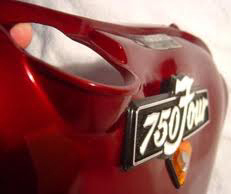


. . . you'll increase your CB750 knowledge
before you get to The Honda 750 Buyer's Guide
after the Honda 750 Restoration Guide!
Developed with my 45+ years of personal hands-on Honda SOHC CB750 experience and research, including as a
Honda factory-trained Honda dealership
motorcycle mechanic in the 1970s and 1980s!
I worked on these models at Honda dealerships
including crash restoration and/or back-to-stock from
butchered-customs WHEN THESE WERE NEW MODELS,
and more in the decades that followed too.
And I set up the '70s Honda 750 parts department for
a world-wide by UPS motorcycle-salvage parts business.

INDEX> Alphabetical topic index for this long page
The entire website is also a visual
US Honda 750 Restoration Guide eBook
. . . including actual Honda part numbers
for many frequently searched-for parts.
With many Insider Tips from my book
'HONDA 750 : Buying & Restoring 1969-1978 models'.
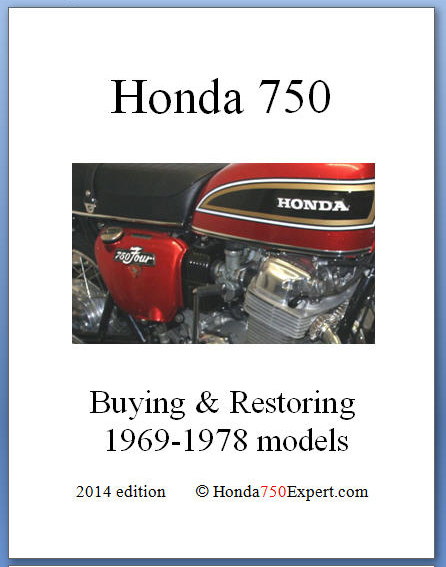
Enjoy the 160+ visual restoration & parts
sections as you scroll down to the Buyer's Guide!
This website is also a Key Parts Index
for 1969-1978 Honda 750 K, F and A models.
 But we can often recommend a parts source.
But we can often recommend a parts source. 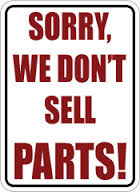
You can print out this entire website as a
nearly 300-pages 1969-1978 US Honda 750
Restoration Guide and Buyer's Guide eBook!
A link to an alphabetical index is at bottom.
Entire site and content ©Honda750Expert.com
New:
 Listed free,
Listed free, there are Honda 750s for sale (at very bottom of this long page!)
Also new:

A page just about replacement side covers
for Honda 750s (at very bottom of this long page!)
I am your 1969-1978 US
Honda SOHC 750 restoration expert
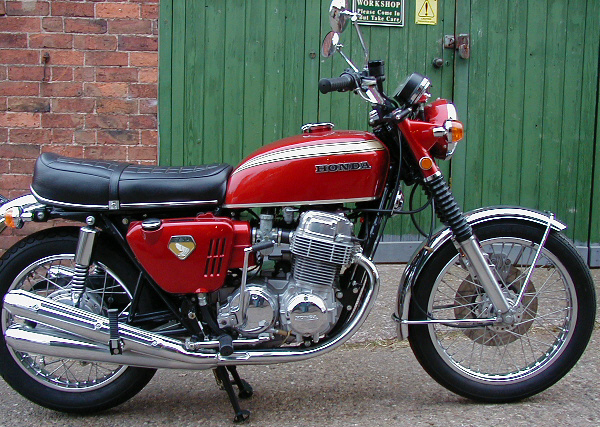
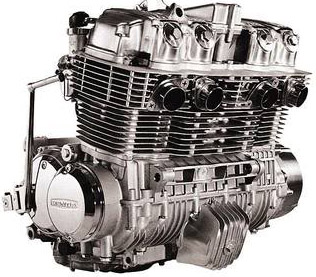
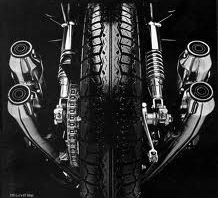

I am a USA-models factory-stock
appearance
evaluator to
consult for purchase,
sale,
restoration,
film accuracy,
museum,
insurance, and show competition.

Don't use 1981 motorcycles for a 1976-era film!
(818) 883-6969 Honda750Expert.com
If you can't find the information you need,
visit the 'alphabetical link'
index at here and at the bottom:
INDEX> Alphabetical topic index for this long page
Or you don't see it?

Request that we research it and add it here!
Questions? Email them with bike
or parts photos too. If the photos
will help others, we might add them!

1. Year-by-year Honda 750 US K, F, and A models
side-cover shapes and emblems!
___ ___ ___ ___ ___
Honda 750 US K models 1969 through 1978:



(1) 1969-1970 (2) 1971-1972 (3) 1973-1976


(4) 1977 (5) 1978
Note that for 1977-1978 K-models,
side covers no longer expose an oil tank cap.
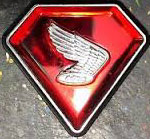
Red side cover diamond jewel = originally for 71.
Red diamond jewel, battery side= part #87126-300-405
Red diamond jewel, oil tank side= part #87127-300-405
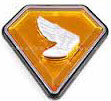
Orange side cover diamond jewel = originally for 72-76.
Orange diamond jewel, battery side= part #87126-341-405
Orange diamond jewel, oil tank side= part #87127-341-405
Some reproduction jewels are not exact.
Example: some are missing the Hm at base of the wings.

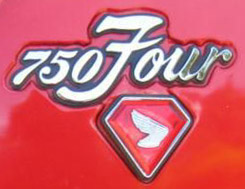
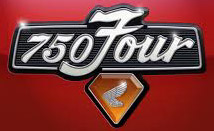
1969-1970 1971-1972 1973-1976


1977 1978
69-70 gold-around-white-wings emblem, 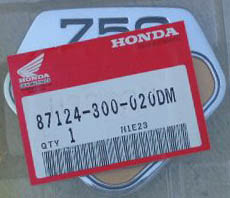
left side = part #87124-300-020
69-70 gold-around-white-wings emblem, right side = part #87123-300-020
71-72 plastic chrome '750Four' script emblem = part #87123-300-030
73-76 white metal '750Four' on black background emblem =
part #87123-341-673
77 gold '750FourK' emblem = part #87123-405-000
78 gold '750Four' emblem = part #87123-405-777
Tip: near the bottom of this long webpage, there is a
link to obtaining new replacement aftermarket sidecovers.
Insider tip: with most Honda-factory-made US-issue
1971
through 1976
no-vents 750K side covers
can use
either your choice
of the 71-72 or the 73-76
'750 Four' upper emblems above the diamond jewels
(the newer/bigger emblem covers the indenting
used by the older emblems
while most 73-76
covers still have the indenting used on the previous years);
these factory-issue no-vents covers themselves
should fit all K-model bikes models 1971-1976.
US Honda 750 K-model side cover part numbers:
K0 (up to serial #1044649)
(example of a US KO  cover shape/emblem)
cover shape/emblem)
K0 Left (battery cover), 83600-300-020 (followed by a two-letter color code)
K0 Right (oil tank cover), 83700-300-020 (followed by a two-letter color code)
US colors: AZ= Candy Blue Green CM= Candy Ruby Red CQ= Candy Gold
K1 (from serial #1044650)
(example of a US K1  cover shape/emblems)
cover shape/emblems)
K1 Left (battery cover), 83600-300-030 (followed by a two-letter color code)
K1 Right (oil tank cover), 83700-300-030 (followed by a two-letter color code)
US colors: AZ= Candy Blue Green CM=Candy Ruby Red
CQ= Candy Gold EE= Candy Garnet Brown EF= Valley Green Metallic
K2
(example of a US K2  cover shape/emblems)
cover shape/emblems)
K2 Left (battery cover), 83600-300-030 (followed by a two-letter color code)
K2 Right (oil tank cover), 83700-300-030 (followed by a two-letter color code)
US colors: LU= Briar Brown Metallic LV= Flake Sunrise Orange
K3
(example of a US K3  cover shape/emblems)
cover shape/emblems)
K3 Left (battery cover), 83600-341-701 (followed by a two-letter color code)
K3 Right (oil tank cover), 83700-341-701 (followed by a two-letter color code)
US colors: LY= Candy Baccus Olive QQ=Maxim Brown Metallic LV= Flake Sunrise Orange
K4
(example of a US K4  cover shape/emblems)
cover shape/emblems)
K4 Left (battery cover), 83600-341-701 (followed by a two-letter color code)
K4 Right (oil tank cover), 83700-341-701 (followed by a two-letter color code)
US colors: LV= Flake Sunrise Orange TC=Freedom Green Metallic TD= Boss Maroon Metallic
K5
(example of a US K5  cover shape/emblems)
cover shape/emblems)
K5 Left (battery cover), 83600-341-701 (followed by a two-letter color code)
K5 Right (oil tank cover), 83700-341-701 (followed by a two-letter color code)
US colors: MV= Planet Blue Metallic UE=Flake Apricot Red
K6
(example of a US K6  cover shape/emblems)
cover shape/emblems)
K6 Left (battery cover), 83600-341-701 (followed by a two-letter color code)
K6 Right (oil tank cover), 83700-341-701 (followed by a two-letter color code)
US color: ZB=Candy Antares Red Special
K7 and K8
(example of a US K7/8 
 cover shape/emblems)
cover shape/emblems)
K7/K8 83600-405-000 and 83700-405-000
(followed by a two-letter color code)
US colors: ZA= Candy Alpha Rd ZB=Excel Black
___ ___ ___ ___ ___
Honda 750 Super Sport US F-model side-cover shapes and emblems:


US Honda 750F Super Sport side cover part numbers:
Left (battery cover), 1975-1976 83700-392-000 (can be followed by a color code)
Left (battery cover), 1977-1978 83700-410-000 (can be followed by a color code)
Right (oil tank cover), 1975-1978 83700-392-000 (can be followed by a color code)
 <75-77F 78F>
<75-77F 78F> 
US Honda 750F Super Sport side cover emblem part numbers:
1975-1977 87127-392-000
1978 87127-410-770
___ ___ ___ ___ ___
Honda 750 Automatic US A-model side-cover shape and emblems:



US Honda 750A Hondamatic side cover part numbers:
Left, 1976: 83700-393-000
(followed by ZA if Muscat Green or ZB if Candy Antares Red)
Right, 1976: 83600-393-000
(followed by ZA if Muscat Green or ZB if Candy Antares Red)
Left, 1977: 83700-393-770
(followed by ZA if Candy Sword Blue or ZD if Candy Presto Red)
Right, 1977: 83600-393-770
(followed by ZC if Candy Sword Blue or ZD if Candy Presto Red)
Left, 1978: 83700-393-770
(followed by ZA if Candy Alpha Red or ZE if Candy Polaris Blue)
Right, 1978: 83600-393-770
(followed by ZB if Candy Alpha Red or ZE if Candy Polaris Blue)
(so per part number, it appears that 77 and 78
are identical to ach other except for color)
Note: Hondamatic side covers are the only that use mounting hardware)


Side cover emblem A (the '750' only), 1976-1978,
Honda 750 Automatic: part # 87111-393-000
Side cover emblem B (the 'HONDAMATIC' only), 1976-1978,
Honda 750 Automatic: part # 87113-393-000
____________________________________________________________
Do you need new unpainted aftermarket replacement sidecovers for your 750?
Replacement side covers for Honda 750
_____________________________________________________________
Note: Involves transition models.
Other part numbers, additional minor variations, changes
and/or crossovers may have occurred within some shown or listed types.
Entire site and content © Honda750Expert.com

2. Honda 750 US K-model
air filter case/housing assemblies

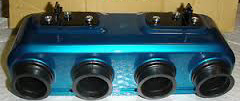



1969 to 1970, they were smooth and available in colors to
match side covers. Somewhat brittle and prone to cracking.
1971 to 1978, a stronger ribbed-surface
version was used, available only in black.
Beginning for 1973, air intake was restricted
using baffling to reduce intake roar!
Tip: the top half of the assembly is known as the air filter case;
the bottom half of the assembly known as the air filter cover.
In 1977 and 1978, the air filter cases had 'smog ports'.
More air filter information at Sections 48 and 114/115!
Note: Involves transition models. Additional minor variations, changes
and/or crossovers may have occurred within some shown or listed types.
Entire site and content © Honda750Expert.com
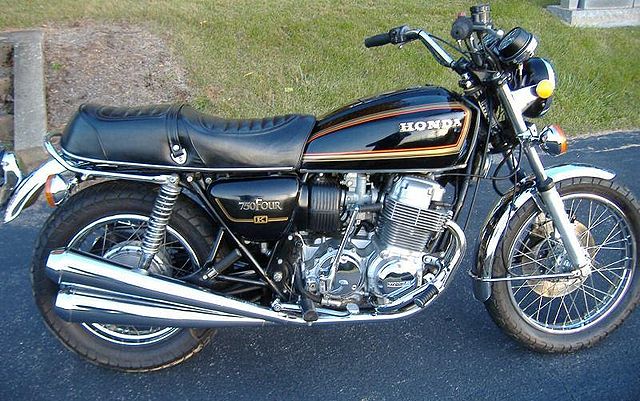

3. An example of
year-to-just-very-next-year
US visual changes
1970 > 
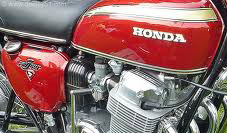 < 1971
< 1971
Different: 1. tank emblem colors, 2. side cover shapes,
3. side cover emblems,
and 4. air filter housing design & colors

4. "Why am I finding 3
different gas cap latches
on various
US 750 K-model years
throughout 1969 through 1976?"
There were 3 types:
factory original, factory recall, and aftermarket.
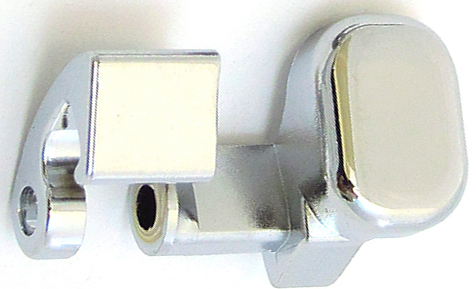
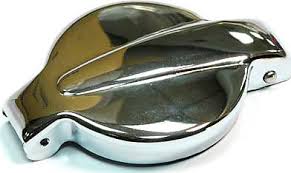
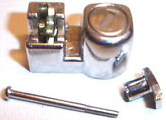
Regular thumb latch 'Recall' safety latch 17550-377-315
Blame it on the recall.
These defect notices were sent out:
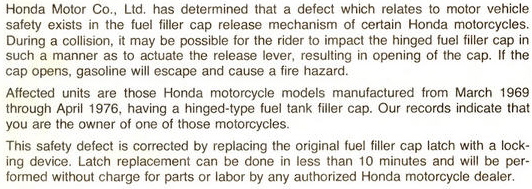
TIP: any 750 Honda ignition key
will open the recall safety latch.
40 years later, many dealerships still install it.
However, most 69-76 Honda 750K
buyers prefer the original latch.
1977-1978 K-models placed the
entire gas cap under a locking lid.
All F-models and A-models placed
the entire gas cap under a locking lid.
Least common is the aftermarket locking gas cap.


Sold in the mid-1970s, it used a hollow-center hex-shaped key.

5. The 4 main US K/F/A models '69-'78 750
headlight-area differences!


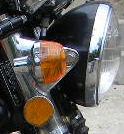
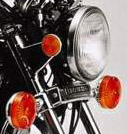
1969-1971 K-models: headlight shell and headlight
mounts are same color as the gas tank & side covers.
Uses turn signal stalks to mount headlight.
1972 K-model:
headlight shell is black; headlight mounts are chrome.
Uses turn signal stalks to mount headlight.
1973-1976 K-models:
headlight shell is black; headlight mounts are chrome.
Turn signal stalks mount in a hole
rearward of headlight mounting hardware.
1977-1978 K-models:
headlight shell is black; headlight mounts are chrome.
1975-1978 F-models:
headlight shell is black; headlight mounts are chrome.
1976-1978 A-models:
headlight shell is black; headlight mounts are chrome.
1969-1971 K-models: small reflectors.
1972-1978 K-models: larger reflectors.
1975-1978 F-models: larger reflectors.
1976-1978 A-models: larger reflectors.
1969-1976 K-models:
turn signals are about parallel
with headlight centerline.
1977-1978 K-models:
turn signals are below headlight.
1975-1978 F-models:
turn signals are below headlight.
1976-1978 A-models:
turn signals are below headlight.
Turn signal information at Sections:
5 (headlight area photos),
7 (rear turn signal mounts),
16 (turn signal lenses and turn signals),
65 (chrome grab bars) and
110 (front turn signal mounts)!
Note: Involves transition models. Additional minor variations, changes
and/or crossovers may have occurred within some shown or listed types.
Entire site and content © Honda750Expert.com

6. --- Gas tank emblems for Honda 750 K/F/A ---
Gas tank emblems and their backgrounds,
69-78 Honda US 750 K-models
1.  2.
2. 
3.  4.
4. 
1. Black letters onto tank color, 1969-1970
2. White letters onto tank color, 1971-1972
3. White letters onto black tank panel decal, 1973-1976
4. Gold letters onto tank color, 1977-1978
Gas tank emblems,
69-78 Honda US 750 K-models
1.  2.
2. 
3.  4.
4. 
1. 69-70K tank emblem, black letters with polished
edges on its own small black background = 87124-300-020
2. 71-72K tank emblem, white letters
on its own small black background = 87123-300-020
3. 73-76K tank emblems, white letters on its own black
background = right 87121-341-700, left 87122-341-700
4. 77-78K tank emblem, gold letters on
its own black background = 87122-405-000
Insider tip:
use the correct-color (black) mounting screws.
Use a black Sharpie marker pen to
touch-up a scratch on a black screw.
Insider tip: on some models, left and
right tank-side emblems are the same;
on some, they are different.
On some models, later one of the
'side' emblems was discontinued,
causing later use of the only remaining
choice to be used on both sides.
Usually not noticeable.
Emblems are a soft bendable metal as
to follow curves of either side of tank.
Gas tank emblems,
75-78 Honda US 750 F Super Sport-models
1.  2.
2. 
1. 75-76F Super Sport tank emblem,
gold HONDA letters on its own black background =
right
87121-392-000 left 87122-392-000
2. 77-78F Super Sport tank emblem,
gold HONDA SUPER SPORT letters
on its own black background =
right
87121-410-000 left 87122-410-000
Gas tank emblems,
76-78 Honda US 750 A Hondamatic-models
1. 76A Hondamatic tank emblem,
gold HONDA letters on its own black background =
right
87121-393-000 left 87122-393-000
2. 77-78A Hondamatic tank emblem,
gold HONDA letters on its own black background =
right
87121-393-770 left 87122-393-770
Note: Involves transition models.
Additional minor variations, replacement part numbers,
changes and/or crossovers may have occurred within some shown or listed types.
Entire site and content © Honda750Expert.com

7. 3 different US 750 K-model
rear-signal mountings through the years!



69-71: on frame 72-76: on grab rail

77-78: under a longer grab rail
Note: K0-K1 rear signals mount to the frame, not to the grab rail,

using 'Stay' 33607-292-000B.
Note: K7-K8 rear signals mount to the frame, not to the grab rail,

using 'Stays' 33606-405-000 (R) and 33607-405-000 (L).
Turn signal information at sections:
5 (headlight area photos),
7 (rear turn signal mounts),
16 (turn signal lenses and turn signals),
65 (chrome grab bars) and
110 (front turn signal mounts)!
Note: Involves transition models. Additional minor variations, changes
and/or crossovers may have occurred within some shown or listed types.
Entire site and content © Honda750Expert.com

8. Correct standard spark plugs
and spark plug caps US 69-78 750K




Outer caps: NGK XD05F Standard plug: NGK D8EA
Inner caps: NGK SD05F Plug gap: .024-.028

9. Most often, which general-style
gas valve
('petcock')
do the US 750 K-model gas tanks use?
1969-1974 > 
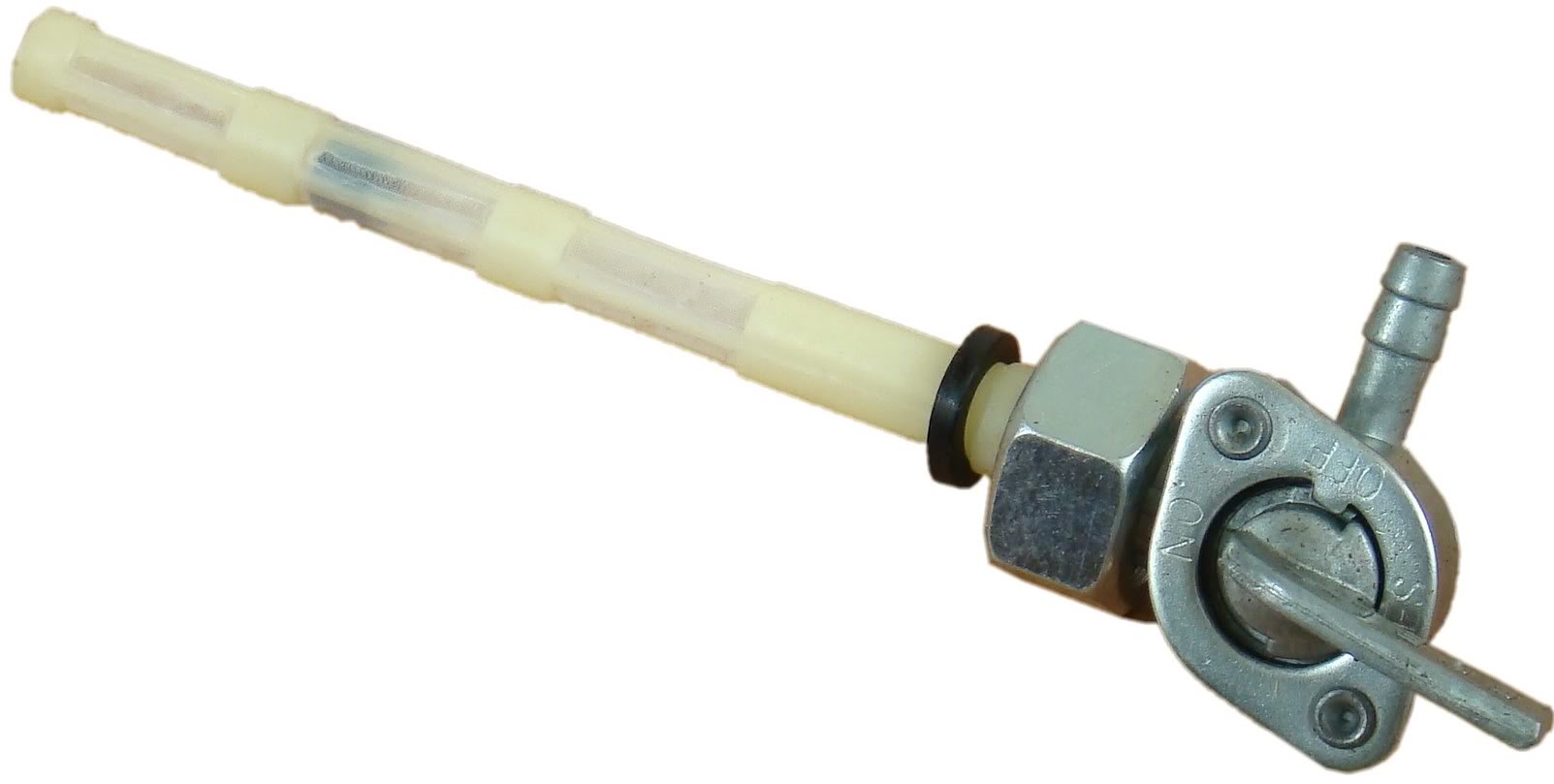 < 1975-1978
< 1975-1978
Seated, by your right leg Seated, by your left leg
Note: height from bottom of tank to bottom of petcock,
additional minor variations and/or changes may
have occurred within some shown or listed types.
Photo above/right shows white nylon
screening used on
newer model petcock.
Older model uses this brass screen,
found
above removable lower bowl (crud always there):

Note:
Some earliest/first 1975 K-model
gas tanks are said to have used
the 69-74 petcock and on the 'old'
right side, see this blue example:
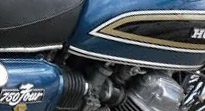
Insider tip:
Older-style petcock has both 'short' and 'tall' versions.
Insider tip:
The older-style petcock has two gas lines leaving it,
feeding the carburetors at their two inlets.
The newer style petcock has only one gas line leaving it,
going to a fuel-line tee, then the tee 'fuel joint'
feeding the carburetors at their two inlets.
Insider tip:
On newer style petcocks, watch for
which direction the single outlet is pointing.
Some point down, some point right, some point left, etc.
Insider tip:
Some early/first 1975 K model gas tanks are said to have
used the 69-74 petcock and have it on the 'old' right side.
Some US 750 K-model petcock part numbers to Google:
1969-1974, two brass outlets: 16950-300-020
1975-1976, single brass outlet: 16950-341-671
1977-1978, single brass outlet: 16950-393-015
'Tee' fuel joint: 16235-657-000
Insider tip: fuel tee 16235-657-000 is also
used on some older Honda Civic and Accord cars,
so it can often be purchased in the
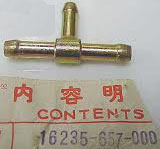
parts department of Honda car dealerships.
Note: Involves transition models. Additional minor variations, different part numbers,
changes and/or crossovers may have occurred within some shown or listed types.
Entire site and content © Honda750Expert.com

10. Which US K-model ignition switch to use?
Check the wiring harness plug.



Round plug, under tank: 1969, some 1970/1971.
Square plug, under tank: some 1970/1971, 1972-1976.
Up between gauges, block plug behind headlight,
has the fork lock built into it: 1977-1978.
Example of a 72-76 matched replacement ignition/fork lock/seat lock set:

Insider tip:
Some aftermarket ignition switches
are very inferior to OEM switches.
Note: Involves transition models. Additional minor variations, changes
and/or crossovers may have occurred within some shown or listed types.
Entire site and content © Honda750Expert.com

11. Standard sprockets used, all US
Honda 750 models 1969-1978 K/F/A
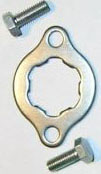 (69-76 type shown here)
(69-76 type shown here)

1. Standard sprockets used,
US 750K models 1969-1978
1969-1970 #530 chain, 17 front / 45 rear 1971 #530 chain, 17 front / 48 rear
1972-1976 #530 chain, 18 front / 48 rear
1977-1978 #630 chain, 15 front / 41 rear
- - - - - - - - - -
2. Standard sprockets used,
US 750F Super Sport models 1975-1978
1975-1976 #530 chain, 17 front / 48 rear 1977-78 #630 chain, 14 front / 43 rear
Note: 1976 F-models use a 'peppier' one-tooth-smaller
front sprocket than same year K-models.
Note: 1977-1978 F-models use 'peppier' both
front & rear sprockets than same year K-models.
- - - - - - - - - -
3. Standard sprockets used,
US 750A Automatic models 1976-1978
1976 #530 chain, 17 front / 48 rear 1977-78 #630 chain, 15 front / 42 rear
Note: 1976 A-models use a 'peppier' one-tooth-smaller
front rear sprocket than same year K-models.
1969-1976 530 front sprocket type
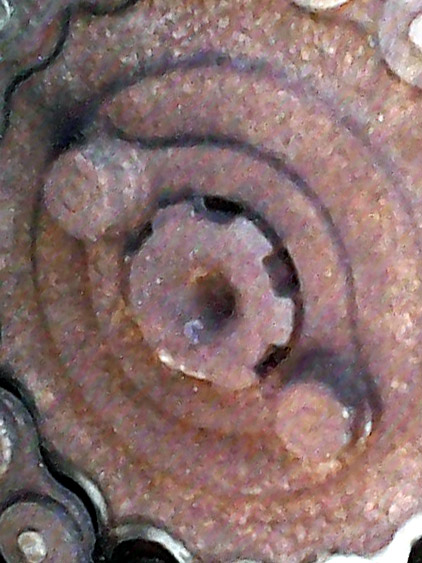
(above and below photos chosen for ease of showing
sprocket-trapping comparison only, as 1969-1975

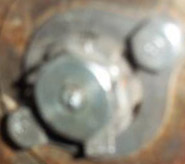
models also had some automatic chain-oiling hardware
similar to this above at/in this end of shaft)
1977-1978 630 front sprocket type

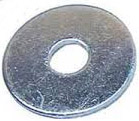
 Honda 750
Honda 7501969-1976 front sprockets were trapped on the shaft by a
retainer known as a 'fixing plate' using two 6mm hex bolts.
The fixing plate matched a grove on the shaft;
then slightly turned like a key;
the two 6mm hex bolts into the sprocket locked it in place.
This same front sprocket retainer, 23811-292-000,
was used on many other older Honda street & dirt bikes.
However, at least three different length 6mm hex bolts were used
through the years, including: some 1976
models used 12mm long, 920000-6012,
superseded by 92101060120A, and some
1972 models used 12 mm or 16mm long.
1977-1978 front sprockets were trapped on the
shaft by a flat washer bearing an 8mm hole
and an 8mm bolt (possible different lengths) with lock washer,
the bolt threaded into the center of the end of the shaft
(possible now because past automatic chain-oiling parts
stopped using these threads since 1976).
The 8mm flat washer is 90401-405-000, the 8mm X 20mm
bolt used at least one year was 93402-0802000.
Both types will actually slide onto any year shaft.
Insider tip:
Some past owners of 69-76 530-equipped
sprockets and chain have purposely changed them
'up-size' to the bigger but less-popular 630 replacement kits.
More common though-- some past owners of
77-78 630-equipped sprockets and
chain have purposely changed 'down-size' to the
smaller but more popular 530 replacement kits.
QUESTION: "Hey, I once saw a CB750 with
a double-chain. What year model was that?"
ANSWER: Not factory Honda. Was an aftermarket part.
An example below:


Note: Involves transition models. Additional minor variations, changes
and/or crossovers may have occurred within some shown or listed types.
Entire site and content © Honda750Expert.com
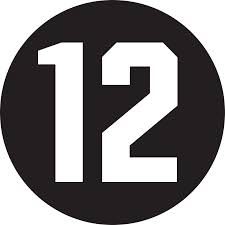
12.
US K-model 1969-1978 general seat styles
-older-to-newer from top-left to bottom-right-
(seat hinges and seat hinge pins too)
--K-model seats followed below by seats for
75-78 SuperSport F models and 76-78 Automatic A models--
1  2
2 
1. 1969-1970 K (ducktail): 77200-300-020A 2. 1971 K: 77200-300-030A
3 
3. 1972-1976 K: 77200-341-701
4  5
5 
4. 1977 K: 77200-405-000
5. 1978 K (stitching on side near rear,
& taller rear-portion than 77K): 77200-405-770
Seat key lock and plastic document door under seat began 1972.
Also different cover patterns throughout the years.
Above photos, while chronological, can not show all
possible variations of: inner seat foam type and color,
seat pan changes, vent holes in seat pans, upholstery
trim and cover changes. Ducktail variants have been observed too.
Note: new original seats are still available for some years.
And seat covers, with the silver word
HONDA dyed on correctly, are available.
And reproduction seats are available,
some with a plastic seat pan instead of metal.
Honda parts fische indicates that the 'ducktail' seat,
77200-300-020A, was only used through frame #1044649.
That was the last frame number of the 1969-1970 K0 model.
Same parts fische indicates that seat #77200-300-030A
was used beginning with frame #1044650, which was
the very first frame number of the 1971 year-model K1.
Seat hinge pins!

1969-1976 K models: 77203-300-000 (uses two)
1977-1978 K models: 77203-405-000 (uses two)
Seats for Honda 750 SuperSport F-models
1975-1976: 77100-392-000
(add ZA at end of part number if for
Flake Orange Sunrise rear-of-seat plastic cover cowl)
(add ZB at end of part number if for
Candy Sapphire Blue rear-of-seat plastic cover cowl)
(add ZD at end of part number if for
Sulphur Yellow rear-of-seat plastic cover cowl)
(add ZE at end of part number if for
Candy Antares Red rear-of-seat plastic cover cowl)
1977-1978: 77100-410-770
(add ZA at end of part number if for
Candy Presto Red rear-of-seat plastic cover cowl)
(add ZB at end of part number if for
Black rear-of-seat plastic cover cowl)
Seats for Honda 750 Automatic A-models
1976: 77200-393-670
1977: 77200-393-772
1978: 77200-393-781
SEAT HINGES
USA K0-K6 has seat hinges on the right (brake lever) side
USA K7-K8 has seat hinges on the left (clutch lever) side
USA K0-K1 both hinges are the same
77201-300-010
USA K2-K6 used two different hinges
77201-341-000 (Hinge A, closest to front)
77201-300-010
USA K7-K8 used two different hinges
Hinge A, 77201-405-000
Hinge B, 77202-405-000
Under-seat rubber blocks information is at Section 79!
Custom seat information is at Section 155!
Note: Involves transition models.
Additional minor variations, part number changes,
changes and/or crossovers may have occurred within some shown or listed types.
Entire site and content © Honda750Expert.com
Yes, you are getting closer to
the actual below!
below!
( But this entire webpage is also a visual
Honda 750  )
)

13. Honda 750 gauges: 1969-1978 US
speedometers and tachometers
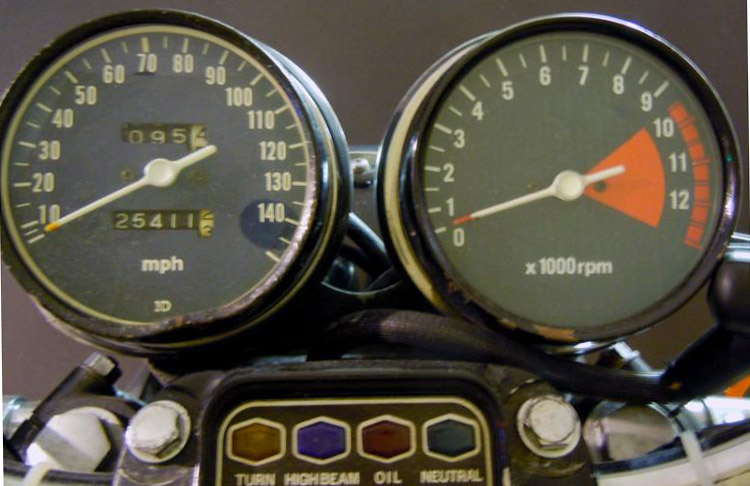

1969-1970: plastic cases with acrylic lenses,
with warning light jewels in gauges.
Gauges held on by chrome 'meter bracket'
bands to 'unicorn'-style top fork bridge.
1971: glass lenses, with warning light jewels in gauges.
Gauges held on by chrome 'meter bracket'
bands to 'unicorn'-style top fork bridge.
(note: it is reported that in Europe and
some other counties outside of the US,
the 'unicorn' style was used
through the 1975 K-model year)
1972-1978: metal cases with glass lenses,
with NO warning light jewels in gauges.
Transition model--
some US 1972 gauges held
on by chrome 'meter bracket'
bands to 'unicorn'-style top fork bridge.
(note: it is reported that in Europe and
some other counties outside of the US,
the 'unicorn' style was used
through the 1975 K-model year)
A gold transition 1972 K2
model with 'unicorn' and

with warning lights panel.
Note it has K1-type tachometer with the earlier jewel indicators.
1973-1978 gauges bolted to small black meter plates,
then that bolts to top fork bridge.
(note: it is reported that in Europe and some
other counties outside of the US,
the 'unicorn' style was used
through the 1975 K-model year)
Insider tip:
Over the years, there were many
US-model changes to increments,
face colors (greens, blues) and
shades of those, redline areas, etc.
K0>
 K1>
K1>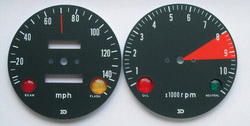
K2-K3>
 K4-K5>
K4-K5>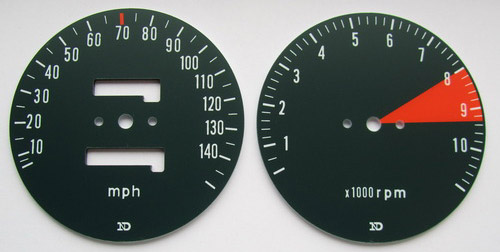
K6>
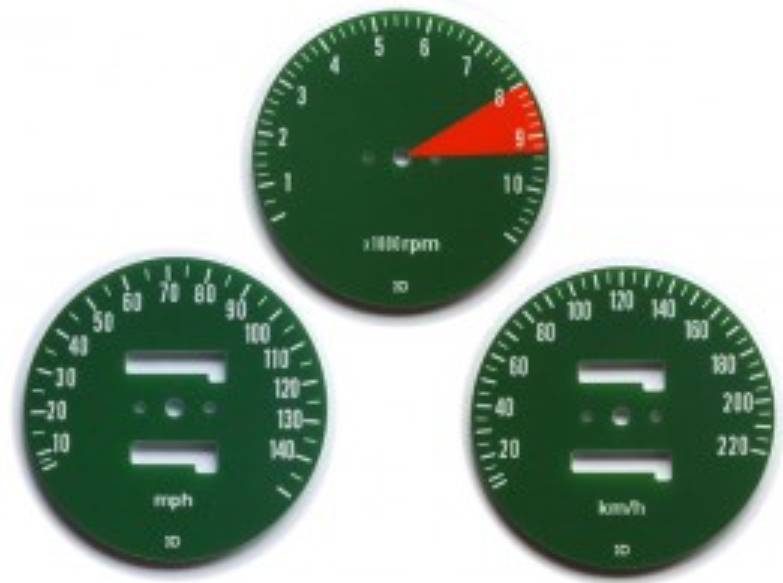 K7-K8>
K7-K8> 
Gauge face photos above are courtesy of Marcel at www.CB750faces.com,
who does gauge restorations and supplies gauge parts.
Larger versions of these gauge face
photos are way below at section #113.
Note: Involves transition models. Additional minor variations, changes
and/or crossovers may have occurred within some shown or listed types.
Entire site and content © Honda750Expert.com

14. Standard chains used,
all US Honda 750 models 1969-1978
 1. Standard chains used,
1. Standard chains used,
US 750 K-models 69-78:
1969-76: #530 chain, 100 links
1977-78: #630 o-ring chain, 88 links
 2. Standard chains used,
2. Standard chains used,
US 750 F Super Sport models 75-78:
1975-76: #530 chain, 102 links
1977-78: #630 o-ring chain, 88 links
 3. Standard chains used,
3. Standard chains used,
US 750 A Automatic models 76-78:
1976: #530 chain, 104 links
1977-78: #630 o-ring chain, 88 links
Unusual aftermarket chains:
1. Chrome chains.
2, Double chains:


More chain-related:
Chain GUARDS at Section 79!
Chain ADJUSTERS at Section 127!
AUTOMATIC CHAIN OILER at Section 159!
Note: Involves transition models. Additional minor variations, changes and/or crossovers may have occured within some shown or listed types.
Entire site and content © Honda750Expert.com

15. Honda 750 K-model
general warning light types US 1969-1978


1969-1971 1972-1976

1977-1978
Insider Tip: there were 3 different versions of
the 1972-1976 style warning light panel.
Note: Involves transition models. Additional minor variations, changes
and/or crossovers may have occurred within some shown or listed types.
Entire site and content © Honda750Expert.com

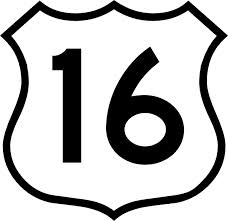
16. Honda 750 K-model
A: turn signal lenses and B: turn signals
US 1969-1978
Note: Honda refers to turn signals as 'winkers'.
A:
Only 2 main Honda 750 K-model
US turn signal lens types:
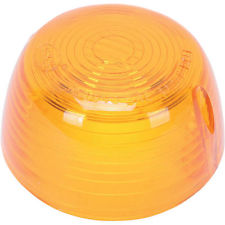
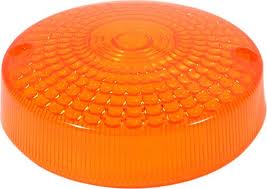
1969-1974 1975-1978
It's small and tall! It's wide and almost flat!
1969-1974 turn signal lens: 33402-268-672
1975-1978 turn signal lens: 33402-377-671
1969-1974 needs two lens cross screws: 93700-030250B
1975-1978 needs two lens pan screws: 93500-040250A
1969-1974 lens gasket: 33443-268-671
1975-1978 lens gasket: 33406-377-671
The tiny letters on lenses can reveal some origin & other information.
 Special note:
Special note: 
Should you run across a
red turn signal lens
on a US 1969-78 K-model:
In America, red was not issued
on 69-78 US-sold Honda 750s.
It was in some other countries and it
was/is available here after-market.
One available 1975-1978 (larger type)
red turn signal lens is 33402-377-810.
NOTE:
some states do not allow red lenses facing front.
B:
K-model US turn signals
(chrome body & lens & lens gasket/screws portion):
1970-1971:
left front: 33450-292-670
right front: 33400-292-672
left rear: 33650-300-000
right rear: 33600-300-000
1973:
left front: 33450-341-702
right front: 33400-341-702
left rear: 33650-300-000
right rear: 33600-300-000
1978:
left front: 33450-377-671
right front: 33400-377-671
left rear: 33650-374-671
right rear: 33600-374-671
Turn signal information at
Sections:
5 (headlight area photos),
7 (rear turn signal mounts),
16 (turn signal lenses and turn signals),
65 (chrome grab bars) and
110 (front turn signal mounts)!
Note: Involves transition models.
Additional minor variations, replacement part numbers,
changes and/or crossovers may have occurred within some shown or listed types.
Entire site and content © Honda750Expert.com

Standard batteries used,
all US Honda 750 models 1969-1978
1. The standard Honda 750 battery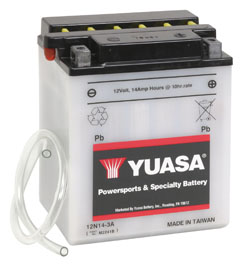
for K-models 69-78:
Yuasa 12N14-3A, installed via opening
the
K-model seat
and removing
retainer strap and two post/cable bolts.
Disconnect breather tube by
pulling
it down a half inch.
Battery lifts straight up & then out.
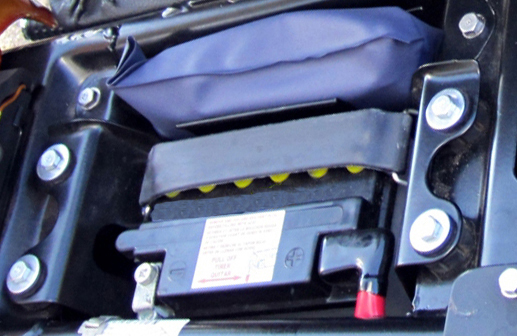
WARNING:
positive cable should have a boot covering
its ends and the positive battery post.
- - - - - - - - - - - - - - - - - - - -
2. The standard Honda 750 battery
for F-models 75-78:
Honda 750 Super Sports use Yuasa 12N14-3A,
same as all K-models do.
- - - - - - - - - - - - - - - - - - - -
3. The standard Honda 750 battery 
for A-models 76-78:
Honda 750 Automatics use Yuasa Y50-N18L-A,
which was known in the 70s
as 'the Gold Wing battery'.
Insider tip: often overlooked- on all models,
when installing the new long clear battery
vent/overflow hose, make sure it is inserted
in/through all proper guides top to bottom;
if not, you will lose paint or chrome due
to battery acids acid spittle.
Known for staining exhausts.
Insider tip: acid spittle can also ruin chains.
Below decal is from 1976 K-model inner fender:
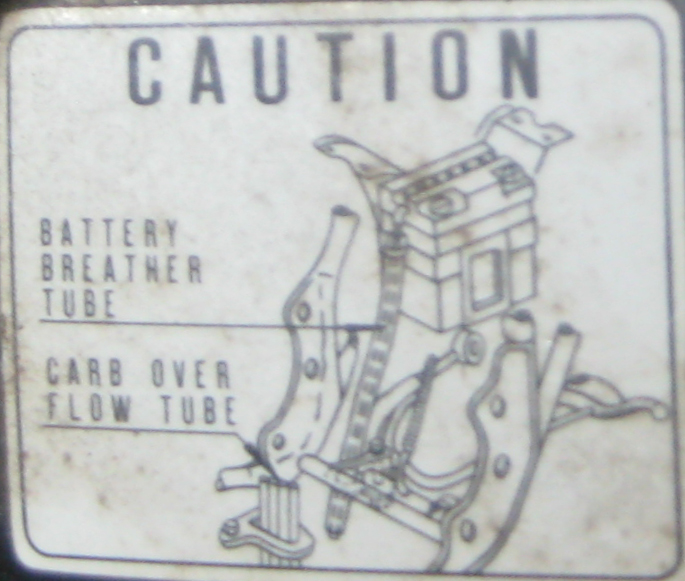
Note: Involves transition models.
Other part numbers, additional minor variations,
changes and/or crossovers may have occurred within some shown or listed types.
Entire site and content © Honda750Expert.com

The two US 1969-1978 Honda 750 tail light shapes:


1969-1971 1972-1978
gasket & gasket &
2 screws 4 screws
Red, with clear at bottom to illuminate license plate;
some replacements had amber portions on sides.
Very small letters & numbers on the lenses
can reveal some origin information.
Smaller red and clear lens, US 1969-1971: 33702-077-611
1969-1971 lens gasket: 33709-077-671
69-71 lens screws, needs two of these 4x50 cross-screws:
93500-040-504J
Larger red and clear lens, US 1972-1978: 33702-341-671
1972-1978 lens gasket: 33709-341-671
72-78 lens screws, needs four of these 4x55 pan screws: 93500-040-554J
Note: Involves transition models.
Other part numbers, additional minor variations,
changes and/or crossovers may have occurred
within some shown or listed types.
Entire site and content © Honda750Expert.com
You are almost to the
Disk brake calipers for US K-model
Honda 750s 1969-1978

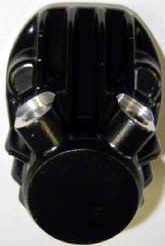

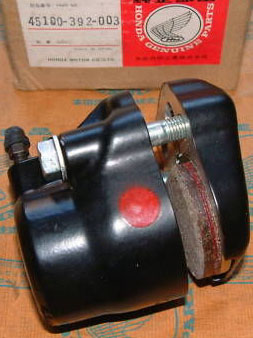
Calipers were silver 1969-1970, were black 1971-1976,
and new-style 1977-1978 caliper was black.
Part numbers for US K-model complete caliper assemblies:
K0, up to final frame 1044649, a silver caliper: 45100-300-023
K1, from frame 1044650 (the first K1 model), late 1970,
the first black caliper: 45100-300-023B
K2-K6, a black caliper: 45100-341-003
K7-K8, a black caliper: 45100-392-003
There were two main K-model caliper 'pivot' joint
(mounting arm) design styles used 1969-1978:
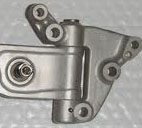 <C bracket style>
<C bracket style>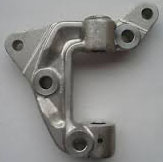
 <T style>
<T style>
1969-1971: C-shaped bracket style 45104-300-040B
1972: C-shaped bracket style 45104-300-040
1973-1976: T-shaped style 45104-317-700
1977-1978: T-shaped style 45104-405-000
Example of a 1971 caliper 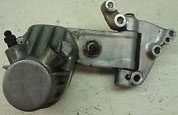
Honda 750 C-bracket-style mount
Watch for sticky/binding pivots.
A disk splash-guard began with 1973 model. 
Replacement brake pads for 1969-1976
K-models are the same (see below);
they are round and use male --protruding-- locators.

1977-1978 K-model brake pads are slightly
different than the earlier model's pads,
and they have female (notch-only) locators.
Note: some owners of K1 and newer models
chose to remove the black color from their
caliper, leaving it a bare silver color.
So, a silver caliper found on a 71 or newer
750 isn't necessarily
from a 69-70 model.
Note: Involves transition models. Additional minor variations, changes
and/or crossovers may have occurred within some shown or listed types.
Entire site and content © Honda750Expert.com
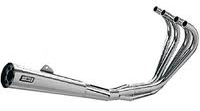
I can also evaluate proper period-correct
after-market exhaust
systems of that era
(Kerker, Winning Performance, Jardine,
RC Engineering, Strader, etc)

20. Maintenance specifications
for Honda 750K 1969-1978
Points gap: .012-.016 inch
Points: 30203-300-154 and 30204-300-154
(left and right are different)
Complete points plate with points
and condensors: 30200-300-154
Spark plugs, standard: NGK D8EA
Spark plug gap: .024-.028 inch
Spark plug caps:
outers- NGK XD05F inners- NGK SD05F
Valve clearance adjustment, cold engine:
intake .002 inch / exhaust .003 inch
Oil Filter (internal paper cartridge with 2 seals):
Honda 15410-426-010
K&N KN-401
Fram CH6009
Chain: 1969-1976 530 X 100 1977-1978 630 X 88
Battery: 12N14-3A
Note: Involves transition models. Additional part numbers, minor variations, changes and/or crossovers may have occurred within some shown or listed types.
Entire site and content © Honda750Expert.com

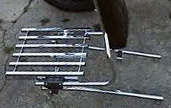
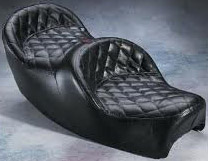

I can also evaluate
proper period-correct accessories of
that era
(gas gauges, chain enclosures,
racks, seats, oil gauges, etc)

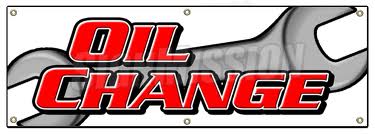
21. K-model oil change tips and some visual cues
You need to drain the dirty oil at 3 spots: the oil tank, its bolt (92800-12000) and washer (94109-12000)
peeking from under a plastic side cover;
the oil filter housing at the front of the engine,
bolt (15420-300-020);
and from the crankcase oilpan drain plug (92800-12000)
& washer (94109-12000) at the bottom of the engine.

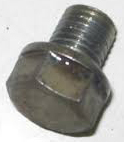

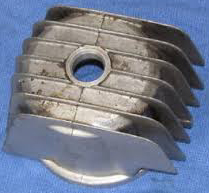




Oil Filter
(internal paper cartridge with 2 added seals:
large seal for filter housing to engine case,
small seal for filter bolt):
Honda 15410-426-010 K&N KN-401 Fram CH6009
NAPA PS4940 Purolator ML16809 WIX 24940
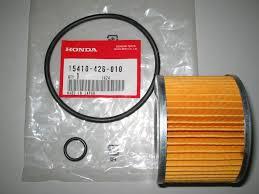


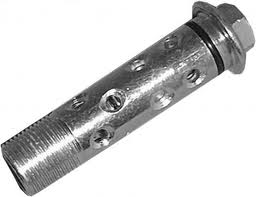
Standard filter center bolt is 15420-300-020
Insider tip:
The original oil filter bolt uses a small
12mm head that often gets rounded.
There is an after-market bolt that
uses a larger 17mm head instead.
However, this larger bolt-head can
more easily lead to overtightening,
that leading to disasterous crankcase-threads strippage.
Whichever bolt is used, use anti-seizure on its threads,
and torque to proper setting.
Using the proper 12mm-head bolt with the
proper wrench & torque is the correct method.
Insider note: in 1969, Honda 750s
used an oil filter bolt that required
a 14mm wrench. In January 1970,
Honda changed it to a bolt that used a
12mm wrench, to reduce overtightening damage.
Honda Service Bulletin CB750 #13.
Many forget the correct assembly order:
The filter spring (15415-300-000) around
the filter bolt (15420-300-020) goes on
the inserted filter bolt (15420-300-020)
BEFORE the washer (15414-300-000) does,
with filter (15410-426-010) put on the bolt last.
Insider tip: That washer might be stuck to the
old filter if you don't see it,
hidden in a layer of oil.
Filter housing > then bolt > then spring > then washer >
then filter > then bolt threads into engine.
Insider tip:
If you strip-out the threads of the crankcase
drainplug hole at the bottom of the engine,
the crankcase itself is not damaged--
it's a headache, but you can replace the oil pan.
Insider tip:
Don't use oil that says 'Conserves Energy' or
'Resource Conserving' or 'Energy Conserving'.
Those oils are meant for a car engine that doesn't
have a clutch sitting in the same oil as the engine.
They have anti-friction additives that
could make the Honda's wet clutch slip.
Insider tip:
Many owners use 10-40 oil,
or use 20-50 oil in hotter temperatures.
Note:
There are also 'spin on' external oil filters
(like a car uses) available.
Note: Involves transition models.
Other part numbers, additional minor variations,
changes and/or crossovers may have occurred within some shown types.
Entire site and content © Honda750Expert.com
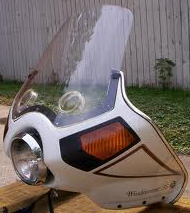

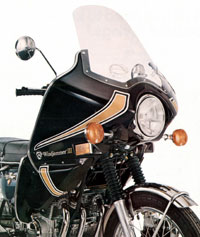
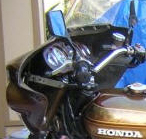
I can also evaluate proper
period-correct accessory windshield
systems
of that era (Windjammer, Wixom, Jackal, etc)

The 3 different US K-model original grip styles used 1969-1978!


1969-1971 1972-1976

1977-1978
Left (clutch-lever side):
1969-71 95011-14200;
1972-76 53166-342-670;
1977-78 53166-390-780.
Right (throttle side):
1969-71 95011-14100;
1972-76 53165-342-670;
1977-78 53165-390-780.
Note: Involves transition models.
Other part numbers, additional minor variations,
changes and/or crossovers may have occurred within some shown or listed types.
Entire site and content © Honda750Expert.com.
I can also evaluate if gauges
are exact proper year (not just close).
Points cover,
1969-1978 US Honda 750 all models K, F, and A
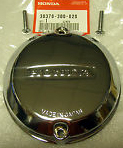
Cover: 30370-300-020 Screws: 93700-06032
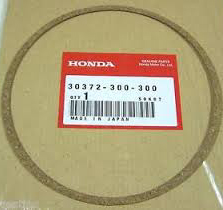
Gasket: 30372-300-300
Note: other part numbers, additional minor variations, changes
and/or crossovers may have occured within some shown or listed types.
Entire site and content © Honda750Expert.com
24. Dynamo cover
for Honda US 750 K-models 1969-1978
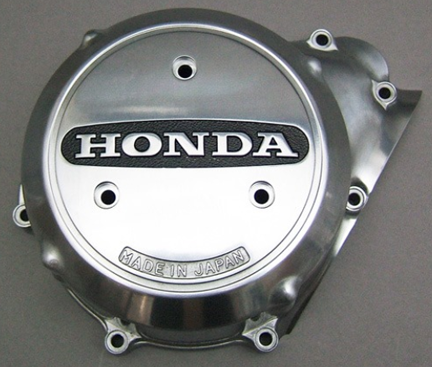
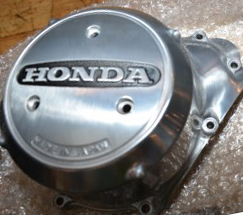

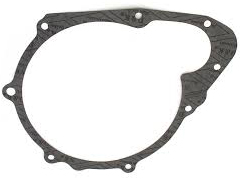
Sometimes also called an 'alternator'
cover or an 'AC generator' cover.
cover: 11631-300-040 gasket: 11397-300-040
the 3 center face (to field coil inside) screws: 93500-06020
the 3 center face washers: 90425-300-000
Note: 1977-1978 F-model SuperSports used a black cover:
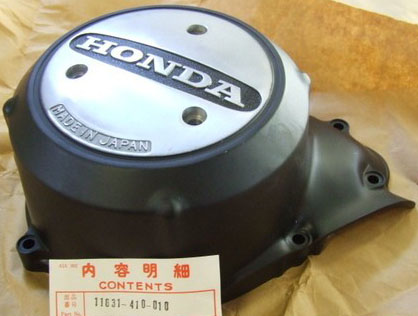
Note: other part numbers, additional minor variations, changes
and/or crossovers may have occurred within some shown or listed types.
Entire site and content ©Honda750Expert.com
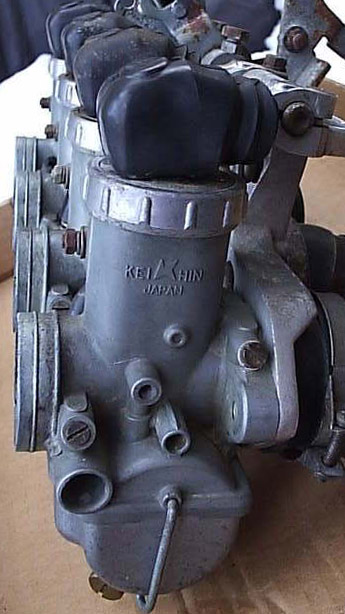
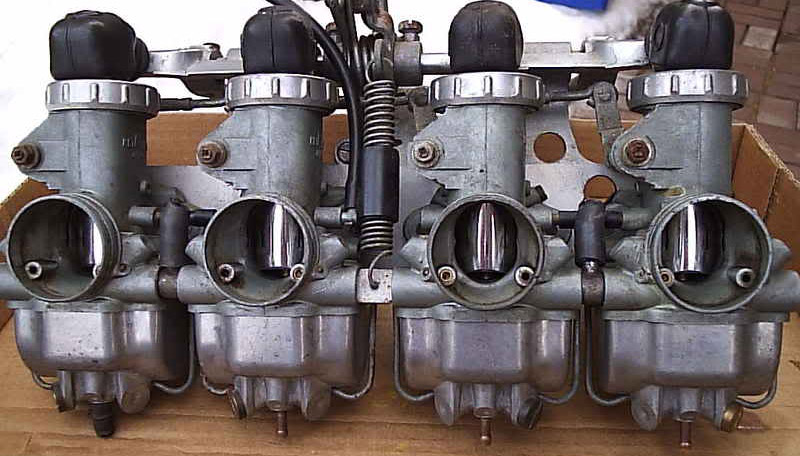
I can also evaluate if carburetion
is proper year (not just close).
The 3 chrome tail-light mount shapes,
US Honda 750K 1969-78

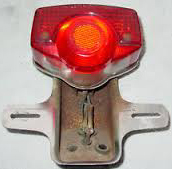
1969-1971 pod 1972-1976 bracket
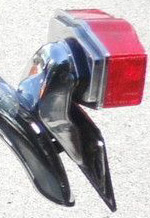
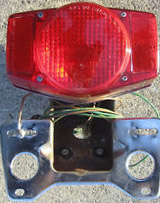
1977-1978 pod
Honda refers to both pod and bracket types as
'Bracket, Number Plate'.
69-71 chrome pod only: 84701-300-671XW
72-76 chrome bracket only: 84701-341-670XW
77-78 chrome pod only 84700-393-670, superseded by 84700-425-870
Note: Involves transition models. Additional minor variations, part number changes,
changes and/or crossovers may have occurred within some shown or listed types.
Entire site and content © Honda750Expert.com
The three Honda 750 horn types
US all-models 1969-1978 K/F/A


Above: chrome-cover type, all 1969-1976 K&F models.
.jpg)




Above: flat silver, 1977-1978 K & A models.
Above: dual-horns a few inches apart from the other,
silver edges with black centers,
1977-1978 Super Sport F-models.
Insider Tip:
The horn used for the first 3,850 US K0-models
was gray with a chrome cover.
The next 49,000 US K0-models used
black horns with a chrome cover.
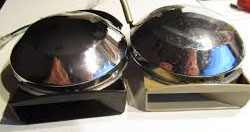
Then horns for all K1 through K6 models
were black with a chrome cover.
K-model horn part numbers
K0 (up to frame 1003850): 38100-300-013
K0 (from frame 1003851): 38100-300-023
K1 through K6: 38100-300-023
K7-K8: 38110-392-6213
Insider Tip:
The two horns used together on the dual-horn
77-78 Honda 750-F Super Sport models
were not identical to each other--
one was 'high' note, one was 'low' note.
Insider Tip:
The horn used for the first 3,949 US
K0-models was mounted on left side.
Note: Involves transition models. Additional minor variations, changes
and/or crossovers may have occurred within some shown or listed types.
Entire site and content © Honda750Expert.com


The 2 carb choke-activation types,
Honda 750 K-models 1969-1978




1969-1976: metal lift-up lever, below gas tank, lever pivots on outer carb left (clutch lever) side.
1977-1978: cable 17950-404-670 to new-style carbs,
pull-knob is up next to speedometer.
Insider tip: the mount under the choke cable
pull-knob for all 1977-1978 models is often
found broke off at its mounting bolt,
leaving the choke cable found swinging loose.
This mount is known as 'Stay, Choke Cable',
and is part #17951-404-670.
Fits all US models of Honda 750
1977-1978: K,F, and A.

Choke cable, 1977-1978 Honda
750 K and F models: 17950-404-670
Note: other part numbers, additional minor variations, changes
and/or crossovers may have occurred within some shown or listed types.
Entire site and content © Honda750Expert.com


Which years of 750 K-model handlebars use
internal (hidden) switch wiring?



1969 through 1976 do.
Upper portions of these bars use bar-bottom
oval holes to fish switch wiring through the
bars and out the lower center bigger oval and
then into the rear opening of headlight case.
Correct bars for 69-76 also have a
small hole near each upper oval,
used for switch internal locator pins
to lock switches from turning.
Warning: the wiring holes can slice
and short wiring if any have sharp edges.
Note: Involves transition models. Additional minor variations, changes
and/or crossovers may have occurred within some shown or listed types.
Entire site and content © Honda750Expert.com

Bar switch wiring that came from factory
fully exposed and black zip-tied along the outside
of the bars is the 1977-1978 K-models.
More handlebar information at Section 31!

"I found 4 different chain guards
supposedly for Honda 750.
Which is correct for my US K-model?"
Black plastic: K-models 1969-1971
Watch for different lengths, hardware, metal stiffener collars
under bolt/washers, collared washers, and a
metal stiffener near underside center.
Possible different mounting types
on the 69-71 K-models on a
year-by-year basis so be sure that separation
measurements between all mounting bolt
holes on the replacement chain guard
are same as those of mounts on bike.

Black metal: K-models 1972-1976
Watch for different lengths.
Will not directly replace 69-71 plastic
as different mounting tabs separation.
Black metal: K-models 1977-1978
Watch for different lengths.
Chrome metal: none came from Honda on
69-78 K-models these years in chrome:
but they did come ONLY in chrome on
76-78 A Automatic and 75-78 F Super Sport models!
 << (1978 Honda 750F)
<< (1978 Honda 750F)However, a K-model chrome chain guard was a
then-popular aftermarket accessory model.
Insider tip: Watch for any correct factory
instructional stickers on most model chain guards.
Note: Involves transition models. Additional minor variations, changes
and/or crossovers may have occurred within some shown or listed types.
Entire site and content © Honda750Expert.com
Purple is 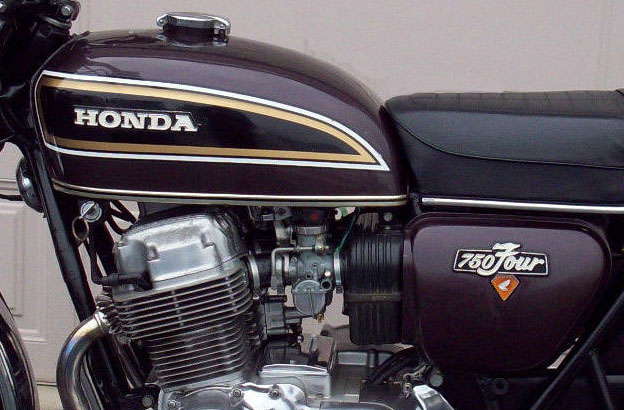
Boss Maroon Metallic!
30. The 3 different center stands used

for US Honda 750 K-models 1969-1978
(followed by F-model SuperSport and
A-model Hondamatic center stand listings)
These are also known as a
'main-stand' and a 'step-stand'.
1969-1973 US K-models: 50500-300-020
1974-1976 US K-models: 50500-300-020B
1977-1978 US K-models: 50500-405-000
Improvements that occured included adding a strengthening portion,
and also making a
slightly-larger (10mm) welded metal sheet ground base,
both for more stability when using stand.
Many 750s with no center stand had them removed because it was
required to do so to use certain aftermarket exhaust pipes.
Note: if you are replacing a missing K-model centerstand,
there are also several special  hardware pieces you must use:
hardware pieces you must use:
'Main stand plate' 50523-300-010 (the crescent-shaped piece)
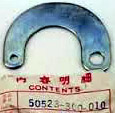
'Main stand pipe' 50526-300-000 (the pivot pipe)

2.5mm cotter pin 94201-25300 (at end of the pivot pipe)
Shouldered 8x40 hex bolts 92000-080-400A
(pinches mounts around the pivot pipe; needs two)
(bolts superceded by 92101-080-400A)
8mm hex nuts 94001-800-00S (need two)
(nuts superceded by 94030-08000)
Flat 8mm washers 94101-08000 (needs four)
Main spring K0-K5 50522-300-010
(spring superceded by 95014-71700)
Main spring K6 95014-71700
Main spring K7-K8 95014-71702
--and possibly a stopper for when centerstand is in the 'up' position
Spring goes from centerstand to main stand plate;
main stand plate hooks to frame.
Insider tip: when the K-model centerstand is 'up' (while riding),
it requires a 'stopper', usually found on the left side.
Originally it was a black rubber block on a lower left exhaust muffler.
With custom exhausts it was usually a L-shaped bent piece of metal.
Without, the chain often touches the centerstand.
F-model SuperSport center stands
1975: 50500-392-000, superceded by 50500-392-010
1976: up to serial number 2021927- 50500-392-000,
superceded by 50500-392-010
1976: after serial number 2021927- 50500-392-010
1977 and 1978: 50500-410-000
A-model Hondamatic center stands
1976: 50500-392-010
1977 and 1978: 50500-393-770
Note: Involves transition models.
Additional part numbers, minor variations,
changes and/or crossovers may have
occurred within some shown or listed types.
Entire site and content © Honda750Expert.com
I do appraisals for factory-stock condition;
ratings, assessments, and evaluations only for


1969-1978 Honda 750s:
models A, F, and K
31. The 4 different factory handlebars used
for US Honda 750 K-models 1969-1978
Honda sometimes calls them
'steering handle pipes'!
(followed by F-model SuperSport and
A-model Hondamatic handlebar listings)

All are 7/8".
(Holes for internal switch wiring 1969-1976;
external switch wiring used 1977-1978)
1969-1971 K-model: 53100-300-000
Width- 32 inches Rise- 5 inches Pullback- 5.5 inches
1972 K-model: 53100-341-000
Width- 28.25 inches Rise- 3 inches Pullback- 4 inches
1973-1976 K-model: 53100-341-700
Width- 31 inches Rise- 4.5 inches Pullback- 6 inches
1977-1978 K-model: 53100-405-010
Width- 31.5 inches
Measuring handlebars
(All measurements are made in normal riding position)
Width: Total overall tip to tip width, no grips or bar end weights.
Rise: Total height measured in a level plane.
Pull Back: Vertical lines from the furthest forward to rear in a level plane.
F-model SuperSport handlebars
1975-1976: 53100-341-700 <same as 73-76 K-models
1977-1978: 53100-410-000
A-model HondaMatic handlebars
1976: 53100-393-000
1977-1978: 53100-393-770
from bar ends for locator pins from the switches.
More handlebar information at Section 28!
Note: Involves transition models.
Additional part numbers, minor variations, changes
and/or crossovers may have occurred
within some shown or listed types.
Entire site and content © Honda750Expert.com
32. Insider Secret:
What the center number in a part number
typically reveals in many US Honda 750
K/F/A model part numbers
300 = generally, this part began or was modifiedto during 750 K-model years 1969 to 1971
323 = generally, this part began or was modified
to during 500 K-model year 1973
333 = generally, this part began or was modified
to during 350-Four model year 1973
341 = generally, this part began or was modified
to during 750 K-model years 1972 to 1976
392 = generally, this part began or was modified
to during 750 F-model years 1975 to 1976
393 = generally, this part began or was modified
to during 750 A-model years 1976 to 1978
405 = generally, this part began or was modified
to during 750 K-model years 1977 to 1978
410 = generally, this part began or was modified
to during 750 F-model years 1977 to 1978
Example:
CB750 1973-1975 left-side mirror: 88120-333-000
This 73-75 750 mirror's 333 center number indicates that this mirror was
first designed for or used on the smaller Honda 350-F four-cylinder model.
Insider tip:
'model year' often starts many
months before 'calendar year' starts.
Insider tip:
In some states, on the ownership titles of many Honda 750s,
the year of first sale is often used as the bike's year,
not necessarily the same as its true model year.
Note: Involves transition models. Additional minor variations, changes
and/or crossovers may have occurred within some shown or listed types.
Entire site and content © Honda750Expert.com
33. Seat-latch types US Honda 750 K 1969-1978
They used from simple latching types at first, then seat key locktypes that matched the fork lock key and ignition switch key.
(Generally older-to-newer pieces from left-to-right;
numbered to assist with describing by phone)
1.
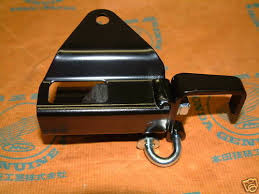 2.
2. 3.
3.
4.
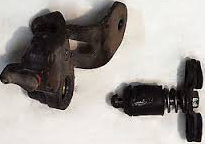 6.
6.Earliest models: look for different levers, catches,
springs, hooks, pull directions, latches.
1971 was considered a 'transition' model,
from latch style into key style.
Most seat key models match the fork lock key and ignition switch key
unless past singular replacement. Often available as a matching set.
Minor continual small changes caused many year-to-year part
numbers to be 'superseded by' one or more new part numbers.
Simple non-key latch models were 1969 into 1971.
All 1972-1978 K-models were seat key-lock models.
Terminology: the newer-style 'spring plunger' is known to Honda as a
'seat lock bar assembly', the key portion known as 'lock assembly'.
Lower and upper latches on
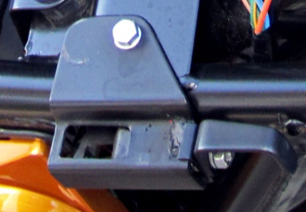

an early 1971 Honda 750
Some past used seat latch/lock part numbers:
69-70 77230-300-000 70-71 'transition' 77230-300-010
72 'plunger' 77220-340-011 but later superseded by 77220-340-010
72 lock assembly 77230-340-013 but later superseded by 77230-347-003
73-76 'plunger' 77220-340-003 but later superseded by 77220-340-010
73-76 lock assembly 77230-107-711 but later superseded by 77230-107-711
77-78 'plunger' 77220-340-003 but later superseded by 77220-340-010
77-78 lock assembly 77230-399-007P
Lower and upper latches on a
 1972-1976 Honda 750
1972-1976 Honda 750Note:
On 69-76 K-models,
the seat latch is on the left (clutch lever) side.
On 77-78 K-models,
the seat latch is on the right (brake lever) side.
Note: Involves transition models.
Additional minor variations, different part numbers,
changes and/or crossovers may have occurred
within some shown or listed types.
Entire site and content © Honda750Expert.com
34. The 3 brake pedal differences
US Honda 750 K-models 1969-1978

(followed by F-model SuperSport and
A-model Hondamatic brake pedal listings)
QUESTION: "After right-side crash damage, I replaced the brake pedal with a used one.
I now find it doesn't have the horizontal piece
used for the pedal adjustment/stop-screw.
Weren't all-year K brake pedals the
same as my US 1974 Honda 750K?"
ANSWER: No- your replacement is lacking the
tab pointing most-upward in this photo:

(the tab points horizontally inward
toward the bike when pedal is installed;
see actual tab wear-spot from adjuster stop-bolt
on this photo looking down from above it).
Stop-bolt and locknut is
 seen in background.
seen in background.All years had a vertical (upright when on bike)
piece with a hole for the pedal return spring.
But until into the K-1 model towards K-2, there was no
brake pedal adjuster or stop screw, so no horizontal tab.
Summary: there were three different types 69 through 78.
1977-1978 pedals were different in multiple ways.
K 1969-1971 46500-341-000
K 1972-1976 46500-341-670
K 1977-1978 46500-405-010
F-model SuperSport brake pedals
1975-1976: 46500-392-000
1977-1978: 46500-410-000
A-model HondaMatic brake pedals
1976: 46500-393-000
1977-1978: 46500-393-771
Note: Involves transition models.
Additional minor variations, different part numbers, changes and/or
crossovers may have occurred within some shown or listed types.
35. Of the 16 paint color choices,
which was the most-often
available paint color choice
for US Honda 750 K-models
1969-1978 when they were new?
While 11 colors were issued as a choice
in the US for one K-model year each
(Candy Blue Green 1969/70 color codes AZ and PB2C;
Valley Green Metallic 1971 color code EF;
Candy Garnet Brown 1971 color code EE;
Briar Brown Metallic 1972 color code LU;
Candy Buccus Olive 1973 color code LY;
Maxim Brown Metallic 1973 color code QQ;
Freedom Green Metallic 1974 color code TC;
Boss Maroon Metallic 1974 color code TD;
Flake Apricot Red 1975 color code UE;
Planet Blue Metallic 1975 color code MV;
and Antares Red 1976 color code R-6C-S).
and 4 colors were available in the
US for two K-model years each
(Candy Gold 69/70-71 color codes CQ and Y2C;
Candy Ruby Red 69/70-71 color codes CM and R4C;
Excel Black 77-78 color code NH-57 or ZB;
and Candy Alpha Red 77-78 color code R-9C-S or ZA),
only one color was offered as a choice
for three full model years:
Flake Sunrise Orange
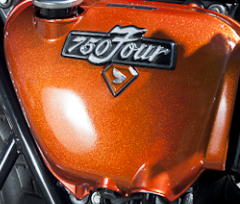
1972, 1973, and 1974.Color code LV.
Perhaps it was popular because it had 'bigger sparkles'
than all the color choices available before it.
Flake Sunrise Orange used a Candy Orange
topcoat color over a FLAKE Silver basecoat;
the other 'metallic' colors instead used the
'smaller sparkle' METALLIC Silver basecoats.
 <1972 Flake Sunrise Orange
<1972 Flake Sunrise Orange 1973-1974>
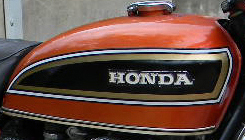
In this entire 10-year K-series,
only one other US-available color choice offered
when new used the bigger FLAKE basecoat
under the color- 1975's Flake Apricot Red (below):
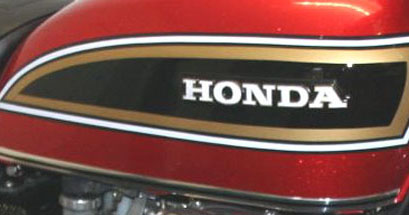
Both of these 'Flake' colors seemed extra
sensitive to sun-fading damage on the tank-top.
More paint/color information
at Section 46 and Section 146!
Note: additional minor variations, different part numbers,
changes and/or crossovers may have occurred
within some shown or listed types.
Entire site and content © Honda750Expert.com

36. Only two different
swingarm grease fittings/nipple types
and
locations
were used on Honda
1969-1978 US 750 K-models
. . . and that helps eliminate some of the wrong
choices when buying a used K-model swingarm.
(followed by F-model SuperSport and
A-model Hondamatic swingarm listings)

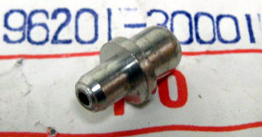
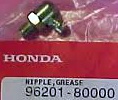

Above/Left:
1969-1975 US K-model swingarms
used two straight push-in 4.5 grease fittings,
one at the each end of the swingarm pivot bolt ends
(see above left, to rear of rear brake light foot switch).
Some choose to instead thread the holes
and then use automotive fittings.
No grease fitting was actually
on the black swingarm itself.
A push-in grease fitting is
96201-30001.
Above/Right:
1976-1978 US K-model swingarms used
one bent-angle screw-in grease fitting,
threaded into the bottom side center of the swingarm
(see above right).
This threaded bent-angle grease fitting is 96201-80001.
Before you change a swingarm,
usually you'll find that the old 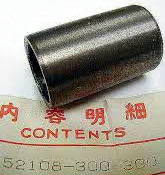
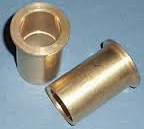
swingarm only needs bushings.
But sometimes you will need a swingarm.
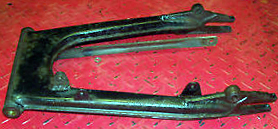
However, there were 5 different K-model swingarms used
to measure & compare during those 10 years!
1969-1970 K-model swingarm: 52100-300-030B
1971 K-model swingarm: (a 'transition' model)
52100-300-050B
1972-1975 K-model swingarm: 52100-341-0000B
(last of the dual push-in grease nipples)
1976 K-model swingarm: 52110-341-900ZA
(a single threaded grease nipple on swingarm)
1977-1978 K-model swingarm: 52100-405-000ZA
(a single threaded grease nipple on swingarm)
F-model Supersport swingarms:
75-76F 52110-392-000ZA
77-78F 52100-410-000ZA
A-model Hondamatic swingarms:
76A 52110-393-000ZA
77-78A 52100-405-000ZA
Note: Involves transition models.
Additional minor variations, different part numbers,
changes and/or crossovers may have
occurred within some shown or listed types.
Entire site and content © Honda750Expert.com

37. Salvage-yard and Internet searchers:
there were
4 different
kickstands
used on US K-model 750s 1969-1978!
(followed by F-model SuperSport and A-model Hondamatic kickstand listings)
1969-1972 K-models: 50530-294-000
(was superseded by 50530-341-670,
the 73-74 750 kickstand)
1973-1974 K-models: 50530-341-670
(kickstand below in red block)
(Based on part numbers and supercede numbers,
it appears that one kickstand,
50530-341-670, can be used by
Honda 750 K-models 1969-1974).
1975-1976 K-models: 50540-341-670
has a rubber kick-up extension
1977-1978 K-models: 50540-405-010
also has rubber kick-up extension
(kickstand below in photo)
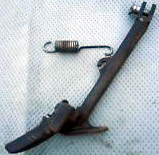
The 'rubber kick-up block' used 1975-1978 is the
same part-number each of those years: 50548-356-700.

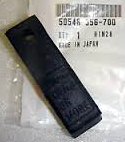
Even better, the same kickstand
('sidestand bar') 10mm x 1.25 pivot
shoulder bolt and its 10mm-thread
nut can be used the entire series:


kickstand (side-stand bar) 'screw' (kickstand pivot bolt):
90108-283-000,
and its side-stand nut: 94031-10000 or 94031-110000.
Springs: 1969 through 1978 used at least 4 different

K-model kickstand (sidestand) spring part numbers:
Spring K 1969-1974 is usually 95014-72400,
and that spring is usually superseded by 95014-72401;
about 1975 is spring usually 95014-72401
and that is usually superseded by spring 95014-72402, and
spring K 1977-1978 is usually 95014-72402.
Older numbers were also used on
many other different Honda motorcycles.
Compare all lengths and designs.
Used springs might be stretched a bit over years of use.
F-model Supersport kickstands:
75-78F 50540-390-000
A-model Hondamatic kickstands:
76A 50531-393-000
77-78A 50531-393-770ZA
Insider tip:
some older 750K kickstand part numbers were
also the same used on some smaller Honda motorcycles.
Insider tip:
a suspected-bent kickstand sometimes isn't bent;
the landing of the kickstand can also be affected by
1) fork tube length different from stock,
2) rear shocks different length from stock,
3) tire height different from stock, and
4) rear wheel change from stock.
Insider tip: the kickstand pivot bolt threads into 2 things--
the kickstand's threads, and into the nut.
Insider tip:
if you find a used kickstand marked Honda 750
but it has a top hole or pivot link
or it has unusual notch or hardware at its top,
it likely has come from a 'Hondamatic' model--
that kickstand going down also puts the 'automatic'
transmission in neutral! (below in green blocks)
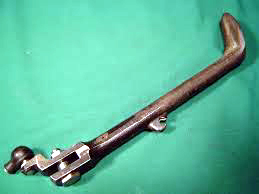

Note: Involves transition models.
Additional minor variations, different part numbers,
changes and/or crossovers may have occurred
within some shown or listed types.
Entire site and content © Honda750Expert.com
38. Follow the history of the
5 main different
MIRROR models
used on US K-model 750s 1969-1978!
(followed by F-model SuperSport and
A-model Hondamatic mirror listings)
Almost any set, original or a 10mm x 1.25 -threads
upstalk aftermarket, will work
for almost any 750K year
(except for the first 302 K0 models, which used 11mm).
Year by year, watch for
changes to
length
of stems
(7", 8", etc) and to diameter of
round portions (4", 4 1/2", etc).
Some look like the mirror glass is glued in, others look
like a rubber lipseal is holding in the mirror glass.
Watch for frozen pivot areas.
But for collectors and restorers,
here is a good general guide.
#1. The 69-70 750K 'acorn-nut clamp' model, AKA:
'the first design', or 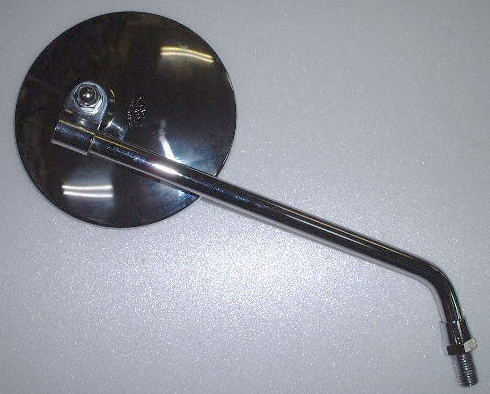
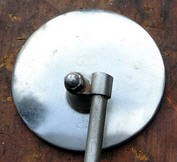 the 'K-0 type'.
the 'K-0 type'.
1969-1970 right-side acorn-nut clamp model, 88110-300-000
1969-1970 left-side acorn-nut clamp mirror, 88120-300-000
The smallest mirror glass diameter.
Watch for different words, logos and other by
acorn nut on backside of original mirrors.
Several changes. Watch for replicas.
Watch for different upstalk lengths and glass diameters.
Soon later,
Honda stopped offering the 69-70 left acorn-nut mirror,
superceding
(replacing it) with
the 69-70 right-side mirror's part number.
This only worked because you can loosen the
clamp-nut
and then flip the mirror around,
making a
right-side mirror also become a left side mirror!
Known as a 'transition model'.
Insider Tip:
The first 302 bikes used 11mm thread; after that, 10mm.
#2. Next came the 1971-1972 750K mirrors.
No more 'acorn nuts'.
1971-1972 right-side mirror: 88110-074-000,
it later superseded by 88110-329-730.
1971-1972 left-side mirror: 88120-074-000,
it later superseded by 88120-329-730.
Insider tip:
This model mirror was used new on many other models,
including Mini-Trails and small-cc trail bikes!
#3. The 1973 through 1975 750K mirrors.
Bigger mirror glass diameter.
1973-1975 right-side mirror: 88100-333-004,
it later superseded by 88110-333-611.
1973-1975 left-side mirror: 88120-333-004,
it later superseded by 88120-333-610.
Insider tip:
The 73-75's 333 center number indicates this
one was first designed for a smaller
Honda (350-F) four-cylinder model.
And its 333-610 superseding number
is to the 1976-1977 750 mirror!
#4. The 1976-1977 750K mirrors.
1976-1977 K-model right-side mirror:
3 part numbers, final superseding to 88100-333-611.
1976-1977 K-model left-side mirror:
3 part numbers, final superseding to 88120-333-611.
#5. End of the era: the 1978 750K mirrors.

1978 K-model right-side mirror: 88110-333-611.
1978 K-model left-side mirror: 88120-333-611.
F-model Supersport mirrors:
75-78F right-side mirror 88110-333-611
75-78F left-side mirror 88120-333-611
A-model Hondamatic mirrors:
76A right-side mirror 88100/88110-375-770
76A left-side mirror 88110/88120-375-770
77/78A right-side mirror 88110-333-611
77/78A left-side mirror 88120-333-611
Note: Involves transition models.
Additional minor variations, different part numbers,
changes and/or crossovers may have
occurred within some shown or listed types.
Entire site and content © Honda750Expert.com
39. Watch when buying used front sprockets:
there were two completely different methods used
to retain Honda US 750K front sprockets to the shaft;
530 sprockets from 1969-1976 sprockets use one way,
630 sprockets from 1977-1978 use the other.
1969-1976 530 front sprocket type

 Honda 750
Honda 750
(above and below photos chosen for ease of showing
sprocket-trapping comparison only, as 1969-1975


models also had some automatic chain-oiling hardware
similar to this above at/in this end of shaft)
1977-1978 630 front sprocket type


 Honda 750
Honda 750
1969-1976 front sprockets were trapped on the shaft by a
retainer known as a 'fixing plate' using two 6mm hex bolts.
The fixing plate matched a grove on the shaft;
then slightly turned like a key;
the two 6mm hex bolts into the sprocket locked it in place.
This same front sprocket retainer, 23811-292-000,
was used on many other older Honda street & dirt bikes.
However, at least three different length 6mm hex bolts were used
through the years, including:
some 1976
models used 12mm long, 920000-6012,
superseded by 92101060120A, and some
1972 models used 12 mm or 16mm long.
1977-1978 front sprockets were trapped on the
shaft by a flat washer bearing an 8mm hole
and an 8mm bolt (possible different lengths) with lock washer,
the bolt threaded into the center of the end of the shaft
(possible now because past automatic chain-oiling parts
stopped using these threads since 1976).
The 8mm flat washer is 90401-405-000, the 8mm X 20mm
bolt used at least one year was 93402-0802000.
Both types will actually slide onto any year shaft.
Note: Involves transition models.
Additional minor variations, different part numbers,
changes and/or crossovers may have
occurred within some shown or listed types.
Entire site and content © Honda750Expert.com
my US 1974 Honda 750K up to the handlebar.
What ignition switch bracket is needed to move
it back to the correct under-tank location?"
After-market mounts can stretch wires
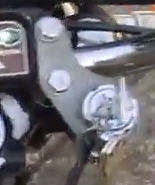
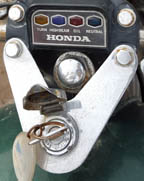
and keys then often cause paint damage.
All K-models 1969 through 1976
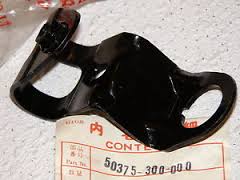
used bracket 50375-300-000A.
50375-300-000A bracket above is shown upside-down
of its installation position under left side of tank.

It also needs hardware pieces including: a barrel-shaped
spacer 'collar' 50377-300-000;
an 8mm x 40mm hex shouldered bolt 92000-080-400A,
superceded by 92101-080-400A;
and 8mm flat washer 94101-08000.
Nut is part of the black bracket. Remove tank to install.
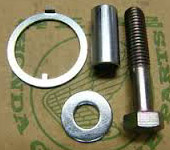
Note: additional minor variations, different part numbers,
changes and/or crossovers may have
occurred within some shown or listed types.
Entire site and content © Honda750Expert.com
41. Looking at some used stock exhaust pipes
for a US Honda
750K somewhere
between 1969 and 1978?
Knowing these three Honda exhaust code numbers
will help eliminate some wrong choices.
1.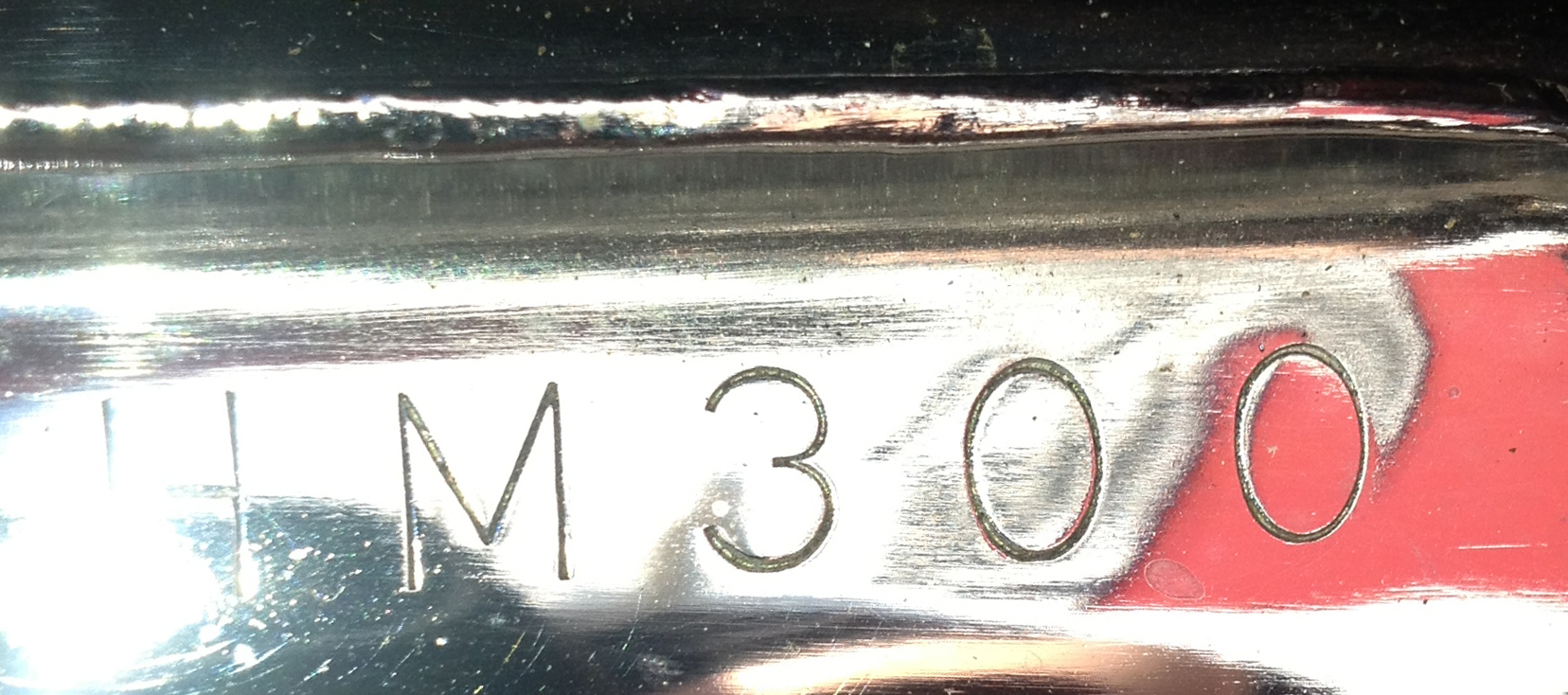
![]() 2.
2. 
![]()
3. 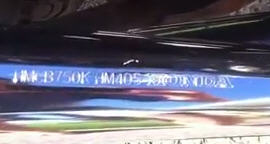
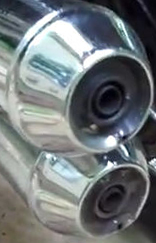
1. 300 series, Honda 750K 1969-1971
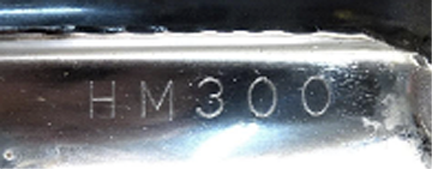
--Clamps on at engine--
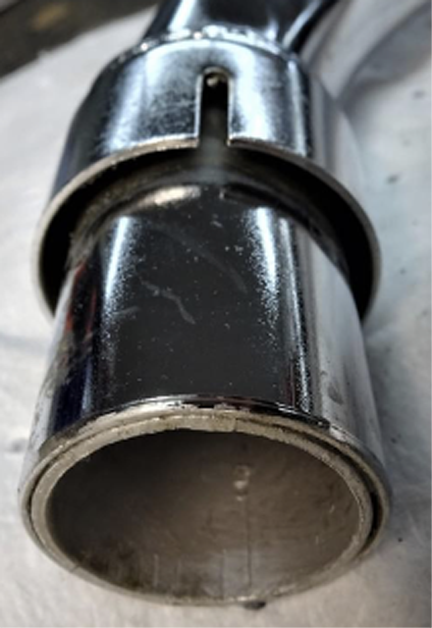
Some of the earlier ones had
removable baffles and no 300 marking
or any stampings|
Said to have the best chroming
Muffler said to be less restrictive than 341 series
Said to need carb rejetting if used to replace 341s
Heat shields on upper pipes
300s are rarest and most valuable to collectors
Can use a full set of 341s instead on 69-71
but will lower value to a sharp collector
Other minor variations
A transition year
2. 341 series, Honda 750K 1972-1976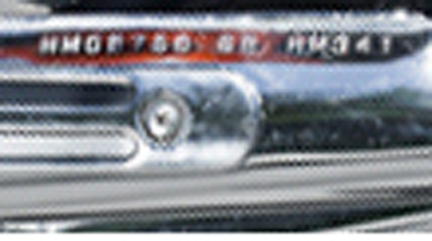
--Clamps on at engine--

Quieter than the 300 series
Reproductions available
Said to be more restrictive than 300 series
Said to need carb rejetting if used to replace 300s
Watch for clogged drain holes and rusted areas
Heat shields on upper pipes
Various baffle changes
3. 405 series, Honda 750K 1977-1978
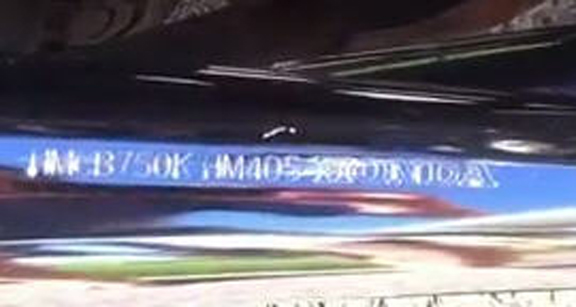
--Clamps in at engine--
No heat shields
Reproductions available
If wanted to be
used to replace 300s or 341s
(to use these later model pipes on an older bike),
see Section 92
for some of the hardware differences
used to connect to engine head;
and custom mounting would be needed at muffler end.
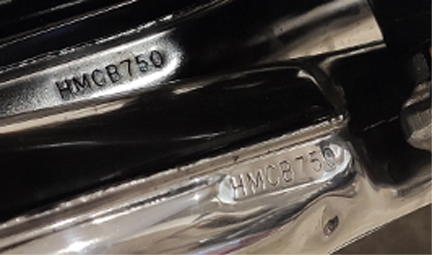
General info about original pipes:
The exhaust should have a different
identifier on each pipe: IR, IE, SR, and SL.
Others will be HMCB750 (IR) HM341
The earliest bikes, such as sandcasts,
had pipes with no numbers on them.
They had 'lotus root' baffles
with virtually no restrictions.
Early exhaust then changed to
same as H300 but without stampings.
No-stampings exhausts have been observed
on bikes as high as VIN 14,xxx.
Earliest bikes had the dull-finish heatshields.
HM300 was stamped on K1 and some K0
HM341 was for model K2 to K6
HM405 was stamped on K7-K8
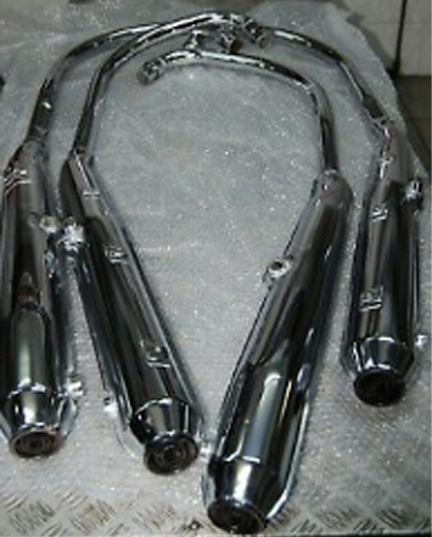
The end-caps seen at exhaust rear
are known as 'exhaust diffusers':

Most 1969-1971 US Honda 750K models
use diffuser 18311-300-320 (above).
1971/1972 was a transition period.
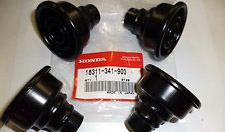

Most 1972-1975 US Honda 750K models
use diffuser 18311-341-900 (above right).
If you do not require stock exhaust, there are many
4-into-2 and 4-into-1 exhaust systems available.
Most original exhausts have
at least some rot / rust
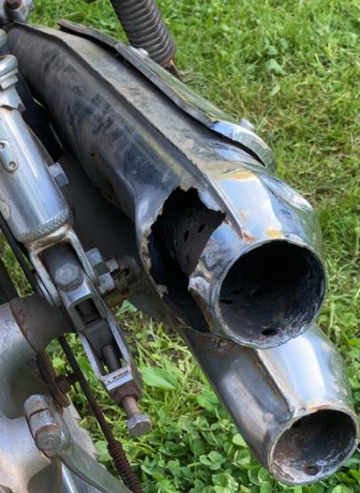
Reproductions available for some
More exhaust information at:
Muffler heat shields at Section 50,
header mounts at Section 92,
and vintage aftermarket exhausts at Section 143!
Note: Involves transition models.
Additional minor variations, different part numbers,
changes and/or crossovers may have occurred within some shown or listed types.
Entire site and content © Honda750Expert.com
those on a 1969-1978 Honda 750 US K-model?
This section is not all-inclusive, but will
help eliminate some wrong choices.
1.

2.


3.
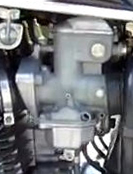
Three main types:
1. 'round-top'-type carburetors that use one
handlebar throttle cable into 4-separate cables
to operate the carburetors (earliest, 1969/70),
2. 'round-top'-type carburetors that uses a
somewhat push-pull dual-cable system using
a bar system with metal lifters to raise the carbs
together (most common type, 1971/1976), and
3. new 'PD' shape, they use an accelerator pump
(newest, 1977-1978).
Then there are differences within those types themselves.
Type 1:
--1969/1970
--uses a choke lever mounted at the left-most carburetor
--float bowls clamp on/tight with a large spring clip
--ID casting numbers on a flat upper horiontal area
--ID casting numbers have included 7A
--different jets sizes and needle settings used to match
exhaust pipes used and engine parts/settings used
--some earliest castings may have no number
Type 2:
--1971/1976
--uses a choke lever mounted at the left-most carburetor
--float bowls clamp on/tight with a large spring clip
--ID casting numbers on a flat upper horizontal area
--ID casting numbers include 657A (usually 1971?), 657B
(most common, usually 1972-1975?), and 086A (1976?)
--Beginning 1976, concessions to EPA (smog/pollution)
include a tiny cap to limit a previously adjustable portion
--different jets sizes and needle settings used to match
exhaust pipes used and engine changes/parts/settings used each year
Type 3:
--1977/1978 750 K-models
--uses a choke cable mounted with pull-knob near speedometer
--float bowls use screws to secure to carbs
--accelerator pump on the #2 float bowl
--ID casting numbers on a vertical flat spot above float bowl
--ID casting numbers include 41A, PD41, PD42 and PD42B
--Concessions to EPA (smog/pollution)
include leanness and some previously
user-changeable portions are now no longer removable or adjustable
--needle clip in 77 carb is adjustable but not in 78 carb
--have a '77F with PD42B carbs
--PD41 carbs most often from K7 models;
PD42 carbs most often from K8 models.
PD42 venting is said to be better than that of PD41 as it has
a tiny bleed hole on the side of the slide area on each carb.
Compare for different linkages, return springs,
and locations of gas inlets and springs.
1969-1974, the gas tank fed the carbs from right side.
The petcock had two fuel lines to the carburetors.
Beginning 1975, the gas tank fed the carbs from left side.
This newer petcock had one fuel line, that went to a
fuel-line tee, then two fuel lines to the carburetors.

Some castings have different number
but are the same except for original jetting.
Different float types such as brass and plastic.
Inspect them for damage or pinholes.
Insider tip:
while carbs marked 'PD43A' and 'PD44A'
look like the 'Type 3' carbs listed above,
they really are only for the Hondamatic models,
they are smaller, and are lower-performance.

| Insider tip:
Some owners of A-model Hondamatic 750s replaced
their carbs with the 77-78 K's slightly larger PD carbs,
but not necessarily for better performance!
They often do this change only
because NO factory replacement
rubber carb boots (connecting the
carbs and the engine head)
are available for Hondamatic carb sets.
VINTAGE CB750 and Sudco reportedly
have remanufactured these
A-model rubber boots and sells a set for about $100.
The original Hondamatic carb boots become
hardened and allow intake air leaks.
(Section 53 has more info about carb boots)
Also, some A-model owners have changed over
to older round-top K-model carbs and boots.
Honda part numbers for some complete
K-model 4-carb carburetor assemblies:
K6 16100-300-671
K5 16100-300-670
K4 16100-300-034
K3 16100-300-034
Insider Tip:
Honda lists the same part number for complete 4-carb
carburetor assemblies for K3 and K4 models:
16100-300-034.
Complete carb assemblies from all other years
each had its own assembly part number.
Insider Tip:
part numbers for complete 4-carb carburetor
assemblies for K7-K8 models have a -405- center number.
NOTE: carb overflow hose (on the bottom of float bowls) is 3.5mm. More info here soon.
Note: This section is not all-inclusive to carb variations.
Additional minor variations, internal variations,
different part numbers, changes and/or crossovers may
have occurred within some shown or listed types.
Entire site and content © Honda750Expert.com
one on a 1969-1978 Honda 750 US K-model?
Honda had 4 different variations.
Many for sale, new and used, on the Internet.
Honda calls the chrome fender 'Rear Fender A';
'rear fender B' is the inner black plastic mud guard.
These are the chrome rear fenders:
1969-1970: (up to serial 1044649) 80100-300-020XW
(but this 69-70 rear fender was
superseded by 80100-300-020XW,
which is the 1971 rear fender),
uses 69-71 small pod taillight.
--rear fender,
 1969-1971--
1969-1971--1971:
(from serial 1044650) 80100-300-030XW,
uses 69-71 small pod taillight.
1972-1976: 80100-341-000, uses 72-76 large bracket taillight.
--rear fender,
 1972-1976--
1972-1976--1977-1978: 80100-405-000, uses 77-78 large pod taillight.
--rear fender,
 1977-1978--
1977-1978--Note: rear fenders use hardware and
various rubber/plastic grommets/guides.
Note: Involves 'transition' models.
Additional minor variations, different part numbers,
changes and/or crossovers may have occurred
within some shown or listed types.
Entire site and content © Honda750Expert.com
one on a 1969-1978 Honda 750 US K-model?
Honda had at least 4 different variations.
Many for sale, new and used, on the Internet.
1969: (up to serial 1015592)
61100-300-030XW earliest model.
with at least one sharp non-rolled edge
(superceded by 61100-300-030XW,
which is the 1970-through-early-1972 front fender),
earliest had no hole for grommet,
uses a forward hoop and a rear hoop.
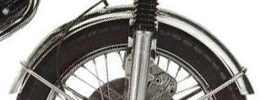
1970 through early 1972:
(some through serial 2093730) 80100-300-030XW,
uses a forward hoop and a rear hoop.
Late 1972 through final 1976: 61100-341-700XW,
uses a forward hoop and a rear hoop.
(Late 1972 through final 1976
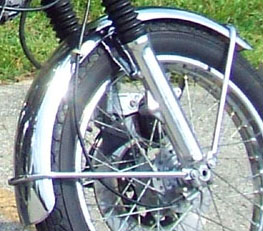 K-model front fender)
K-model front fender)--Late 1972 through final 1976 Honda 750
K-model front fender--
1977-1978: 61100-405-000, uses only a rear hoop
(77-78 are the only K years with no forward hoop).
(1977-1978 Honda 750
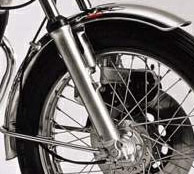 K-model front fender)
K-model front fender)Note: front fenders use various hardware changes
and rubber/plastic grommets, hose routing,
solid mount vs rubber mount,
spacers and speedo cable guides.
Measure and compare mount holes.
Some used isolators. Different fork leg years have
different front fender mount patterns.
Note:
Honda refers to the chrome mounting hoops as fender 'stays'.
Insider tip:
No US F-model SuperSport or A-model Automatic
Honda 750 used a forward hoop on its front fender.
Note: This is a general guide.
Involves 'transition' models.
Additional minor variations, different part
numbers, changes and/or crossovers may have
occurred within some shown or listed types.
Entire site and content © Honda750Expert.com


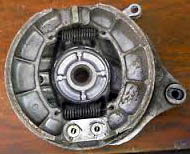
43120-393-006. You need two of them.
While various years first used different rear brake shoe part numbers
(1969 through 1976: 43120-300-010, 1978: 43120-393-003),
all eventually were superseded to 43120-393-006.
Note: Involves transition models.
Additional minor variations, different part numbers,
changes and/or crossovers may have
occurred within some shown or listed types.
Entire site and content © Honda750Expert.com


This section was added because it is a
frequent request by visitors to Honda750Expert.com!
46. "I'm trying to buy a used original-paint
gas tank or side covers on the Internet,
but instead of telling the colors, some only show
'color code' letters after the part number.
What are the US Honda 750
'color codes' for factory-painted parts?"

Here are our most-often searched color codes
for US K, F, and A model parts:
1969-1970 US K-models
Candy Blue Green: color codes AZ and PB2C
(example of a Candy Blue Green part  showing 'AZ' color code)
showing 'AZ' color code)
Candy Ruby Red: color codes CM and R4C
(example of a Candy Ruby Red part  showing 'CM' color code)
showing 'CM' color code)
Candy Gold: color codes CQ and Y2C
1971 US K-models
Valley Green Metallic: color codes EF and G21M
Candy Garnet Brown: color codes EE and YR2C
Candy Gold: color codes CQ and Y2C
Candy Ruby Red: color codes CM and R4C
1972 US K-models
Brier Brown Metallic: color codes LU and YR15MC
Flake Sunrise Orange: color codes LV and R2CF
1973 US K-models
Flake Sunrise Orange: color codes LV and R2CF
Candy Bacchus Olive: color codes LY and G5WC
Maxim Brown Metallic: color codes QQ and YR20MC
1974 US K-models
Freedom Green Metallic: color codes TC and BG1M
Flake Sunrise Orange: color codes LV and R2CF
Boss Maroon Metallic: color codes TD and RP9M
1975 US K-models
Planet Blue Metallic: color codes MV and PB27MC
Flake Apricot Red: color codes UE and R5CF
1975 F-model SuperSports
Flake Sunrise Orange: color code R2CF
Candy Sapphire Blue: color code PB3CC
1976 US K-models
Candy Antares Red: color code R-6C-S
1976 US F-model SuperSports
Sulphur Yellow: color code Y34
Candy Antares Red: color code R6CS
1976 US Automatic A-models
Muscat Green Metallic: color code G38MS
Candy Antares Red: color code R6CS
1977 US K-models
Excel Black: color code NH-57
Candy Alpha Red: color code R-9C-S
1977 US F-model SuperSports
Black: color code NH1
Candy Presto Red: color code R8CS
1977 US Automatic A-models
Candy Sword Blue: color code PB7C
Candy Presto Red: color code R8CS
1978 US K-models
Excel Black: color code NH-57
Candy Alpha Red: color code R-9C-S
1978 US F-model SuperSports
Black: color code NH1
Candy Presto Red: color code R8CS
1978 US Automatic A-models
Candy Polaris Blue: color code PB100CS
Candy Alpha Red: color code R9CS
Note: Most of these internal Honda color-codes are not
matchable to numbers used by current paint manufacturers,
but there are some paint manufacturers that now have
paint ready to match the original colors.
More paint/color information at
Section 35 and Section 146!
Note: Involves transition models.
Additional minor variations, different part
numbers,
changes and/or crossovers may have occurred
within some shown or listed types.
Entire site and content © Honda750Expert.com

47. US year model is identified by a metal tag on the frame
head in front of the gas tank on the right side.
Top-right corner of tag on examples below
has the month & year of manufacture.




Note: in some states, state ownership titles
used the year of sale as the bike's year model.
So, for example, some 1972 Honda 750
ownership papers list it as a 1973 model.
Note: involves transition models.
Additional minor variations, different part numbers,
changes and/or crossovers may have
occurred within some shown or listed types.

(This is a question we occasionally receive)
48. "I know that sometime in 1972,
Honda made little-known restriction
changes to the bottom half of the US 750
air-filter case 'cover' (bottom half).
It made the air intake reduced,
via baffling, this restriction to
supposedly to reduce the audible
sound of air suction 'intake roar'.
Besides less power, my '74 750 does not have the
clean 'intake sound' that my older 750s did.
So, I want to know the part number for the bottom half
of a 1971 air-filter case so I can compare and/or modify.
It would be ribbed black. Not a '69 or '70 bottom half,
those are color-matched and different.
And not a '341' part-number case,
that is the late '72 and newer restricted model."
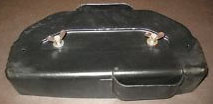
Seems that the 1971 K1 part
number might be 17231-300-030B.
However, many used '300' parts for sale used
on the Internet are really '341' parts--
the sellers sometimes used quick or weak
research to help list their parts for sale,
sometimes using wrong part numbers.
Here is a general list of K-model
air filter housing bottoms:
(known as 'covers')
K0 1969-1970 year models, housing is
often the same color as gas tank and side covers,
through frame #10444649 which is the last
K0 frame: 17231-300-020-(color code here).
K1 1971 year model, black only, beginning with frame 1044650
which is the first K1 frame: 17231-300-030B.
K2-K6 1972-1976 year models, black only: 17231-341-010.
K7-K8 1977-1978 year models, black only: 17231-392-000.
Insider tip:
the baffling in your own air-filter case bottom can be modified.
Baffling can be removed (back to old intake roar)
or have holes drilled in baffling (a little more intake roar).
Sound is more noticeable on bikes with fairings or windshields,
or when opening the throttle wide.
Insider tip:
drilling at the wrong place will allow water in.
For convenience, here is a
general list of K-model air filter housing cases
(top halves):
K0 1969-1970 year models, housing is same color as gas tank and side covers,
through frame #10444649 which is the last K0 frame: 17214-300-040-(color code here).
17214-300-040AZ: Candy Blue Green
17214-300-040CM: Candy Red
17214-300-040CQ: Candy Gold
K1 1971 year model, black only, beginning with frame
1044650 which is the first K1 frame: 17212-300-030B.
K2-K6 1972-1976 year models, black only: 17212-341-000.
K7 1977 year model, through frame 2731019, black only: 17240-405-305.
K7 1977 year model, beginning frame 2731020, black only: 17240-405-315.
K7-K8 1977-1978 year models, black only: 17240-405-315.
F-model SuperSport air-filter housing bottoms
(known as 'covers'):
1975-1978F: 17231-392-000 (same as K7-K8)
F-model SuperSport air-filter housing cases (top halves):
1975-1976F: 17240-392-000, superseded by 17240-392-305
1977-1978F: 17240-405-315 (same as K8 and late K7)
A-model Hondamatic air-filter
housing bottoms (known as 'covers'):
1976-1978A: 17231-392-000 (same as 76-78F and K7-K8)
A-model Hondamatic air-filter
housing cases (top halves):
1976A: 17240-393-305 (same as 76F supercede)
1977A: 17240-393-770
1978A: 17240-393-771
More air filter information at Sections 2 and 114!
Note: Involves transition models. Additional minor variations, different part numbers,
changes and/or crossovers may have occurred within some shown or listed types.

49. There was chrome plastic
trim/molding along the
bottom edge of the gas tank
of every 750 K-model 1969-1978.
They are NOT all the same.
Below are the three main differences.
1969-1970:
chrome plastic trim, all silver chrome (no stripe)



Trim part number R 17521-300-000 / Trim part number L 17522-300-000
Uses no clips.
1971-1976 K:
chrome plastic trim, silver chrome
with a full-length black horizontal stripe

Trim part number R 17521-300 (and 341)-010 /
Trim part number L 17522-300 (and 341)-010
Uses no clips.
1977-1978 K:
chrome plastic trim, all silver chrome (no stripe)

Trim part number R 17541-405-000 / Trim part number L 17542-405-000
Uses clips 17544-323-000 and 17545-323-010.
Usually, original and reproduction tank trim are both available.
A-model 750 Automatics also used bottom-edge
chrome trim on their gas tanks.
But F-model 750 SuperSports did NOT use
bottom-edge chrome trim on their gas tanks.
Note: Involves transition models.
Additional minor variations, different part numbers, changes and/or
crossovers may have occurred within some shown or listed types.

50. There is one muffler heat shield that fits all US Honda 750
K-models 1969-1976 (1977-1978 used no heat shields):
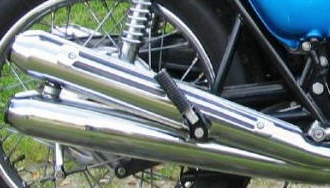

18315-300-020
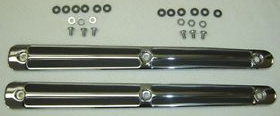
Insider tip:
Honda used these polished-with-black
heat shields above starting with
frame #1044650 in September 1970,
which was the first US 1971 K1 Honda 750.
But for the earlier 1969/1970 K0 US 750 models,
up to frame #1044649
(the final 1970 US K0 750),
the heatshield used was 18315-300-010:
a dull silver finish with black (see examples below):
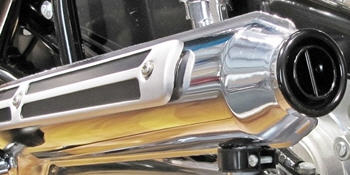
This dull 69/70 part was superseded by the
71-76 polished part 18315-300-020.
Note: Honda refers to all US 750 K-model
heat shields as 'muffler protectors'.
More exhaust information at section 41,
section 92 and section 143!
Note: Involves transition models. Additional minor variations, different part numbers,
changes and/or crossovers may have occurred within some shown or listed types.

(This is a question we often receive)


51. "I bought an old US 750K and the
rubber fuel lines from the petcock
to the carbs are destroyed.
My local auto parts store had hose sizes and
clips that didn't feel right. What do I need?"
Using the wrong parts looks bad and can cause trouble.
All correct parts are available.
There have been two sizes of fuel line
during 1969-1978 US K-models.
SIZE 1, original small fuel line,
5mm, all 69-70 K0 models,
and also for about the first third
of the K1 1971 year-model:
The 1969/1970 'K-0" model,
and also about a third into the
K1 1971 year model production,
used a smaller 5mm size fuel line,
used until frame #1071335
(which was about 1/3 through the K1 model year).
Examples of this smaller fuel line are
95001-50160 and 95001-50280.
A smaller (5mm) retaining clip was used,
'Fuel Tube Clip 5mm' #95002-250000.
Explanation:
There were about 77,000 750 K-1 models made.
The first K1 (1971 year model) was frame #1044650.
The smaller 5mm fuel line was
continued to be used through
frame #1071335, which means it
was used on the first almost 27,000 K1s.
The following next almost 50,000 K1s used
the bigger 5.5 fuel line and clips instead--
but the same petcock was used
both before and after the change.
SIZE 2, improved larger fuel line,
used for the last two-thirds of the 71 K1
year-models through to the end of 1978 model:
Fuel line:
Not the SAE similar-sizes at the auto parts store.
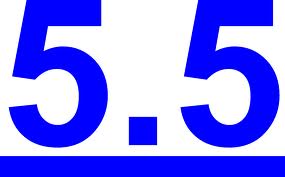
For US Honda 750 models since frame 1071336
(one-third through the K1-model year),
used the 5.5mm ID 95001-5500160M black fuel line,
fresh and pliable, available online and at Honda
dealerships in bulk or by the foot or in pieces.
5.5mm is correct for the 750's brass ports and for the factory clips.
--Not 'clear' fuel line that will quickly harden and split.
--Not wrong size fuel line that might
leak, split, slip off, or collapse at a bend.
--Not 'vacuum' line that isn't fuel-resistant.
--Not hose unrated for heat.
Clips: All 71-78 US K-models since 1971 frame 1071336
(one-third through the K-1 model year)
use clip #9500202100 at the hose piece ends.


Known as 'Tube Clip B10".
They work with the catch-rises on the petcock and
with the catch-rises on the other connection points.
Get a few extra clips as they are
easy to lose during installation.
Don't use
 hose clamps!
hose clamps!Tee: 1975 and 1976 US 750 Ks use
an under-tank fuel-line 'tee' splitter
in between their single-hose petcock
and the two carburetor feeds.

Honda calls this tee a 'fuel joint':
its part number is 16235-657-000.
Be sure to replace all 3 hoses connected to this tee.
This tee was also used on some older Honda cars.
Insider tip:
Slit the end inch of old hardened hose

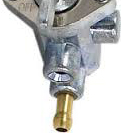
at the petcock end before pulling the hose off.
Otherwise you might accidentally pull out
a pressed-in brass port from the petcock body.
NOTE: carb overflow hose (on the bottom of float bowls) is 3.5mm. More info here soon.
Note: Involves transition models.
Additional minor variations, different part numbers, changes and/or crossovers may have occurred within some shown or listed types.
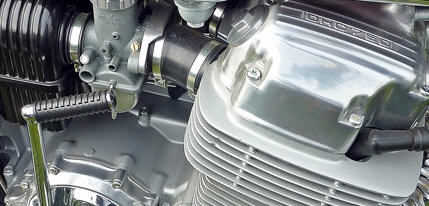

52. From 1972 through 1976, US Honda 750
K-models used handlebar-clamp assemblies
that had built-in indicator lights in their center.
There were 3 different versions:
72 >
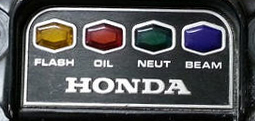 73-74 >
73-74 >
75-76 >
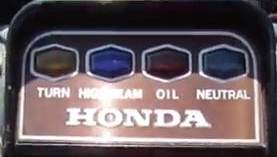
K2 1972 year model:
says 'FLASH' for turn signals,
says 'NEUT' instead of spelling out NEUTRAL.
53133-323-000, superceded by 53133-323-010
K3-K4 1973-1974 year models:
same left-to-right lighting order as 1972 but
FLASH is now 'TURN', and NEUT is now 'NEUTRAL'.
53133-323-010
K5-K6 1975-1976 year models:
new left-to-right lighting order,
and BEAM is now 'HIGH BEAM'.
53133-374-670
Honda refers to this part as a handlebar 'Upper Holder'.

Same part is used by some other
size Honda models, not just 750s.
As they age, they fade and discolor.
Reproductions are also available.
Hardware needed by
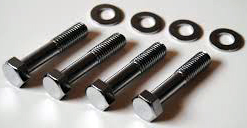 this assembly,
this assembly,1972-1975:
8X40 hex bolt, part number 93101-080-400B;
washer, part number 90518-921-000.
For 1976, Honda combined this
bolt and washer into one part,
making an 8X36 'Flange Bolt',
part number 90111-362-000.
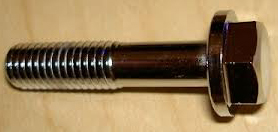
Note: Involves transition models.
Additional minor variations, different part numbers, changes and/or
crossovers may have occurred within some shown or listed types.

53. Often a cause of poor performance is intake air leaks.
Now no longer sealing 'air-tight',
leaking are the old cracked & hardened
carburetor 'insulator' rubber boots which
originally were also meant to keep carburetors cool
and reduce vibrations from the engine.
Equivalent to an intake manifold on a car,
but rubber instead of metal, and four instead of one.


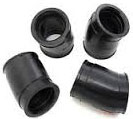

For US K-models 1969-1978, there have been
3 versions of the rubber carburetor insulators.
1969-1970 year K-models (K0)
Insulator A, needs two: 16211-300-305
Insulator B, needs two: 16212-300-305
Metal insulator band: 17255-300-000
Insulator band's 4X22 cross-screw: 93500-040220A
Used these parts above through engine #1044805,
which was the last K0 1970 model year engine.
1971-1976 year K-models (K1-K6)
Insulator A, needs two: 16211-300-030
Insulator B, needs two: 16212-300-030
Metal insulator band: 17255-300-010
Insulator band's 4X22 cross-screw: 93500-040220A
Used these parts above beginning with engine #1044806,
which was the first K1 1971 model year engine.
1977-1978 year K-models (K7-K8)
Insulator 1: 16211-405-000
Insulator 2: 16212-405-000
Insulator 3: 16213-405-000
Insulator 4: 16214-405-000
Metal insulator band: 17255-405-000
Insulator band's 4X22 cross-screw: 93500-040220A
69-70>

Insider Tip: don't use hoseclamps. Use the correct bands.
For US Super Sport F-models 1975-1978,
there have been 2 versions of
the rubber carburetor insulators.
1975-1976 Super Sport:
Insulator A- 16211-300-030
(same as K-model of same years).
Insulator B- 16212-300-030
(same as K-model of same years).
1977-1978 Super Sport:
Insulator 1- 16211-410-000
Insulator 2- 16212-410-000
Insulator 3- 16213-410-000
Insulator 4- 16214-410-000
For US Hondamatic A-models 1976-1978,
there have been 2 versions of
the rubber carburetor insulators.
1976 Hondamatic:
Insulator A- 16211-393-000, uses two.
Insulator B- 16212-393-000, uses two.
1977-1978 Hondamatic:
Insulator 1- 16211-393-020
Insulator 2- 16212-393-020
Insulator 3- 16213-393-010
Insulator 4- 16214-393-010
These '393s' are the least-available
of all US 750 insulators.
77-77A insulators are smaller
diameter than K/F insulators due to
the A's smaller carburetors.
Their curves/shapes are different too.
So, some 750 Hondamatic owners end up
replacing their carbs with K-model carbs of
the same year when they can not
obtain original Honda 750A
carb insulators when they get too stiff/leaky.
However,
VINTAGE CB750 and Sudco are said
to have remanufactured these
and sell a set for about $100.
Note: Involves transition models. Additional minor variations, different part numbers,
changes and/or crossovers may have occurred within some shown or listed types.

(This is a question we occasionally receive)
54. "I have a K-0 model Honda 750.
I believe that makes it a valuable 'sandcast' engine model.
How can I verify this?"
Used only for the first 7414 Honda 750 engines made,
then a stronger (and smoother) casting system replaced it.
Not all K-0 Honda 750s had engines
Easiest way to verify is with your engine number.
Sandcast engine cases were #1000001 through #1007414.
The last 750 engine that used sandcast cases was #1007414.
If numerically yours is higher
than 1007414, then not sandcast.
Original sandcast engines used

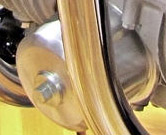
this smooth oil filter case,
but many were later replaced with the newer 'finned' oil filter case.
Note: Involves transition models. Additional minor variations, different part numbers,
changes and/or crossovers may have occurred within some shown or listed types.

55. Salvage-yard and Internet searchers:
Looking to replace a cracked top bridge?
There were 3 main different top bridge styles
used on US K-model 750s 1969-1978!
The 3 top fork bridge differences
US Honda 750 K-models 1969-1978:
1>
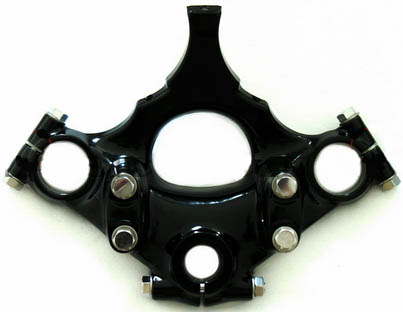 2>
2>
3>

1. US K0-K2
Nicknamed 'unicorn' style.
Uses chrome 'meter bracket bands'
Do not install top bridge
without two special notched
D-shaped spacer-washers
53235-300-000
 , one each,
, one each, at center in
or top bridge can crack when
tightening around fork tubes.
Top fork bridge part number:
up to frame #1003433 (sandcast 1 to 3433),
53230-300-010,
superseded by 53230-300-315;
after frame #1003434 (sandcast 3434 to 7414),
53230-300-020,
superceded by 53230-300-673,
later superseded by 53230-300-315.
After sandcasts, 53230-300-315 through end of K2.
(NOTE: it has been reported that in Europe
and some other countries outside of the US,
the 'unicorn' style was used through the 1975 K model)
Insider Tip:
measure the width of the 'tip of the unicorn horn'
if you are buying a used part-- that was one difference.
2. US K3-K6
Uses a small black meter bracket to connect gauges.
Do not install top bridge without two special notched
D-shaped spacer-washers 53235-300-000
 , one each,
, one each, at center in
or top bridge can crack when tightening around fork tubes.
Top fork bridge part number:
53230-341-305
3. US K7-K8
Uses a small black meter bracket to connect gauges.
Has a mount for choke cable pull knob.
Top fork bridge part number:
53230-405-000
Insider Tip:
each fork tube top is tightened
to with a bolt in the fork bridge.
1969 through 1975 used an 8mm bolt,
but 1976 through 1978 used a thinner 7mm bolt.
1969-1975: 90155-369-000. 1976-1978: 92101-805-60B.
Here's what the three fork bridges look like
installed and with gauges etc on them:


Note: Involves transition models. Additional minor variations, different part numbers,
changes and/or crossovers may have occurred within some shown or listed types.

56. Salvage-yard and Internet searchers:
Looking to replace a damaged 750K headlight holder?
Some call them Honda 750 headlight 'brackets' or 'ears';
Honda calls them 'fork covers'.
This visual guide section shows the 4 general
designs used by Honda 750 US K-models K0 to K8.
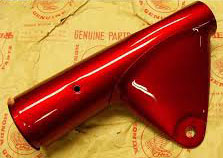 K0-K1
K0-K1 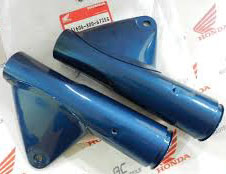
K0-K1

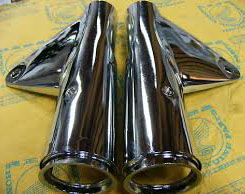
K2

 K3-K6
K3-K6 
K3-K6

 K7-K8
K7-K8 
K7-K8

K0-K1 Fork Covers
Painted same color as gas tank and side covers.
On bottom-half of vertical portion are threads for a small reflector.
On horizontal portion, one hole at its end for a turn
signal stalk to go through and then into headlight shell.
Part number, right: 51602-300-672-(color code letters here)
Part number, left: 51606-300-672-(color code letters here)
K2 Fork Covers
Chrome.
On bottom-half of vertical portion are threads for a large reflector.
On horizontal portion, one hole is at its end for a turn
signal stalk to go through and then into headlight shell.
Looks like K0-K1 shape, but in chrome and with bigger reflector.
Part number, right: 51602-341-670XW
Part number, left: 51606-341-670XW
K3-K6 Fork Covers
Chrome.
On bottom-half of vertical portion are threads for a large reflector.
On horizontal portion, one hole is at its end for a headlight shell bolt,
and one hole inward of that for a turn signal mount.
Left fork cover has a square mounting hole for turn signal buzzer.
Part number, right: 51602-341-701XW
Part number, left: 51606-341-701XW
K7-K8 Fork Covers
Chrome.
Low on vertical portion is a built-in mount for a large turn signal.
On horizontal portion, one hole is at end for a headlight shell bolt.
Part number, right: 51602-405-000
Part number, left: 51606-405-000
Note: there can be variation, transition and cross-over issues
with the earliest models of these. Bring old part to compare.
Note: Involves transition models. Additional minor variations, different part numbers,
changes and/or crossovers may have occurred within some shown or listed types.

57. Keep just five threaded oil tank lines in stock,
and you can replace any one used on any US
Honda 750 K-models 1969-1978!


The oil tanks on these Honda 750 K-models all have
two oil lines thread-connectored to the bottom of the oil tank.
Honda calls the hose with an angled threaded
metal fitting at the tank end 'Oil Hose A'.
It threads on to the back half of the oil tank.
The hose with a straight-on threaded metal fitting
(see photo above at right) at the tank end is 'Oil Hose B'.
It threads on to the front half of the oil tank, next to the tank drain bolt.
Both hoses have angled bolt-on fittings at their engine ends.
Hose A>
 Hose B>
Hose B> 
1969-1972 Hose A: part number 15510-300-007
1969-1972 Hose B: part number 15520-300-007
1973-1978 Hose A: part number 15510-300-017
1973-1976 Hose B: part number 15520-300-007
1977-1978 Hose B: part number 15520-392-020
Some early-model hoses were gray instead of black.
Not to be confused with aftermarket hoses
that used stainless-steel braiding.
On sandcast engines, the earliest type hoses were smooth fabric,
not webbed, and the metal ferrule was not crimped.

The next hoses used were webbed fabric,
but still used smooth metal ferrules.
Ultimately, all 750 hoses became webbed
fabric with crimped metal ferrules.
Note: Involves transition models. Additional minor variations, different part numbers,
changes and/or crossovers may have occurred within some shown or listed types.

58. After a few early front disk brake rotor improvements,
US Honda 750 K-models used
3 different part numbers for the factory rotors.
(Part numbers below for
A-model and F-model rotors too!)
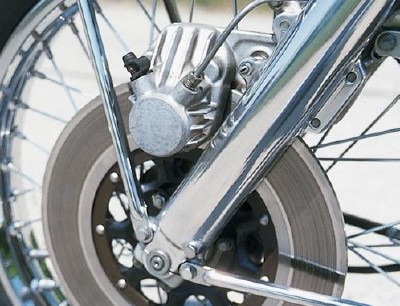 <1969
<1969  <1976
<19761.
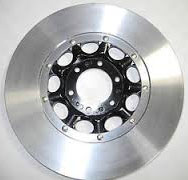 3.
3. 1. 1969-1971 K-models disk brake rotor 45120-300-040
2. 1972-1975 K-models disk brake rotor 45120-341-000
3. 1976-1978 K-models disk brake rotor 45120-392-000
Note: K-model disk rotors were 295mm.
Some disk-to-hub hardware differences:
All K-model disks used 6 nuts and bolts. But 1969 through 1975
also used 3 flat lockstrips called 'tongued washers' that connected across
two bolts each; each flat strip had 'fingers' that were bent up to
prevent the 8mm hex nuts 94001-080000S from vibrating loose/off.
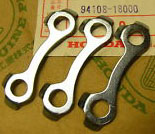
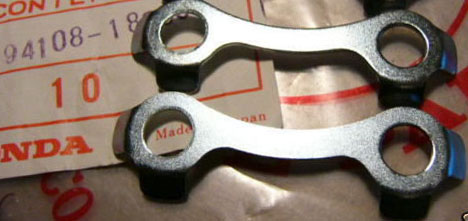
The tongued washer (lockstrips) used were 90522-300-01
0 from 1969-1973, later superseded to 94108-18000.
1974-1975 K-models used tongued washer (lockstrips) 94108-18000.
1976 through 1978 K-models did not use the flat lockstrips;
instead they used 8mm 'flanged' nuts
90309-357-000 for vibration security.

F-model SuperSport rotors:
1975-1976 front disk brake rotor 45120-392-000
1977-1978 front disk brake rotor 45251-410-000,
superceded by 45251-410-305
1975-1978 rear disk brake rotor 43120-371-000
A-model Hondamatic rotors:
1976-1977 front disk brake rotor 45120-392-000
1978 front disk brake rotor 45120-393-780
Note: Involves transition models. Additional minor variations, different part numbers,
changes and/or crossovers may have occurred within some shown or listed types.

59. Turn signal buzzers appeared
beginning with 1972 K2 models.

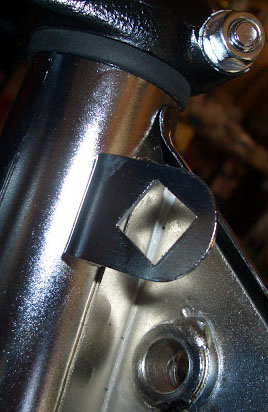



Part Numbers
1972: Buzzer 38400-341-671
(1972 also used a short wiring harness
adapter 'Wire Sub Cord B' 32121-300-750)
1973-1978: Buzzer 38400-341-674
Honda calls it a 'winker buzzer'.
It mounts into a square hole inside the left headlight bracket.
Note: Involves transition models.
Additional minor variations, different part numbers, changes
and/or crossovers may have occurred within some shown or listed types.

60. Honda 750
*More than 553,000 1969-1978 Honda 750
(K, F, and A combined) motorcycles were made*
*Nearly 450,000 1969-1978 K-model 750s were made*
*A Honda 750 is made up of about 2500 parts*
*A Honda 750 weighs about 500 pounds*
*A Honda 750 engine weighs about 200 pounds*
*A Honda 750 engine is removed out the right side*
*If a part number ends in (color code) 'XW', that is chrome,
but not all chrome parts use XW in the part number*
*The best-selling K-model year was the 1971 750 K1*
*The least-selling K-model year was the 1975 750 K5*

61. Salvage-yard and Internet searchers:
there were several variations of
front brake master cylinders
used on US K-model 750s 1969-1978!

Bring your old master cylinder, and compare for different:
colors, caps, cap styles, levers, mirror mount heights,
switches, adjustment hardware, labeling, lever coating, fill-line inside,
brake line connection end lengths, and more.
Some part numbers are shared below in case
you would also like to research by Google.
Master cylinder assembly part numbers
K0 45500-300-030, had an adjustable lever stop
(later superseded by 45500-341-771).
K1 had two variations:
--K1 early, from frame 1044650 to frame 1071335,
was 45500-300-040 (later superseded by 45500-341-771)
--K1 later, almost halfway through the
K1 year model, from frame 1071336,
was 45500-300-050 (later superseded by 45500-341-771).
K2 45500-341-671.
K3 through K6: 45500-341-771.
K7 45500-405-671.
K8 45500-393-771,
has brake light switch 35340-393-771 on it
This part number was either the original or the replacement
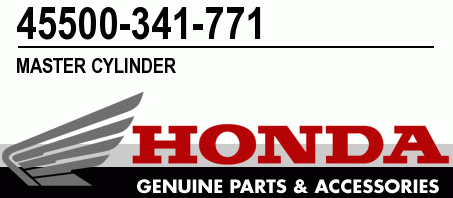
master cylinder for K0 through K6 750 models.
This 45513 part number was either the
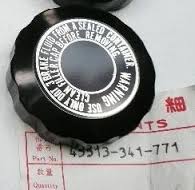
original or replacement master
cylinder cap for K2 through K8 750 models.
KO bikes and some K1 bikes originally used
silver concave cap 45513-300-020 >

various black flat-top variants >

Master cylinder cap part numbers
(Honda refers to it as an 'oil cup cap')
K0 through into K1: 45513-300-020 (a silver concave),
superseded by 45513-341-010 (a black flat).
Mid-K1 through K2: 45513-341-671 (a black flat).
K3: 45513-341-770 (a black flat).
superseded by 45513-341-771 (a black flat).
K4 through K8: 45513-341-771 (a black flat).
The mystery of the
adjustable front brake lever stop
that disappeared from US K-models after only one year!
For only one full US model year, K0, Honda used an
adjustable lever stop for the front brake lever.
It was made up of the three little parts below--
1) lever adjustment bolt 45518-300-003;
2) tanged washer 45525-300-000;
and 3) 8mm hex nut 94002-080-000S:
1>
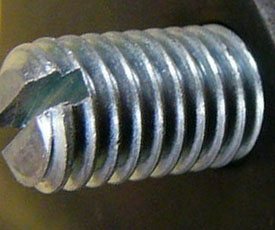 2>
2>  3>
3> 
But beginning with frame #1044650 (the first K1 750),
the lever stop was never again a listed part
of the master cylinder for US K-model 750s.
Instead, the hole used was capped off with three different parts
involved in photo below, for models K1 through K6:
A) right handle bush stop (a short rubber tube, shown below
already installed in master cylinder) 45526-300-000,
| superceded by 45526-341-000; B) lever bush plate
(sheet metal with a locator nub and a bolt hole) 45527-300-000;
and C) thin 6mm nut 94002-06000, superceded by 94002-06000S.

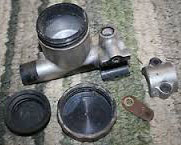
Note: Involves transition models. Additional minor variations, different part numbers,
changes and/or crossovers may have occurred within some shown or listed types.
Entire site and content © Honda750Expert.com
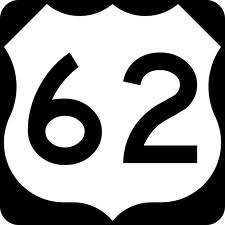
Salvage-yard and Internet searchers:
on all US 750 K, F and A models,
starter motors use the same
part number 1969 through 1978!
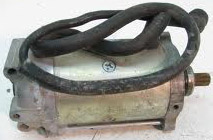
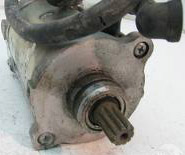
Part number is 'Starting Motor 31200-300-030'
The starter is under a chromed rectangle-shaped
cover under the two left carburetors.
It is accessed via the 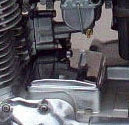 left side of the bike.
left side of the bike.
Two cover bolts and a gasket.
Note:
disconnect your battery before working on the starter!
US K3 through K5 models, had 'Starter Motor Safety Unit'
31800-341-701
under the left side cover,
bolted near the bottom edge of the battery cage.

With this, the 750 starter would only work if the bike
was in neutral or if the clutch lever was pulled in.
US K3 through K8 Honda 750 models used
clutch lever starter safety switch
35360-341-000, 
superseded by 35340-329-003
Insider Tip: to remove the starter motor, you must
first remove the cam-chain tensioner holder.
Note: Additional minor variations, different part
numbers,
changes and/or crossovers may have occurred within some shown or listed types.
Entire site and content © Honda750Expert.com
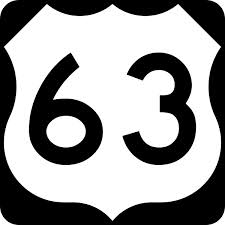
Salvage-yard and Internet searchers:
There were 5 different battery boxes
used on 1969-1978 Honda 750 US K-models.
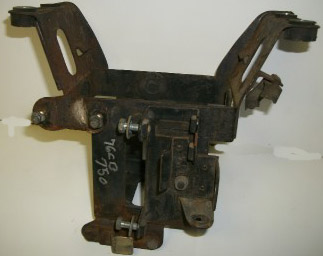
Each year is similar but with different mount holes, etc.
Mount holes were used for various
brackets, flashers, solenoids,
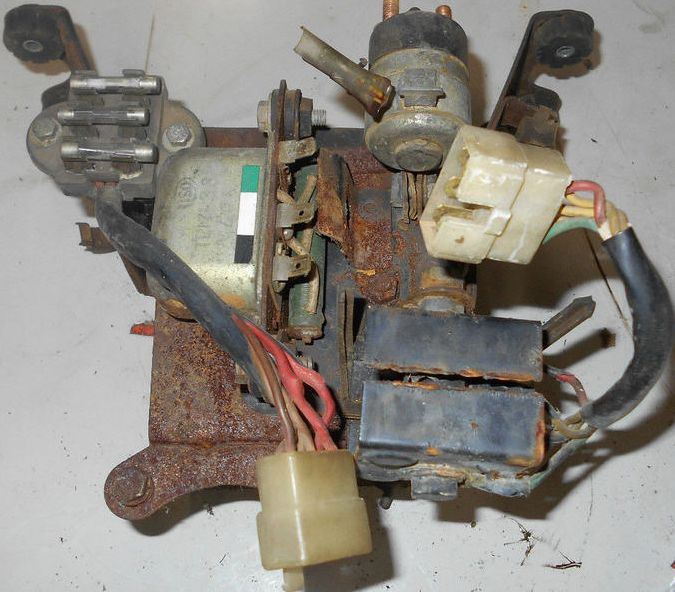

starter safety switches, various charging items, and fuses.
Commonly referred to as a battery 'cage',
the box itself is rubber cushion-mounted.
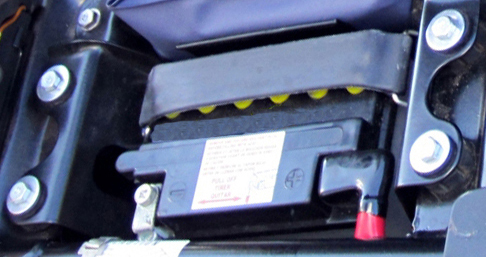
Inside the box, the battery is surrounded by bottom
& side anti-vibration rubber cushioning.
Battery bottom cushioning:
under the bottom of the battery, 1969 through 1976
used a large rubber pad 'Battery Rubber 50329-300-010',
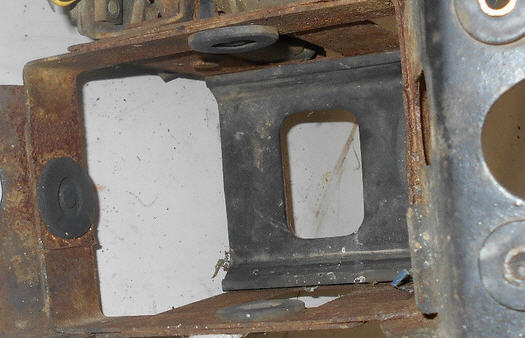
whereas 1977-1978 instead used two round rubber pieces
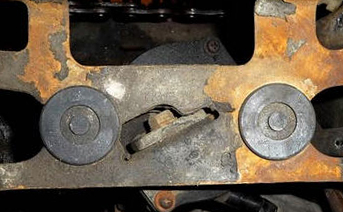
'Battery Rubber B 50327-300-000'

under the battery instead.
Battery side cushioning:
all years used round rubber pieces

'Battery Rubber B 50327-300-000'.
Battery top:
batteries of all K-model years were secured
down by a rubber strap with metal ends

'Battery Band A 50322-3000010',
superseded by 95012-17000.
Battery box part numbers
1969-1972 models (K0-K2): 50325-300-020
1973-1975 models (K3-K5): 50325-341-700
1976 models (K6): 50325-341-701
1977 model (K7): 50325-405-000
1978 model (K8): 50325-405-770
Note: this part is often dirty with rust and battery acid residue.
Protect clothes, skin and eyes.
Note: no K-model year came from the
factory with a chromed battery box.
That would be an aftermarket change.
Note: Involves transition models.
Additional minor variations, different part numbers,
changes and/or crossovers may have occurred within some shown or listed types.
Entire site and content © Honda750Expert.com

Salvage-yard searchers:
There were 9 different wiring harnesses
used on US Honda 750 K-models during 1969-1978.
K0, up to frame #1003479: 32100-300-040
(superseded by 32100-300-050)
K0, beginning with frame #103480: 32100-300-050
K1: 32100-300-050 K2: 32100-341-000
K3: 32100-341-702
K4, up to frame #2346793: 32100-341-702
K4, beginning with frame #2346794: 32100-341-703
K5: 32100-341-703 K6: 32100-341-900
K7: 32100-405-670
K8: 32100405-611
Note: Involves transition models. Additional minor variations, different part numbers,
changes and/or crossovers may have occurred within some shown or listed type.
Entire site and content © Honda750Expert.com

Salvage-yard and Internet searchers:
4 different US 750 K-model chrome grab-bar
'Rear Bumpers' 1969 through 1978!

K0-K1: on left-side only

K2-K6: full grab rail

K7-K8: longer full grab rail
Some call it a 'grab rail' or a 'turn signal rail',
Honda calls it a 'Rear Bumper'. All were chrome.
Part numbers:
K0-K1 side grip 50316-300-030
K0/K1>
 <K0/K1
<K0/K1(known as a 'Side Grip'; on left-side of bike only)
Note: there is no flat mounting tab because K0-K1
rear signals mount to the frame, not to the grab handle,

using 'Stay' 33607-292-000B.
Insider Tip: some K0-K1 owners buy a matching
additional side grip and install it on the right side.
K2 84101-341-671
(has a flat turn signal mounting tab with two small holes)
K3 84101-341-700
(has a flat turn signal mounting tab with two small holes)
K3/K4>
 <K3/K4
<K3/K4K4 84101-341-700
(has a flat turn signal mounting tab with two small holes)
K5 84101-341-770
(has a flat turn signal mounting
tab with a large horizontal slot)
K5/K6>
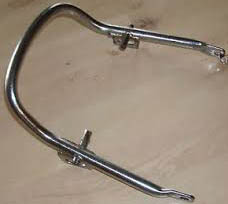
 <K5/K6
<K5/K6K6 84101-341-770
(has a flat turn signal mounting tab
with a large horizontal slot)
K7 84101-405-000
(no flat turn signal mounting tab)
K7/K8>
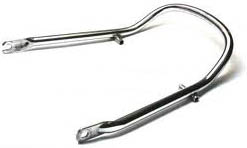
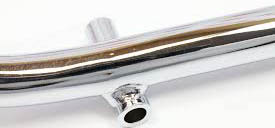
 <K7/K8
<K7/K8K8 84101-405-000
(no flat mounting tab)
Note: There is no flat turn signal mounting tab on this
because K7-K8 rear signals mount to the frame instead,

not to the grab rail, using 'Stays'
33606-405-000 (R) and 33607-405-000 (L).
Turn signal information at Sections:
5 (headlight area photos),
7 (rear turn signal mounts),
16 (turn signal lenses and turn signals),
65 (chrome grab bars) and
110 (front turn signal mounts)!
Note: Involves transition models.
Additional minor variations, changes and/or
crossovers may have occurred within some shown or listed types.
Entire site and content © Honda750Expert.com

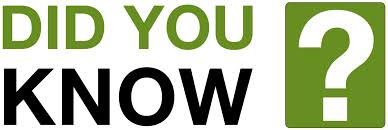
Honda uses the US 1976 Honda
750 K-model cylinder head
12200-300-405, the 1976 head,
as the
superseded replacement part number for
all US 1969 (K0) through 1976 (K6) 750 heads!

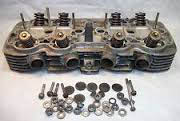
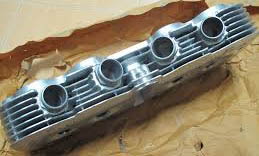

Original US Honda 750 K-model
cylinder head part numbers
K0: (up to engine 1026143)
12200-300-040,
superseded by 12200-300-405
K0: (from engine 1026144 through engine 1044805)
12200-300-060, superseded by 12200-300-405
K1: 12200-300-070, superseded by 12200-300-405
K2: 12200-300-070, superseded by 12200-300-405
K3: (up to engine 222869) 12200-300-090,
superseded by 12200-300-405
K4: 12200-300-100, superseded by 12200-300-405
K5: 12200-300-100, superseded by 12200-300-405
K6: 12200-300-405
The 1977-1978 Honda 750 K-model used a different head:
12200-392-000
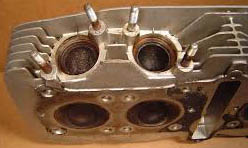
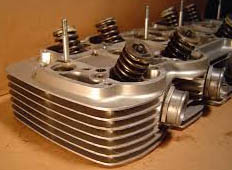
Insider Tip:
K0 through K3 heads had four
vertical bracings at the ends;
K4 through K8 heads had three
vertical bracings at the ends.


(left) 69-73 year models: 4 vertical bracings
(right) 74-78 year models: 3 vertical bracings
Insider Tip: Some K7/K8 cylinder heads have a '392' casting mark.
Insider Tip: Some 77/78F cylinder heads have a '410' casting mark.
Insider Tip:
Many Honda mechanics say:
"The 392 head is used on 77-78 K models
and also on 75-76 F models".
Do you have an oil leak or seepage ABOVE the head?
Usually, this is the one-piece 'valve cover gasket'
aka 'cylinder head cover gasket' .
Good news--
many don't know that it can be changed with the engine in the frame!
There is a YouTube video that shows the steps.
Be careful-- it is easy to put the gasket on backwards.
See section #106.
Note: Involves transition models. Additional minor variations, changes
and/or crossovers may have occurred within some shown or listed types.
Entire site and content © Honda750Expert.com

(This is a question we occasionally receive)
"What are the gray rubber plugs stuck in between
some of my US K-model's cylinder fins?
There are about 15 of them. I see little holes
in the fins where some are missing from."


Honda installed these
anti-vibration supressor/dampeners
on some years of twins and fours.
Part number 12195-300-000, they were later
superseded by part number 12620-286-000.
Known as 'Rubber Inserts',
most were a gray color, but the superseded part is black.
They are rounded, and on one end is a
locator nipple to insert into the fin hole.
 <Inserts in
<Inserts in Inserts removed>
 <holes in cylinder fins
<holes in cylinder finsK0, up to engine 1026143, used 20 rubber inserts.
K0, from engine 1026144, used 21 rubber inserts.
K1 used 21 rubber inserts. K2 used 21 rubber inserts.
K3 through K8 can use 20 rubber inserts.
Beginning with K3, most did not use rubber inserts.
Insider Tip: lube the locator nipple
when installing new rubber inserts.
Note: Involves transition models. Additional minor variations, changes
and/or crossovers may have occurred within some shown or listed types.
Entire site and content © Honda750Expert.com

68. Is your gas tank no longer firmly
secured while being cushioned?
All US Honda 750 models used
gas tank rubber mounts at both ends of the fuel tank.
40 year old rubber mounts harden, tear,
shrink, stiffen, disintegrate and/or fall out.
Honda used these same rubber front cushion mounts
for all model years-- and for all models K, F, and A:
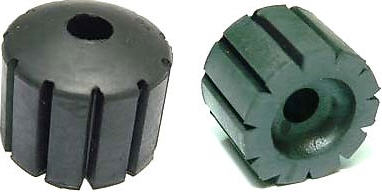
Honda 750 1969 through 1978, front,
all
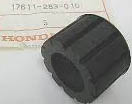 models,
models, part number 17611-283-010.
But for the rear fuel tank rubber cushion,
US K0-K8 had two versions:
K0 through K6>

17613-292-000
K7 and K8>
 <(and 75F through 78F too)
<(and 75F through 78F too)17613-399-000
Note: parts 17611-283-010 and 17613-292-000
were used on MANY other Honda motorcycle models too.
Note: Involves transition models. Additional minor variations, changes
and/or crossovers may have occurred within some shown or listed types.
Entire site and content © Honda750Expert.com

69. Fork boots
aka fork gaiters or accordion boots:
US Honda 750 K-models 1969-1976
all used the same boots!


51611-300-000
They protect the fork tubes from
getting nicked up by road debris,
which then would damage fork seals.
They fade, deteriorate, split and tear.
Must remove fork tubes away from top bridge
and steering stem to install the boots.
One end of the boot connects at
bottom of the headlight mounts,
the other end connects at the top of the fork legs.
Left and right are identical.
Same boot is also used on several other Honda models.
Insider Tip: if you find milky or oily fluid inside boots,
fork seals and fluid should be replaced.
Note: US 1977-1978 750Ks
are with no-boot
s

bare fork tubes instead.
Note: Involves transition models. Additional minor variations, changes
and/or crossovers may have occurred within some shown or listed types.
Entire site and content © Honda750Expert.com

70. Fork legs aka fork cases:
There were 8 different cases for US
K-model 750s 1969-1978;
two were the same as Honda 450!

(pictured above is 51421-341-701,
US Honda 750K 1973-1976 right side)
K0 (up to frame 1039119):
left, 51520-300-040; right, 51420-300-040
K0 (from frame 1039120 through frame 1044649):
left, 51520-319-000, right, 51420-319-000
K1: left, 51520-319-010; right, 51420-319-010
K2: left, 51520-319-010; right, 51420-319-010

(same part numbers as Honda 450 twin '70-'71 K3/K4,
as revealed by the 319 center part number!)
K3-K6: left, 51521-341-701; right, 51421-341-701
K7-K8: left, 51521-393-003; right, 51421-393-003

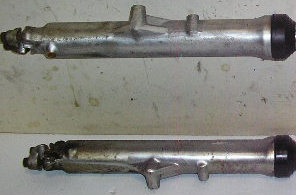
Note: Involves transition models. Additional minor variations, changes
and/or crossovers may have occurred within some shown or listed types.
Entire site and content © Honda750Expert.com

71. Fork tubes
Only 5 different tubes were used during the
entire US Honda 750K 1969-1978 series!
Honda refers to these 35mm
chrome tubes as 'Front Fork Pipes'.
1. K0: (up to frame 1039119) 51410-300-010
2. K0: (from frame 1039120) 5141-300-020,
superseded by 51410-300-405
and
K1-K2: 51410-300-020 superseded by 51410-300-405
3. K3-K6: 51410-341-702
4. K7: (up to frame 2707507) 51410-405-003
5. K7: (from frame 2707508) 51410-393-003
and
K8: 51410-393-003

Note: some owners installed longer
aftermarket fork tubes for a 'chopper' look.
Note: Involves transition models. Additional minor variations, changes
and/or crossovers may have occurred within some shown or listed types.
Entire site and content © Honda750Expert.com

72. Steering stems
Only 3 different steering stems were used
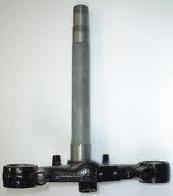
on 1969-1978 US 750 K-models!
1. K0: 53020-300-020B
and
K1, up to frame 1048862: 53020-300-020B
(has a provision for a fork lock)
2. K1, from frame 1048863: 53200-300-030B
and
K2-K6: 53200-300-030B
(has a provision for a fork lock)
3. K7-K8: 53200-392-000ZA
(no provision for a fork lock)
Note: K0 through K6 steering stems
used fork locks at their bottom.
If you find a 750 steering stem with two

studs pointing forward (or holes for them),
it won't work:
it's for the Honda 77/78 750 F-model Super Sport.
Note: Involves transition models. Additional minor variations, changes
and/or crossovers may have occurred within some shown or listed types.
Entire site and content © Honda750Expert.com

73. Salvage-yard searchers, bring the old one to compare:
There were 4 different oil tanks that came
with US Honda 750 K-models 1969-1978!
K0 1969-1970


55100-300-050B
K1-K5 1971-1975


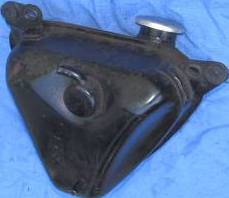 55100-300-060B
55100-300-060BK6 1976

55100-341-000
K7-K8 1977-1978
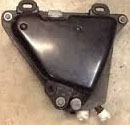
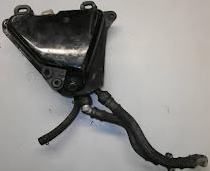
55100-392-000
K1-K6 has 4 large 'dimples' on its outer side.
K0-K6 polished dipstick cap is exposed
even when side cover in place.
K7-K8 dipstick is hidden by side cover.
Watch for rear venting and rear hose differences.
Watch for different side cover mounting.
And two different 'dipsticks' were used:
K0-K6 750s used exposed dipstick 'Oil Tank Cap'
 55105-300-010,
55105-300-010, with gasket 17631-253-000 or 010

K7-K8 750s used hidden dipstick
'Oil Level Gauge' 55105-392-000,
with 23mm o-ring 91354-371-000
Note: Involves transition models. Additional minor variations, changes
and/or crossovers may have occurred within some shown or listed types.
Entire site and content © Honda750Expert.com

74. Forgotten, yet they help
protect your bike every mile:
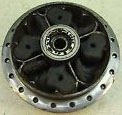
the rubber dampers inside the rear wheel hub.
It's probably time to
 replace them!
replace them!Honda 750 US K-models 1969-1978
hard-cushion damper part numbers below.
K0:
 <L
<LR(small, not shown here) 41241-300-030,
L (big) 41242-300-010
K1 through K5, and early K6:

 R (small) 41241-300-040, L (big) 41242-300-020
R (small) 41241-300-040, L (big) 41242-300-020late K6 through K8:
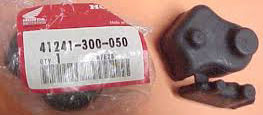
41241-300-050 (two pieces are instead now a joined single piece)
K6 up to frame 2560085 uses the
K1 through early K6 2-piece set.
K6 from frame 2560086 uses the
late K-6 through K8 1-piece set.
Here is a complete set for
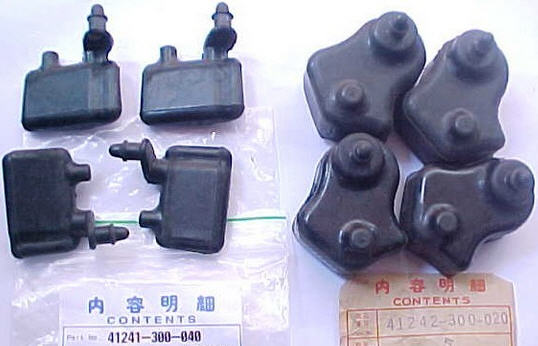
a K1 through early K6.
Note: Involves transition models. Additional minor variations, changes
and/or crossovers may have occurred within some shown or listed types.
Entire site and content © Honda750Expert.com

75. Salvage-yard and Internet searchers:
Did frames change?
Three times was the same frame
part number used for a second model-year
on a '69-'78 US Honda 750 K-model.
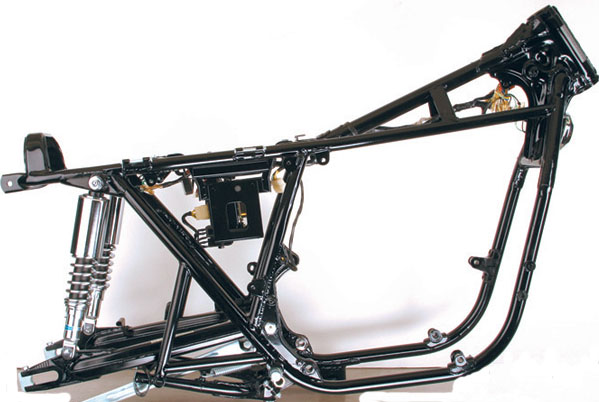
K-model frame part numbers
K0: (up to frame 1003950) 50100-300-365B
K0: (from frame 1003951) 50100-300-060B
K1: 50100-300-060B
K2: 50010-341-000B
K3: 50010-341-010B
K4: 50010-341-010B
K5: 50100-341-670ZA
K6: 50100-341-670ZA
K7: 50100-405-671ZA
K8: (up to frame 2801783) 50100-405-770ZA
K8: (up to frame 2850000) 50100-405-771ZA
K8: 50100-405-790ZA
A-model Hondamatic frame part numbers
76A: 50100-393-670ZA
77A: 50100-393-771ZA
78A: 50100-393-772ZA
F-model SuperSport frame part numbers
75F: 50100-392-670ZA
76F: 50100-392-670ZA
77F: 50100-401-670ZA
78F: (up to frame serial 2214075) 50100-410-670ZA
78F: (after frame serial 2214075) 50100-410-790ZA
Note: Involves transition models. Additional minor variations, changes
and/or crossovers may have occurred within some shown or listed types.
Entire site and content © Honda750Expert.com

76. Salvage-yard and Internet searchers:
Only two different speedometer drives
were used on K-model 750s 1969-1978!
Honda calls this part a 'Meter Gear Box'

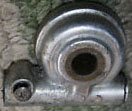
Honda 750 K-model speedometer drive part numbers
K0 speedometer drive: 44800-300-020
K1 through K8 speedometer drive: 44800-300-030
Note: Dual-disc converters often
seek the K0 speedometer drive.
Note: Involves transition models. Additional minor variations, changes
and/or crossovers may have occurred within some shown or listed types.
Entire site and content © Honda750Expert.com

77. Cables that one-fits-all-years
US Honda 750 K-models
Speedometer cable, 1969-1978
44830-426-830
Tachometer cable, 1969-1976

37260-449-840
Engine tachometer cable seal, 1969-1976

91256-096-651
Clutch cable, K8 cable that fits all K0-K8

69-78, 22870-410-010
(Throttle cables, there is no one-fits-all,
see 'Section 83' for throttle cable list)
Note: Involves transition models. Additional minor variations, changes
and/or crossovers may have occurred within some shown or listed types.
Entire site and content © Honda750Expert.com

78. Only two different reflectors were used with
US Honda 750 K-models 1969-1978.
Replace them if missing, scratched,
broken, faded, dull, or not glossy!
Small orange reflector 33741-286-670
is used on fork covers K0 and K1:



Large orange reflector 33741-340-670
is used on fork covers K2 through K8:
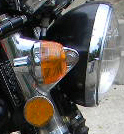
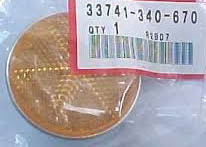
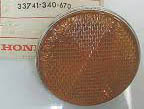

Note: Honda refers to this part as a 'Reflex Reflector'.
Note: these reflectors were used on many other Hondas.
Note: Involves transition models. Additional minor variations, changes
and/or crossovers may have occurred within some shown or listed types.
Entire site and content © Honda750Expert.com

79. Does your 750K seat
feel looser than it used to?
Maybe it's time to change
the under-seat rubbers!
1>
 1>
1> 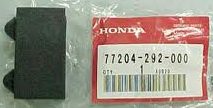
77204-292-000
2>
 2>
2> 
77205-286-000
Honda refers to them as 'Seat Setting Rubbers'.
K0 through K6 uses two #1s and three #2s.
K7-K8 uses five #2s.
Note: these pieces were used on many other Hondas.
Note: Involves transition models. Additional minor variations, changes
and/or crossovers may have occurred within some shown or listed types.
Entire site and content © Honda750Expert.com
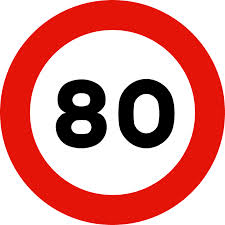
80. Honda 750 US K-model
headlight cases and their hardware
--also known as headlight 'buckets'--

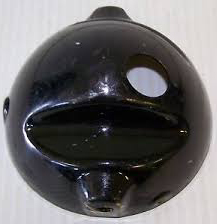
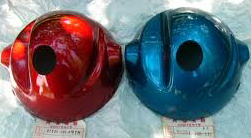

US headlight case part numbers
K0 headlight case, Candy Blue Green, 61301-300-010AZ
K0-K1 headlight case, Candy Ruby Red, 61301-300-010CM
K0-K1 headlight case, Candy Gold, 61301-300-010CQ
K1 headlight case, Candy Garnet Brown, 61301-300-010EE
K1 headlight case, Valley Green Metallic, 61301-300-010EF
K2-K5 headlight case, black, 61301-300-010B
(was superseded by 61301-300-020B)
K6-K8 headlight case, black, 61301-300-020B
Note: a chrome headlight case was
available as a later or an aftermarket item.
Some frequently needed Honda 750
headlight case hardware:
Headlight case collar
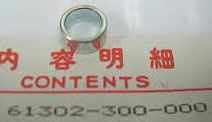 61302-300-000 (needs 2)
61302-300-000 (needs 2)Headlight case screw collar
 61304-292-000 (needs 3)
61304-292-000 (needs 3)Headlight cross screw 5X16
 93500-050-160B (needs 3)
93500-050-160B (needs 3)Headlight spring washer 5mm
Headlight case washer/nut with wire

61303-336-000 (needs 2)
Note: Involves transition models. Additional minor variations, changes
and/or crossovers may have occurred within some shown or listed types.
Entire site and content © Honda750Expert.com

81. Honda 750 US K-model
rear shock absorbers 1969-1978:
only 2 styles, but many variations.
chrome-cover used K0-K6 >
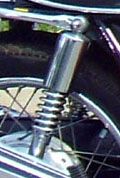
 < no cover used K7-K8
< no cover used K7-K8Honda refers to these as 'rear cushions'.
All had an eye
 at top (frame) and
at top (frame) and a clevis
 at bottom (swingarm).
at bottom (swingarm).Rear shock absorber part numbers
K0: 52400-300-010
K1: (up to frame 1048751) 52400-300-010XW
K1: (from frame 1048752) 52400-300-020XW
K2: 52400-341-000XW
K3-K5: 52400-341-670XW
K6: 52400-341-911XW
K7: 52400-392-003
K8: 52400-405-013
Frequently needed rear shock absorber hardware
Acorn flange nut at top of shock:
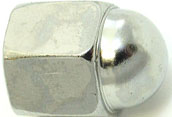
90309-315-000
10.3mm washer
 behind
behind acorn flange nut: 90521-292-000
10X32 hex bolt at bottom of shock:
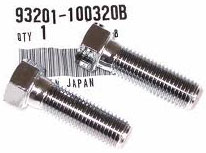
93200-100320B, superceded by 93201-100-320
Also see: shock LOWERING BLOCKS at Section 157!
Note: Involves transition models. Additional minor variations, changes
and/or crossovers may have occurred within some shown or listed types.
Entire site and content © Honda750Expert.com

82. Honda used 3 slightly-different clutch cables
during the US 750 K0-K8 series.
The final K8 cable now supersedes (replaces)
all prior 750K clutch cables.
But for accurate restorations,
here are the correct part numbers!

K0-K1: 22870-300-000,
superseded by 22870-410-000
K2-K7: 22870-341-010,
superseded by 22870-410-000
K8, up to frame 2809209 (the first 9200 K8s):
22870-341-010, superseded by 22870-410-000
K8, from frame 2809210: 22870-410-010
Note: Involves transition models. Additional minor variations, changes
and/or crossovers may have occurred within some shown or listed types.
Entire site and content © Honda750Expert.com

83. The Honda 750 US K-model throttle cable list.
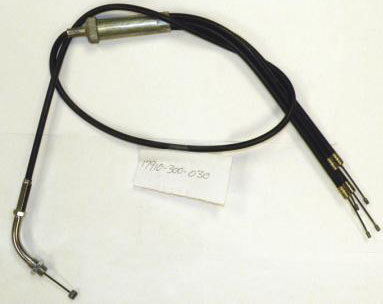
KO: 17910-300-030
K1: cable A, 17910-300-040, superseded by 17910-341-000
K1: cable B, 17920-300-020, superseded by 17920-341-000
K2-K6: cable A, 17910-341-000
K2-K6: cable B, 17920-341-000
K7-K8: cable A, 17910-393-000
K7-K8: cable B, 17920-393-000
Note: Involves transition models. Additional minor variations, changes
and/or crossovers may have occurred within some shown or listed types.
Entire site and content © Honda750Expert.com

84. Of the several positive battery cable
variations used throughout the 1969-1978
US Honda 750 K-model
series, which one can usually
be used on any model?
32401-300-010, the oldest cable.
Look at 32401-300-010 as 3 attached wires:
--the thick main cable,
and
--extra lead A
(round bullet connector at top in photo),
and
--extra lead B
(flat spade connector at left in photo).
All models use the thick main cable portion.
K0-K2 also uses extra lead A and also uses extra lead B.
K3-K6 also uses extra lead A.
It does not use extra lead B.
Fold extra lead B to make it shorter,
then cover folded lead B with electrical tape to prevent its inproper use.
This was first discussed with Honda Service Bulletin #43 in 1975.
K7-K8 does not use either extra lead.
Fold both extra leads to make them shorter,
then cover the folded leads with electrical tape to prevent their improper use.
But for correct restoration standards,
here are the original positive cable part numbers.
K0-K4: 32401-300-010 (has both extra leads attached)
K5, up to frame 2503719: 32401-300-010 (has both extra leads attached)
K5, after frame 2503719: 32401-341-000 (has only extra lead A attached)
K6: 32401-341-000 (has only extra lead A attached)
K7-K8: 32401-392-000 (has no extra leads attached)
Note: Involves transition models. Additional minor variations, changes
and/or crossovers may have occurred within some shown or listed types.
Entire site and content © Honda750Expert.com

85. Right-side
 handlebar switches
handlebar switchesUS Honda 750 K-models had 6
different right-side switches 1969-1978.
All have a starter button and a kill switch,
some have headlight functions.
Also known as 'starter/kill switches'
or as 'throttle-side switches'.
Sun can fade/discolor the entire unit and
also deteriorate the kill switch knob.
Some can use a spring-loaded

throttle-drag adjustment at bottom.

K0-K6 uses bar-internal wiring;
K7-K8 uses bar-external wiring.
Most available new, used, and reproduction.
K0 has start, kill, and
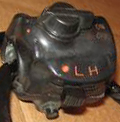
headlight off/low/high controls.
Only year-model with black kill switch.
Bar-internal wiring. 35300-300-672
K1-K2 has start, kill, and
headlight off/low/high controls.
First year-model of red kill switch.
Bar-internal wiring. 35300-300-674
K3-K4 has start, kill, and
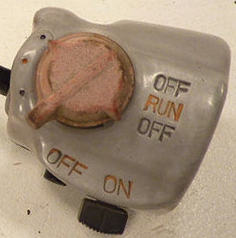
headlight off/on controls.
Example of faded coloring.
Bar-internal wiring. 35300-341-671
K5 has start, kill, and

headlight off/on controls.
Bar-internal wiring. 35150-374-671,
superseded by 35300-341-671 (the K3-K4 switch)
K6 has start and kill only;
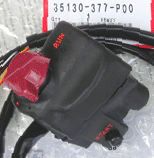
uses bar-internal wiring.
35130-341-910, superseded by 35130-377-P00
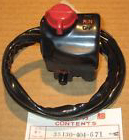 K7-K8
K7-K8 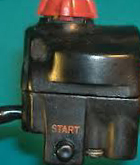
has only the start & kill; uses bar-external wiring.
35130-404-671
Right-side switch part numbers list,
US Honda 750 K-models 1969-1978
K0: 35300-300-672 (has all
headlight controls and a black kill switch)
K1-K2: 35300-300-674
K3-K4: 35300-341-671
K5: 35150-374-671, superseded by 35300-341-671
K6: 35130-341-910, superseded by 35130-377-P00
(start and kill only; last model-year
of wiring running inside handlebars)
K7-K8: 35130-404-671 (start and kill only;
wiring runs along outside of handlebars)
Pin inside switch bottom-half
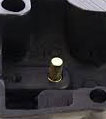
goes into hole on handlebars.
Wire bands used to secure K7-K8 external
wiring along handlebars: 32161-404-000

Insider Tip: using a headlight beam that
draws more power than the original
beam can quietly overheat any light-involved
switch and cause the switch to fail.
Note: Involves transition models. Additional minor variations, changes
and/or crossovers may have occurred within some shown or listed types.
Entire site and content © Honda750Expert.com

86. Left-side
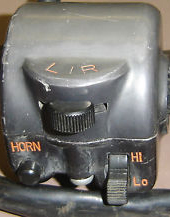 handlebar switches
handlebar switchesUS Honda 750 K-models had 6 different
left-side switches 1969-1978.
All have turn signal and horn, some
also have headlight high/low functions.
K0-K6 used handlebar-internal wiring.
K7-K8 used handlebar-external wiring.
Honda refers to these as 'winker switches'.
Also known as 'clutch-side switches'.
Sun can fade/discolor the entire unit.
Most available new, used, and reproduction.
K0-K1 has

turn signal and horn.
Bar-internal wiring. 35250-300-033
K2 had a special switch.
It had turn signals and horn, like K0/K1--
plus one other thing.
It had an additional switch screwed to its bottom,
under the horn button.
K2 was the first year of the turn signal reminder buzzer,
this button was its 'silencer':
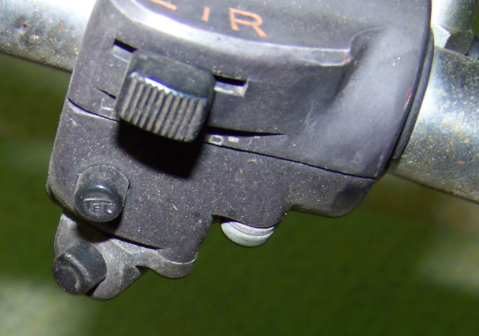


The special bottom switch allowed you to mute off
the buzzer sound while sitting at stop lights.
Bar-internal wiring. 35250-341-672.
Some early K3 owners are said to have this switch too.
See Section 126 below for additional information.
K3-K4 has
 turn signal, horn, and high/low.
turn signal, horn, and high/low.Bar-internal wiring. 35250-341-678
Left-side switch part numbers list,
US Honda 750 K-models 1969-1978
K0-K1: 35250-300-033, has turn signal and horn
K2: 35250-341-672,
has turn signal and horn and buzzer-sound-muter button
(see section 126 below for additional
information on this K2 switch)
K3-K4: 35250-341-678; has turn signal,
horn, high/low headlight, and clutch switch
K5: 35200-374-671; has turn signal,
horn, high/low headlight, and clutch switch
K6: 35200-341-910; has turn signal,
horn, high/low headlight, and clutch switch
K7-K8: 35200-404-671;
has turn signal, horn, and high/low headlight
Pin inside switch bottom-half

goes into hole on handlebars.
K3-K6 uses a
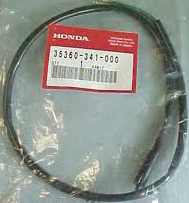
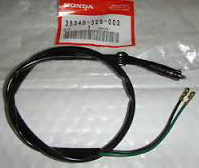
clutch-lever switch as part of a starter-safety function.
35360-341-000, superseded by 35340-329-003.
Wire bands used to secure K7-K8
external wiring along handlebars:
32161-404-000

Insider Tip: using a headlight beam that draws
more power than the original beam could
possibly quietly overheat any light-involved
handlebar switch and cause the switch to fail.
Note: Involves transition models. Additional minor variations, changes
and/or crossovers may have occurred within some shown or listed types.
Entire site and content © Honda750Expert.com

87. Salvage-yard and Internet CHARGING SYSTEM searchers:
Rectifiers for US Honda 750 K-models 1969-1978
original style >

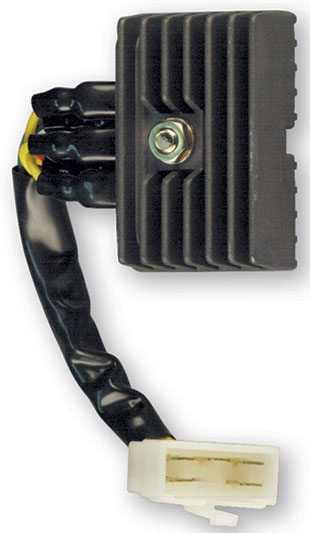 < superseded style
< superseded styleMounted on the battery box,
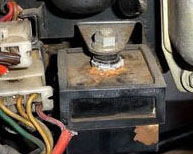
it changes the charging system's AC output to DC.
It gives the battery DC to stay charged.
It also allows current only to flow in one direction.
These can get warm to the touch.
And watch for corroded connections.
Part #4 below:




Rectifier part numbers list,
US Honda 750 K-models 1969-1978
K0-K1: 31700-300-035, superseded by 31700-333-008
K2-K8: 31700-341-015, superseded by 31700-333-008
Note: Involves transition models. Additional minor variations, changes
and/or crossovers may have occurred within some shown or listed types.
Entire site and content © Honda750Expert.com

88. Salvage-yard and Internet
CHARGING SYSTEM searchers:
Need a stator for a Honda 750
US K-model 1969-1978?
There's only 2 different part numbers.
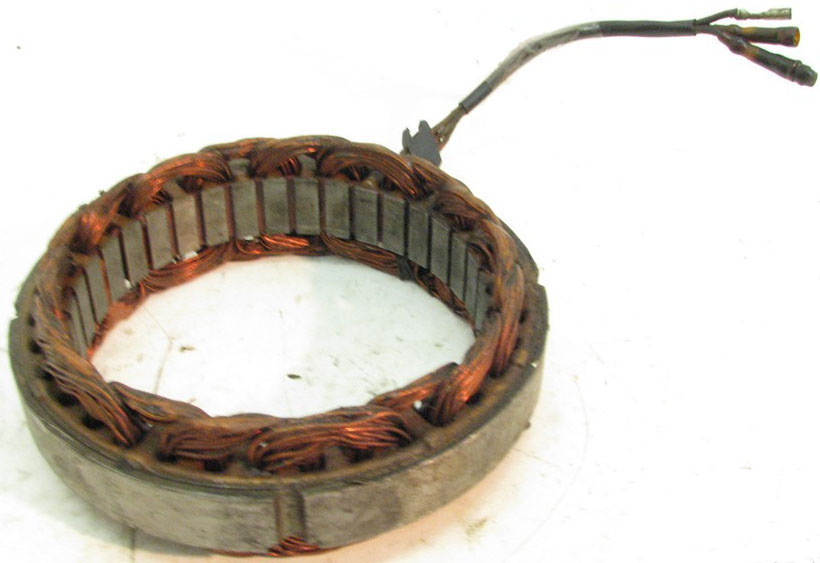
Stator part numbers list,
US Honda 750 K-models 1969-1978
K0-K6: 31102-300-035
K7, through frame 2731487: 31102-300-035
K7, beginning with frame 2731488: 31102-300-045
K8: 31102-300-045
It is found underneath these parts, on the left side:



Note: Involves transition models. Additional minor variations, changes
and/or crossovers may have occurred within some shown or listed types.
Entire site and content © Honda750Expert.com

89. Salvage-yard and Internet
CHARGING SYSTEM searchers:
Need a rotor for a Honda 750
US K-model 1969-1978?
There's only one part number--
but there were actually two different rotors!
31101-300-035
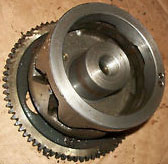
(later style, no rear step/flange,
but shown with the starting gear still behind it)
Earlier charging rotors had
a step/flange around its rear,
like a thick metal lip. 6.9 pounds.
Later charging rotors had no step/flange,
saving more than a pound. 5.7 pounds.
 < with rear step/flange no step/flange >
< with rear step/flange no step/flange > 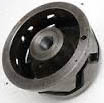
The rotor is found underneath these parts, on the left side:




Some mechanics advise that the older heavier rotor
was an issue for the end of some crankshafts
You need a puller to

remove the rotor from the engine.
(20mm X M1.5 right-hand thread)
If you don't have this tool,
some mechanics tell to use either
an old CB750 filter bolt
or the bike's rear axle.
Note: Involves transition models. Additional minor variations, changes
and/or crossovers may have occurred within some shown or listed types.
Entire site and content © Honda750Expert.com

Salvage-yard and Internet
CHARGING SYSTEM searchers:
90. Need a field coil for a Honda 750
US K-model 1969-1978?
There are four different part numbers.
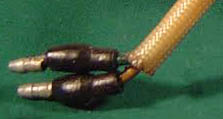
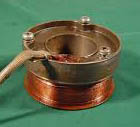
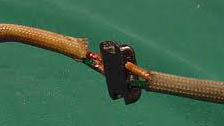
Field coil part numbers list,
US Honda 750 K-models 1969-1978
K0-K6: 31103-300-035, superseded by 31103-393-015
K7, through frame 2731487: 31103-300-035,
superseded by 31103-393-015
K7, beginning with frame 2731488: 31103-300-045,
superseded by 31103-392-731
K8: 31103-300-045, superseded by 31103-392-731
It is found underneath these parts, on the left side:




Note: Involves transition models. Additional minor variations, changes
and/or crossovers may have occurred within some shown or listed types.
Entire site and content © Honda750Expert.com

91. Salvage-yard and Internet
CHARGING SYSTEM searchers:
Need a regulator for a Honda 750
US K-model 1969-1978?
There is only one part number.
31400-300-035
Mounted on the battery box, it regulates
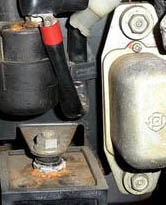
the voltage. It is adjustable.

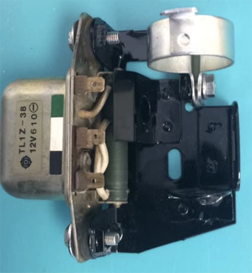
It's part #1 below:



Note: Involves transition models. Additional minor variations, changes
and/or crossovers may have occurred within some shown or listed types.
Entire site and content © Honda750Expert.com

92. Salvage-yard and Internet searchers:
There are two main different
exhaust-to-engine mounting-style
differences for '69-'78 US 750 K-models:
K0-K6 used a 'clamp-around';
K7-K8 used a 'clamp-in'.
1969-1976>
 < K0-K6
< K0-K6 K7-K8>
 <1977-1978
<1977-1978-- Some exhaust hardware used
by the earlier K0-K6 style --
1. Exhaust 'frange'/flange,

also known as an exhaust spigot.
Uses four, all four the same,
held to engine by phillips-head cross-screws.
K0 through frame 1026143,
part number 18236-300-010.
K0 beginning with frame 1026144 through K6,
part number 18236-300-030.
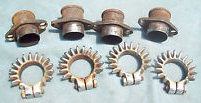

2. Phillips-head cross screw,
 8X22, uses eight.
8X22, uses eight.Part number 9360008022.
3. Exhaust gasket,
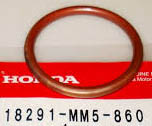 uses four.
uses four.Part number 18291-MM5-860.
4. Exhaust joint,
 uses 2 right and 2 left.
uses 2 right and 2 left.Part number, right: 18281-300-010.
Part number, left: 18282-300-010.
5. Exhaust joint hex bolt,
 uses four.
uses four.Part number 92101-08032-0B.
69-76 K-models:

--- Some exhaust hardware used
by the later K7-K8 style ---
(and also used by the Super Sport F-models 1975-1978)
(and also used by the Hondamatic A-models 1976-1978)
1. Exhaust pipe joint,
 uses four.
uses four.Part number 18231-392-000.
2. Collar,
 uses eight.
uses eight.Part number 18233-392-000.
3. Exhaust gasket,
 uses four.
uses four.Part number 18291-MM5-860.
4. Flange nut, 8mm,
 uses eight.
uses eight.Part number 94050-08000.
5. Stud, 8X32,
 uses eight.
uses eight.Part number 92900-80320E.
Older models can be changed to the newer style;
many aftermarket exhausts require stud-type.
Insider Tip:
old round exhaust gaskets seem to become
'invisible', mechanics swearing a bike had none.
Actually, they just become so smashed flat and
lose their color that they blend in with the head.
A dental-type pick often helps
to find them and to remove them.
More exhaust information at Section 41,
Section 50 and Section 143!
Note: Involves transition models. Additional minor variations, changes
and/or crossovers may have occurred within some shown or listed types.
Entire site and content © Honda750Expert.com

93. Honda 750 US K-models
clutch levers and brake levers
Clutch lever

K0-K7 can all use 53190-369-700.
K0-K3: 53190-286-670,
superseded by (photo above) 53190-369-700.
K4, to 2436284: 53190-286-670,
superseded by (photo above) 53190-369-700.
K5: 53178-329-000,
superceded by 53178-369-700.
K6: 53190-369-700,
superseded by (photo above) 53190-369-700.
K7: 53178-329-000,
superseded by 53178-369-700.
K8: 53178-467-000,
superseded by 53178-401-651.
Brake lever

K0-K7 can all use 53175-369-003.
K0-K5: 53170-300-000,
superseded by (photo above) 53170-333-000.
K6: 53175-300-020,
superceded by 53175-369-003.
K7: 53175-369-003,
superceded by 53175-369-700.
K8: 53175-431-670.
Lever cap

53180-286-000, superseded by 95010-16000.
Note: Involves transition models. Additional minor variations, changes
and/or crossovers may have occurred within some shown or listed types.
Entire site and content © Honda750Expert.com

94. Which transmission case cover is correct
for US Honda 750 K-models 1969-1978?
There were 3 different K-model part numbers--
one cover shows the shift pattern!
 >
> 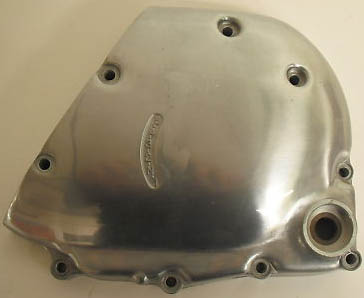
11360-300-040 11360-300-050
K0 'sandcast' models,
through 1007414: 11360-300-030
(superseded by 11360-300-040)
K0 models from 1007415: 11360-300-040
K1-K3 models: 11360-300-040
(superseded by 11360-300-050)
K4 models through 2348092: 11360-300-040
(superseded by 11360-300-050)
K4 models from 2348093: 11360-300-050
K5-K8 models: 11360-300-050
Note: 1977-1978 Honda 750F Super Sport models
use a black transmission case cover,
part number 11360-410-010.
Note: Involves transition models. Additional minor variations, changes
and/or crossovers may have occurred within some shown or listed types.
Entire site and content © Honda750Expert.com
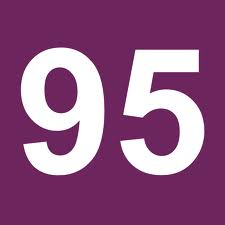
95. Salvage-yard and Internet searchers:
Which under-seat tool kit is correct
for 1969-1978 US 750 K-models?
Tool kit part numbers
K0-K2: 89010-300-000, superseded by 89010-341-010
K3-K6: 89010-341-010 (photo above)
K7: (up to frame 2732934) 89010-405-000
K7: (after frame 2732934) 89010-405-010 (photo below)
K8: (up to frame 2812425) 89010-405-000
K8: (after frame 2812425) 89010-405-010 (photo below)
Note: 1977-1978 K7-K8 tool kits
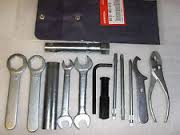
include a 6mm hex (allen) wrench.
Insider Tip:
the most valuable tool in
the kits is the spark plug wrench.
K0-K6: 89216-300-000,

superseded by 99004-18002.
K7-K8 spark plug wrench: 89216-323-000
Tool kit is kept in an under-seat

tray, next to the battery.
Note: Involves transition models. Additional minor variations, changes
and/or crossovers may have occurred within some shown or listed types.
Entire site and content © Honda750Expert.com

96. Salvage-yard and Internet searchers:
Which under-seat tool kit TRAY is correct
for 1969-1978 US 750 K-models?
There are two types: one is metal, one is plastic.
metal K0-K5
c

plastic K6-K8
K0-K5: 50341-300-010 (metal)
K6-K8: 50341-392-000 (plastic)
Paint often is corroded off the metal

tool tray because it's next to the battery.
Note: Involves transition models. Additional minor variations, changes
and/or crossovers may have occurred within some shown or listed types.
Entire site and content © Honda750Expert.com
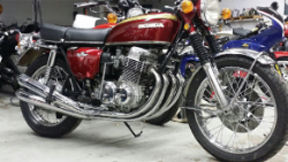

97. Salvage-yard and Internet searchers:
Which ignition coils are correct
for US 750 K-models 1969-1978?
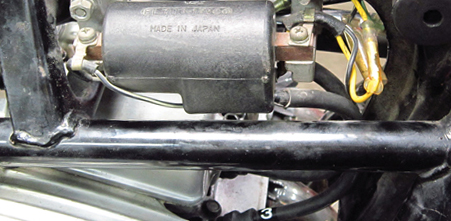
The two coils are mounted on
the frame, under the gas tank.
The left coil fires sparkplugs 1 and 4,
the outer two cylinders.
The right coil (photo above)
fires sparkplugs 2 and 3, the inner two cylinders.
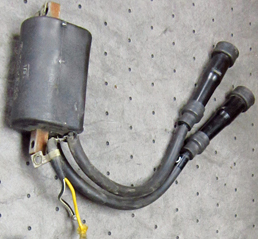
Usually, the right coil (2&3) has a yellow wire.
Usually, the left coil (1&4) has a blue wire.
The sparkplug wires are
permanently attached to the coils.
Coil part numbers
right coil: 30501-300-013,
superseded by 30501-300-003.
left coil: 30502-300-013,
superseded by 30502-300-003.
Insider Tip: the coil for the outside
cylinders
has the longer sparkplug wires.
At the ends of these coils, there should be the
correct standard spark caps for US 69-78 750K:

Outer caps (left coil): NGK XD05F

Inner caps: (right coil) NGK SD05F
Note: Involves transition models. Additional minor variations, changes
and/or crossovers may have occurred within some shown or listed types.
Entire site and content © Honda750Expert.com
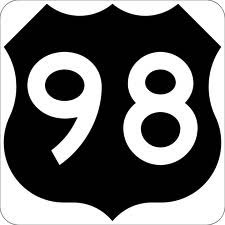
98. Salvage-yard and Internet searchers:
Which fuse box is correct for
US 750 K-models 1969-1978?
There were two types.
Both were under the left side cover.
K0-K2 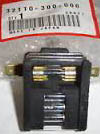 1969-1972
1969-1972
32110-300-000
K3-K8
 1973-1978
1973-1978
32110-341-702
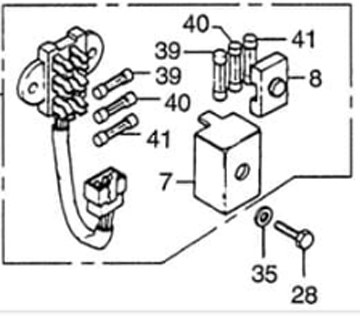
Insider Tip:
In 1978, Honda had a recall/replacement
for defective Hondamatic 750 fuse boxes.
Insider Tip:
In 1980, Honda had a
recall/replacement
for defective K7-K8 750 fuse boxes.
Note: Involves transition models. Additional minor variations, changes
and/or crossovers may have occurred within some shown or listed types.
Entire site and content © Honda750Expert.com

(This is a question we occasionally receive)
99. "Other than a basic metric tool set,
what special tools should I obtain for
doing my own 750K maintenance and repairs?"
Clutch nut socket
Alternator rotor puller
Carburetor float gauge
Carburetor sync gauges
Ignition switch nut tool
Impact wrench
Torque wrench
Rear wheel bearing retainer tool
Note: Involves transition models. Additional minor variations, changes
and/or crossovers may have occurred within some shown or listed types.
Entire site and content © Honda750Expert.com

Salvage-yard and Internet searchers:
100. Which starter solenoid is correct
for US 750 K-models 1969-1978?
All were under the left side cover, at the battery box.
There were three part numbers.
Honda calls this part a 'magnetic switch'.

K0-K3: 35850-306-670,
superseded by 35850-371-670.
K4-K6: 35850-371-670
K7-K8: 35850-375-000
Insider Tip:
Match the wire colors.
Some solenoids were made
to work with a starter safety switch.
Insider Tip:
Most K0-K6 solenoids use a metal mount;
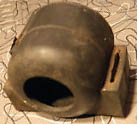
most K7-K8 solenoids use a rubber mount.
Mounts to a bracket at battery box:


Note: Involves transition models. Additional minor variations, changes
and/or crossovers may have occurred within some shown or listed types.
Entire site and content © Honda750Expert.com


Salvage-yard and Internet searchers:
101. Which gear shift pedal is correct
for US 750 K-models 1969-1978?
There were two different pedals--
the 'toe end' is the obvious difference.
K0-K6 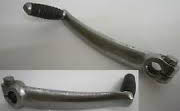
 24701-300-020
24701-300-020
K0-K6 has a 'skinny' portion for the toe to use.
K7-K8 

K7-K8 has a wider and flatter portion
for the toe to use. 24701-405-000
Honda calls this part a 'change lever'.
Note: Involves transition models. Additional minor variations, changes
and/or crossovers may have occurred within some shown or listed types.
Entire site and content © Honda750Expert.com

Salvage-yard and Internet searchers:
102. Which kickstart is correct for
US 750 K-models 1969-1978?
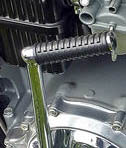
There are two different K-model
kickstarter assembly part numbers.
K0-K5 were available from Honda only as parts
(arm 28300-300-000, joint 28241-300-010, etc),
not available as complete assemblies,
but appear to use the same as K6 models.
K6: 28240-300-000.
K7-K8: 28240-392-000.
All list the replacement rubber 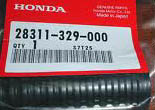
as part 28311-329-000.
Did you know:
Honda 750A Hondamatic models have no
kickstarter visible;
kept strapped
under seat,
emergency kickstart lever
28240-393-000 or
28240-393-770 is stored, used on left side of engine,
plugs on mount under cap forward of left footpeg
in exact center of right photo block below
76-78.
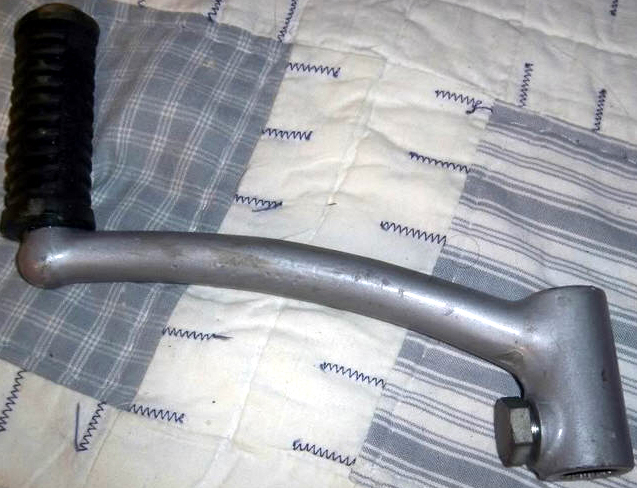

Note: Involves transition models. Additional minor variations, changes
and/or crossovers may have occurred within some shown or listed types.
Entire site and content © Honda750Expert.com

Salvage-yard and Internet searchers:
103. Which oil pan is correct for
US 750 K-models 1969-1978?
If you strip out the drain plug threads,
or otherwise damage the pan,
sometimes replacing the oil pan is better than fixing it.
There are three different
K-model oil pan part numbers.
K0 (up to 1007414, the final sandcast model):
11210-300-040.
K0 (from 1007415): 11210-300-050.
K1-K6: 11210-300-050,
superseded by 11210-300-060.
K7: (up to 2731487) 11210-300-050.
K7: (from 2731488) 11210-300-060.
K8: 11210-300-060.
Insider Tip:
The ten 6mm oil pan bolts are not all the same length.
There are three different lengths of pan bolts.
During disassembly,
label/list where each bolt is to be returned to.
Insider Tip:
During disassembly, note which of the pan bolts is
securing
the flat cable/cord clamp ('cord cramper')
32111-300-000.
All of these pans use the same
12mm drain bolt and washer.
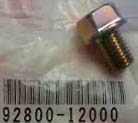

Honda 12mm drain bolt 92800-12000
12mm drain bolt washer 94109-12000
Insider Tip:
Inspect the drain bolt when
considering the purchase of a bike.
Some owners, after stripping out the drain plug,
have sealed it up and then try to quickly sell the bike.
Note: Involves transition models. Additional minor variations, changes
and/or crossovers may have occurred within some shown or listed types.
Entire site and content © Honda750Expert.com

104. "What is this piece of metal near
my 1970 750's front sprocket?
It's hidden under the sprocket cover.
My 1973 750 doesn't have it."
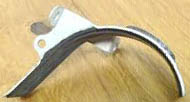
Like a mini-chainguard,
it is a 'case protector'.
Part number 11353-300-010, it was used
due to chains breaking and then damaging cases.
First K0 engine was 1000001. This part came on K0 engines
from
1026144 through 1044805 (the last K0 engine, mid-1970).
Some 750 owners are said to have added this to later models.
Note: Involves transition models. Additional minor variations, changes
and/or crossovers may have occurred within some shown or listed types.
Entire site and content © Honda750Expert.com

Salvage-yard and Internet searchers:
105. With six different versions,
which front sprocket cover is correct
for US 750 K-models 1969-1978?

Known as a 'left crankcase cover', there are six
different K-model front sprocket cover part numbers:
K0: (up to 1026143) 11351-300-020
K0: (from 1026144 through 1044805) 11351-300-040
(same engines that used the inner case protector)
K1-K2: 11351-300-050
K3-K6: 11351-300-060
K7: (up to 2720012) 11351-405-000
K7: (from 2720013) 11351-405-010
K8: 11351-405-010
Does your sprocket cover 
use this notch for wiring?
Insider Tip:
Compare the lengths of the mounting 
'extensions' to those on your old part.
1977-1978 Honda 750F Super Sport models use a
black front sprocket cover, part number 11351-410-010.
Note: Involves transition models. Additional minor variations, changes
and/or crossovers may have occurred within some shown or listed types.
Entire site and content © Honda750Expert.com

Salvage-yard and Internet searchers:
106. With four different versions,
which cylinder head cover (aka 'valve cover')
is correct
for US 750 K-models 1969-1978?
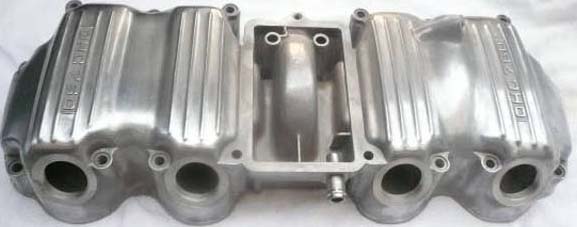
There are four
different K-model
cylinder head cover part numbers:
K0-K3: 12310-300-040,
superseded by 12310-300-060
K4: (up to 2304500) 12310-300-040,
superseded by 12310-300-060
K4: (from 2304501 to 2357330)
12310-300-050,
superseded by 12310-300-060
K5-K7: 12310-300-060
K8: 12310-405-600
Note: 1977-1978 Honda 750F Super Sport
models use a
black cylinder head cover.
1977 F
part number 12310-410-010.
1978 F
part number 12310-410-600.
Do you have an oil leak or seepage
ABOVE the head (below this cover)?
Usually, this is the one-piece 'valve cover gasket'
aka 'cylinder head cover gasket'.
Good news--
Many don't know that the valve cover gasket
can be changed with the engine in the frame!
There is a YouTube video that shows the steps.
Be careful-- it is easy to put the gasket on backwards.
Also see section #66.
Note: Involves transition models. Additional minor variations, changes
and/or crossovers may have occurred within some shown or listed types.
Entire site and content © Honda750Expert.com

Salvage-yard and Internet searchers:
107. Which chrome outer clutch cover
is correct
for US 750
K-models 1969-1978?

Shape is to clear the kickstart lever.
There are two different K-model
clutch cover part numbers:
K0-K5: 11348-300-010
K6 (up to 2429099): 11348-300-010
K6 (from 2429100): 11348-392-000
K7-K8: 11348-392-000
Note: Involves transition models. Additional minor variations,
changes and/or crossovers may have
occurred within some shown or listed types.
Entire site and content © Honda750Expert.com

Salvage-yard and Internet searchers:
108. With four different versions,
which head cover breather is correct
for US 750 K-models 1969-1978?

There are six different K-model
head cover breather part numbers:
K0 (up to 1010337): 12321-300-010
K0 (from 1010338): 12321-300-020
K1-K2: 12321-300-020
K3-K6: 12321-300-030,
alternate 12321-300-305.
K7: (up to 12321-300-040) 12321-300-040
K8: 12321-405-600
Note: 1977-1978 Honda 750F Super Sport
models use a black head breather cover.
1977 F
(up to 2612797): 12321-410-000,
superseded by 12321-410-600.
1977 F
(after 2612797): 12321-410-600
1978 F: 12321-410-600.
Note: Involves transition models. Additional minor variations, changes
and/or crossovers may have occurred within some shown or listed types.
Entire site and content © Honda750Expert.com

(This is a question we often receive)
109. "I see old Honda 750 K-models listed for
sale that tell of having Harley rear wheels.
What model Harley were these wheels
taken from, and what is the benefit?"
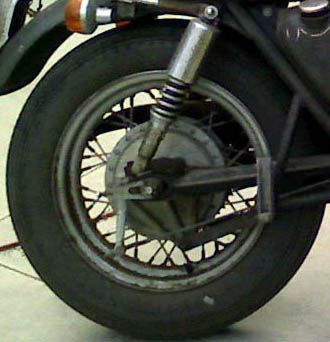
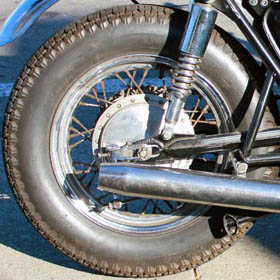
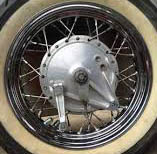
They aren't really actual wheels taken from Harleys!
First, the 40 spokes of the 1969-1976
Honda 750's 18" rear wheel are cut.
Then a wide 16" chrome rim
is laced to the 750's hub using
shorter spokes (often from
Buchanan's in Azusa California).
This lowers the rear end and
the seat height, allowing for being
flat-footed at stoplights for many
who used to be on their toes.
Note: for 1977-1978 K-models, Honda used a
shorter & wider 17" rim for the rear wheel.
This is a little shorter than the earlier models' 18",
and it is a little taller than the 16" 'Harley' conversion.
.
Insider Tip:
changing to this type of wheel/tire usually
causes higher
engine RPM on the highway.
This can be offset some by a sprocket change.
Insider Tip:
changing to this type of wheel/tire sometimes
prevents the kickstand from working properly.
Some owners report success in changing to the
slightly-shorter kickstand from a smaller model
Honda twin of the same era, such as a CB-350.
Insider Tip:
changing to this type of wheel/tire usually
makes it harder to get the bike up on to its centerstand.
Note: Involves transition models. Additional minor variations, changes
and/or crossovers may have occurred within some shown or listed types.
Entire site and content © Honda750Expert.com

Salvage-yard and Internet searchers:
110. Four different front turn signal mountings
were used
for US 750 K-models 1969-1978.
All are chromed and hollow, letting wire run through them.
Known as signal 'stems', signal 'stalks', and 'winker bolts'.
K0-K2 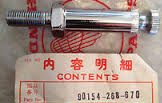 90154-268-670
90154-268-670
Uses 10mm flat washer 94101-10200 and 10mm spring washer 94111-10000
K3-K4  90154-341-670
90154-341-670
Uses 12mm spring washer 94111-112-000 and hex nut 94001-120-0002
K5-K6 90154-374-670
Uses 12mm spring washer 94111-12000 and 12mm thin nut 94002-12000
K7-K8  built into headlight holders
built into headlight holders
Turn signal information at
Quick Tips:
5 (headlight area photos),
7 (rear turn signal mounts),
16 (turn signal lenses and turn signals),
65 (chrome grab bars) and
110 (front turn signal mounts)!
Note: Involves transition models. Additional minor variations, changes
and/or crossovers may have occurred within some shown or listed types.
Entire site and content © Honda750Expert.com

Salvage-yard and Internet searchers:
111. Honda shows the same oil pump
part
number
for all US 750
K-models 1969-1978.
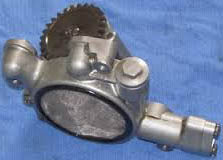

All list 15100-300-000.
Note: Involves transition models. Additional minor variations, changes
and/or crossovers may have occurred within some shown or listed types.
Entire site and content © Honda750Expert.com

112. Why is there a rubber plug
near the end of the rear fender?
What is  it for?
it for? 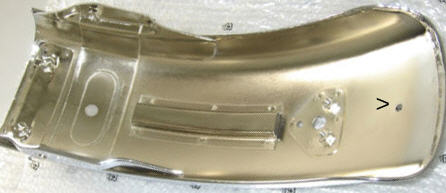

In some areas, it is said to be a license plate stopper.
Note: Involves transition models. Additional minor variations, changes
and/or crossovers may have occurred within some shown or listed types.
Entire site and content © Honda750Expert.com

113. Gauge faces, US Honda 750 K-models
K0>
K1>
K2-K3>
K4-K5>
K6>
K7-K8> 
Gauge face photos above are courtesy
of Marcel at www.CB750faces.com,
who does gauge restorations and supplies gauge parts.
Smaller/sharper versions of these gauge
face photos are way above at Section #13.
Note: Involves transition models. Additional minor variations, changes
and/or crossovers may have occurred within some shown or listed types.
Entire site and content © Honda750Expert.com

114. Air cleaner cases,
US Honda 750 models
('cases' are the upper half of the assembly;
the bottom half is known as the air filter cover)


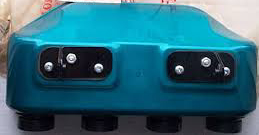
Here is a general list of
air filter housing cases (top halves):
K0 1969-1970 year models, housing is often
same color as gas tank and side covers,
through frame #10444649 which is the last K0 frame:
17214-300-040-(color code here).
17214-300-040AZ: Candy Blue Green
17214-300-040CM: Candy Red
17214-300-040CQ: Candy Gold
K1 1971 year model, black only, beginning with frame
1044650
which is the first K1 frame: 17212-300-030B.
K2-K6 1972-1976 year models, black only: 17212-341-000.
K7 1977 year model, through frame 2731019,
black only, with top hose port: 17240-405-305.
K7 1977 year model, beginning frame 2731020,
black only, with top hose port: 17240-405-315.
K7-K8 1977-1978 year models, black only,
with top hose port: 17240-405-315.
SuperSport F 1975 year model, black only: 17240-392-000,
superceded by 17240-392-305 (same as early K7 model).
SuperSport F 1976 year model, black only: 17240-392-305.
SuperSport F 1977-1978 year models, black only:
17240-405-315 (same as late 77 and 78 K models).
Insider Tip:
The 'smog port' was used on all years of F air filter cases above,
and also on 77-78 K air filter cases.
Need to replace the rubber gasket
between the upper and lower halves?
Part #17221-341-000 for K1 through K6.
This gasket is known as 'Packing, air cleaner'.
Insider Tip:
replacing this gasket where it was missing
often eliminates some poor running.
Note: there was an emissions change
(an intake port added)
for 1977-1978 K,F, and A models,
as well as on 1976 A models.



For convenience, here is also a general list
of air filter housing 'covers' (bottoms):
K0 1969-1970 year models, housing is
same color as gas tank and side covers,
through frame #10444649 which is the last K0 frame:
17231-300-020-(color code here).
K1 1971 year model, black only,
beginning with frame 1044650
which is the first K1 frame:
17231-300-030B.
K2-K6 1972-1976 year models, black only:
17231-341-010.
K7-K8 1977-1978 year models, black only:
17231-392-000.
SuperSport F 1975-1978 year models, black only:
17231-392-000 (same as 77-78K).
More air filter information
at sections 2 and 48!
Note: Involves transition models. Additional minor variations, changes
and/or crossovers may have occurred within some shown or listed types.
Entire site and content © Honda750Expert.com

115. Emissions 'smog' parts,
US Honda 750 models
1976 to 1978, emissions-reducing parts were added.
So besides power-robbing cam and
ignition timing changes, and leaner carburetion,
there were now 'smog' parts added to the
bikes such as these examples below:


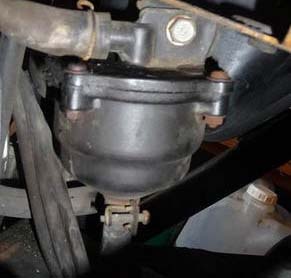
Besides related vacuum hoses,
there were solenoid valves,
check valves, breather chambers and more.
Note: there was also an emissions change
on the top of the air filter box
(an intake port added)
for 1977-1978 K,F, and A models,
as well as on 1976 A models.

Note: Involves transition models. Additional minor variations, changes
and/or crossovers may have occurred within some shown or listed types.
Entire site and content © Honda750Expert.com
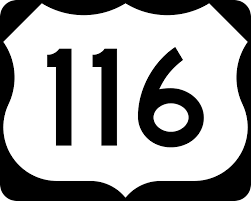
116. Original factory tires,
US Honda 750 K-models
(and sizes for F-models and A-models also below)
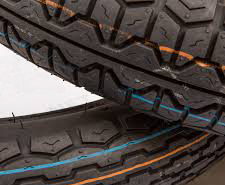
1969-1976 K-models:
4.00 x 18 on the rear, 3.25x19 on the front.
1977-1978 K-models:
4.50 x 17 on the rear, 3.50x19 on the front.
Factory original tires were typically
Bridgestone and/or Dunlop.
Typically block tread rear, ribbed tread front.
Example of tire models from a portion
of a CB750 rear fender sticker:

Note:
Hondamatic A-models used 4.50x17 rear, 3.50x19 front.
Note:
SuperSport F-models used 4.00x18 rear, 3.25x19 front.
Insider Tip:
Watch for these 3 possible
markings on sidewalls of new tires:
Red dot
(or a tire with both a red and a yellow dot)--
red dot is lightest part of this tire,
goes at wheel valve stem.
Yellow dot--
Yellow dot is lightest part of this tire,
goes at wheel valve stem.
Directional arrow--
Usually points in direction of tire rotation
(see tire manufacturer for any exception to this).
______________________
TIRE SURVEY:
Because many ask me
"Tire sizes are different now--
which should I use nowadays?",
I asked many CB750 riders.
Here is a summary of their answers.
69-76 K models:
By far most common>Rear- 110/90-18
(like a 4.00X18).
Rear: 120/90-18
(like a 4.50 X 18, feels good on straight
but less good than a 110 on turns).
Rear- 130/90X18
(like a 5.10X18,
very wide, barely fits, poor on turns).
Front- 100/90-19
77-78K models:
Rear: 120/90X17 or 130/90X17
Front: 100/90X19 or 110/90X19
Note: Involves transition models. Additional minor variations, changes
and/or crossovers may have occurred within some shown or listed types.
Entire site and content © Honda750Expert.com

117. Inner clutch cover, US Honda 750 K-models

Sand-cast models had 9 outer screw holes;
all others after had 10 outer screw holes.
(tenth hole is under where clutch cable enters this cover)
Sandcast K0 (up to 1007414): 11342-300-040
K0 (beginning with 1007415): 11342-300-050
K1-K4: 11342-300-050 (superceded by -060)
K5-K8: 11342-300-060
Note: Involves transition models. Additional minor variations, changes and/or crossovers may have occurred within some shown or listed types.
Entire site and content © Honda750Expert.com

118. Some part numbers for
warning/service decals and labels,
US Honda 750 K-models
Insider Tip:
some clear-background decals had 'variants',
almost like a 'reversal image';
clear letters on black backgrounds,
or black letters on clear backgrounds,
or clear using white.
Also, some were in different languages
and/or in multiple languages.
Originals and reproductions are available for most.
K0
K0: (rear fender, from 1013419) Tire Mark Caution Label 87505-300-670
K0: (oil tank cover, up to1044649) Engine Oil 87125-300-000
K1

K1:
K1:
K2
K2: (rear fender) Tire Mark Caution Label: Important/ Information/
Model CB750/ Tire Pressures/ Capacity Load 87505-341-670

K2: (gas tank, from 1103001) Drive Caution Label: Remember/Preserve Nature/
Always Wear A Helmet/Think Safety 87560-323-670A/ZA

K2: (oil tank cover, from 1044650) Engine Oil/ Grade 10W40 or 20W 50/ 3.5 (7.4 US pints/
Change oil and check filter every 3000 KM (2000 miles) 87125-300-010
K3

K3:
K3:
K4

K4:
K4:
K5

K5: (gas tank) Drive Caution Label: Remember/Preserve Nature/
Always Wear A Helmet/Think Safety 87560-323-670A/B/ZA
K5: (rear fender) Tire Mark Caution Label: Important/ Information/
Model CB750/ Tire Pressures/ Capacity Load 87505-341-670/671
K5: (oil tank cover) Engine Oil/ Grade 10W40 or 20W 50/ 3.5 (7.4 US pints/
Change oil and check filter every 3000 KM (2000 miles) 87125-300-010


K6
K6: (gas tank) Drive Caution 87560-375-680A/ZA


K6: (oil tank cover, 5 lines) Engine Oil/ Caution/
See owner's manual/ When change or add oil do not
overfill/
Engine oil 3.5 3.7 US quarts/change oil and check
oil filter every 3000 km (1500-2000 mile) 87125-392-771

K6: (by exhaust area) 87504-028-670
K6: (on inner rear black plastic fender, 2 decals)
Warning Label Accessories and Loading 87512-371-670;
and Battery Caution Mark 87506-341-670


K6: (on inner rear black plastic fender, 2 decals)
Warning Label Accessories and Loading 87512-371-670;
and Battery Caution Mark 87506-341-670
K7
K7:
K7:
K8
K8: (gas tank) Drive Caution 87560-375-680ZA/ZB/ZE/ZF
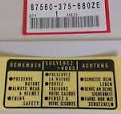
K8: (tire caution mark) 87505-405-670
K8: (oil tank) 87125-392-771

K8: (warning accessories and loading) 87512-371-670
K8: (inner fender) 87506-405-770
K8: (exhaust) 87504-028-670
Insider Tip:
some clear-background decals had 'variants',
almost like a 'reversal image';
clear letters on black backgrounds,
or black letters on clear backgrounds,
or clear using white.
Note: Involves transition models. Additional minor variations,
changes and/or crossovers may have occurred
within some shown or listed types.
Entire site and content © Honda750Expert.com

119. Chrome mufflers,
US Honda 750F SuperSport models
The original Honda chrome muffler attached
on to the Honda 4-into-1 exhaust header.
 <75/76F
<75/76F 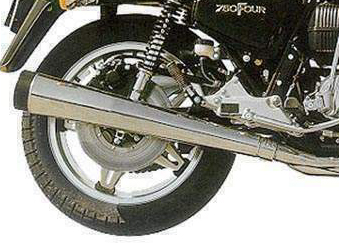 <77/78F
<77/78F1975-1976 Honda 750F muffler: 18310-392-000
1977-1978 Honda 750F muffler: 18310-410-671
(-671 superceded by -677)
Note: Involves transition models. Additional minor variations,
changes and/or crossovers may have occurred
within some shown or listed types.
Entire site and content © Honda750Expert.com
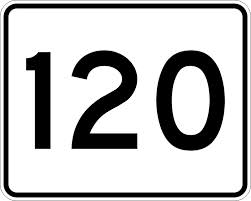
120. Comstar 5-'spoke' wheels
on
1978 A Hondamatic models
and on 1977-1978 US F 750 SuperSport models
(no US K-model 750 1969-1978 had Comstar wheels)
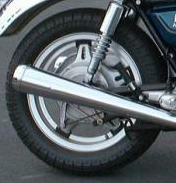 < 1978 A-model >
< 1978 A-model > 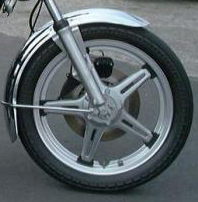
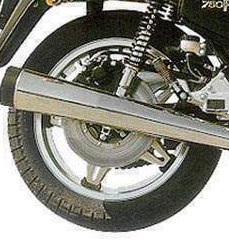 < 1977 and 1978 F-model >
< 1977 and 1978 F-model > 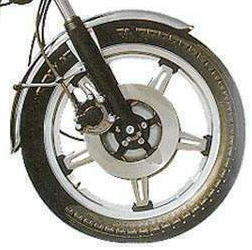
1978 A-model US HondaMatic 750A:
basic 17" rear drum brake wheel, no hardware
or attachments: wheel 42660-410-670.
basic 19" front wheel, no hardware or attachments,
uses one disk rotor: wheel 44660-410-670.
1977-1978 F-model US SuperSport 750F:
basic 18" rear disk brake wheel, no hardware
or attachments: wheel 42660-393-780.
basic 19" front wheel, no hardware or attachments,
uses two disk rotors: wheel 44660-410-670.
The many assembled wheel parts
together appear to become 5 'spokes'.
The '77-'78 F-model Comstar rear
wheel has a rear disk brake;
the '78 A-model Comstar rear
wheel has a drum brake.
The '77-'78 F-model Comstar
front wheel uses dual disks;
the '78 A-model Comstar
front wheel uses a single disk.
Insider tip:
same part number for the front wheel of all three bikes.
Front Comstar A and F models
Rear Comstar  1978 750A Automatic
1978 750A Automatic
Rear Comstar 1977-1978 750F SuperSport
Insider tip:
Check for any loose rivets.
Check for cracks near joints.
Insider tip:
Although the A and F Comstar
basic front wheels are the same,
their front wheels use different
disk rotors (see Section 58).
 <front rear>
<front rear> 
Center hub areas,
1978 Honda 750 F SuperSport Comstar wheels
The black plastic 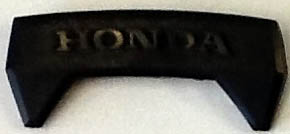 rivet covers
rivet covers
Front and rear Comstar wheel rivet covers look very similar
but they are different and they will not interchange.
They are known by Honda as 'Spoke Plate Marks'.
On their inner side, each has two small nipples that insert
into these holes ![]() on the wheel in between the rivets.
on the wheel in between the rivets.
Front: 44703-410-003 (a wheel uses ten of these)
Rear: 42703-410-003 (a wheel uses ten of these)
Comstar wheel  balancing weights
balancing weights
20g: 42705-410-000 30g: 42706-410-000
Insider Tip:
using tire irons on these rims when
changing a tire can damage the rims.
Honda offered Comstar Rim Protectors
(possibly 07772-0020200 / 07772-002020),
and there are also after-market rim protectors available.
Note: Involves transition models. Additional minor variations,
changes and/or crossovers may have occurred within some shown or listed types.
Entire site and content © Honda750Expert.com
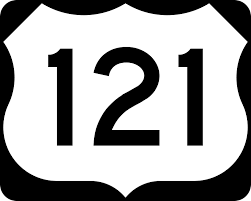
121. Camshafts,
for all US Honda 750 models K, F, and A!
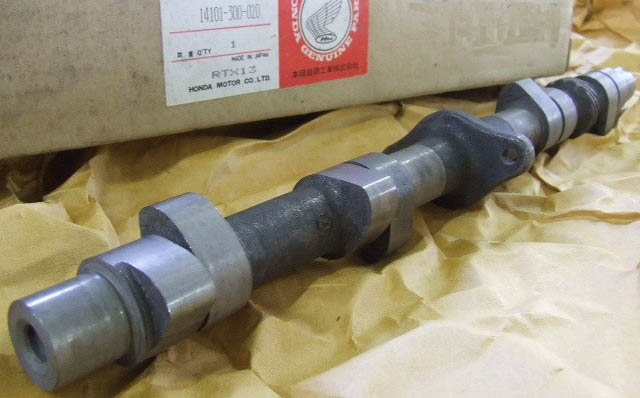
Honda lists only 2 K-model cam part numbers:
For K0-K6 it is 14100-300-020,
and
for K7-K8 it is 14101-392-000
This does not mean that all cams
1969 through 1976 were the same.
They weren't. There were many changes.
As with some many other Honda parts,
whenever a cam was slightly
changed for a next year model,
it used the same part number of the old part
and it then completely replaced the older part.
The newest part is said to be
'backward-compatible' with all years.
And the newest part will work,
but possibly causing different characteristics.
So, if you want a duplicate of your original
K-model's cam original lift and duration
(exact valve open and close time),
you may have to seek a verified-year
used part and/or bring
lobe-measuring tools such as calipers.
Honda lists 2 F-model SuperSport cam part numbers:
For 75-76F it is 14100-392-000,
and for 77-78F it is 14101-410-000.
Note that according to Honda part numbers,
the K7 and K8 models use the
cam from the 75-76 F model!
Different markings are observed on
various used Honda 750 camshafts,
including 'R' numbers near the sprocket area.
Honda lists just one A-model Hondamatic
cam part number as available:
For 76-78A it is 14101-393-000.
Note: Involves transition models.
This section is not all-inclusive to cam variations.
Additional minor variations, changes and/or crossovers
may have occurred within some shown or listed types.
Entire site and content © Honda750Expert.com

122. Rear brake pedal stoplight switches
and their return springs-- and their mounting brackets,
for all US Honda 750 1969-1978 K-models

Rear brake light pedal switches are also known as
'stop lamp switches' and a 'stop switch assemblies'.
There were three different switches,
two different springs, and two different brackets.
K0-K1 switch: 35350-292-003,
superceded by 35350-KJ9-405
(same 336/KJ9 switch is also used
on many other Honda models)
K2-K6 switch: 35350-336-000,
superceded by 35350-KJ9-405
K7-K8 switch: 35350-086-721,
superceded by 35350-GB2-505

K0-K6 rear brake pedal light switch spring:
35357-300-000
(same spring is also used on  many other Honda models)
many other Honda models)
K7-K8 rear brake pedal light switch spring:
35357-393-000
K0-K6 stop switch bracket: 50156-300-020

K7-K8 stop switch bracket: 50146-392-000
Note: Involves transition models.
Additional minor variations, changes and/or crossovers
may have occurred within some shown or listed types.
Entire site and content © Honda750Expert.com

123. Front wheel hub
for US
Honda 750 1969-1978 K-models

There were three different front wheel hub
part numbers during these model years.
K0: 44601-300-030
K1-K6: 44601-300-040
(same hub is also used on
a few other Honda models)
K7-K8: 44601-405-000
Note: Involves transition models.
Additional minor variations, changes and/or crossovers
may have occurred within some shown or listed types.
Entire site and content © Honda750Expert.com
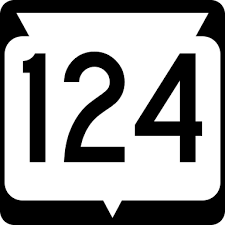
124. Rear wheel hub for US
Honda 750 1969-1978 K-models
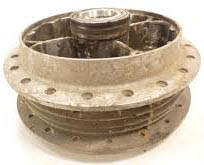
There were four different rear wheel hub
part numbers for these model years.
K0: 42601-300-020
K1 up to 1073285: 42601-300-020
K1 from 1073286: 42601-300-030
K2-K5: 44601-300-030
K6: up to 2560085: 42601-300-030
K6: from 2560086: 42601-300-040
K7-K8: 42601-300-040
Every model above now uses the same
superceded part number: 42601-300-050
Insider Tip: some changed mid-model-year,
not just at start of a new model-year.
Note: Involves transition models.
Additional minor variations, changes and/or crossovers
may have occurred within some shown or listed types.
Entire site and content © Honda750Expert.com
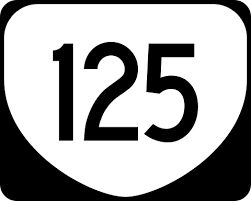
125. Spark Advancers,
for all US
1969-1978 Honda 750 models K, F and A
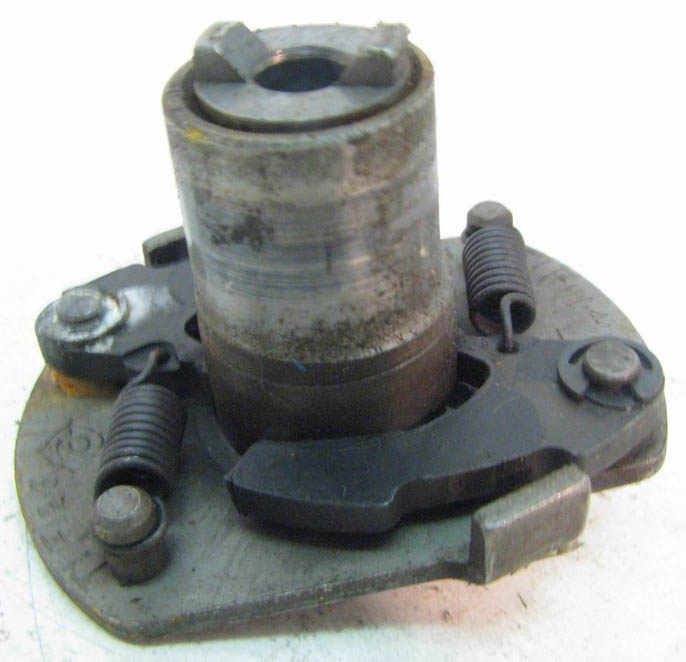
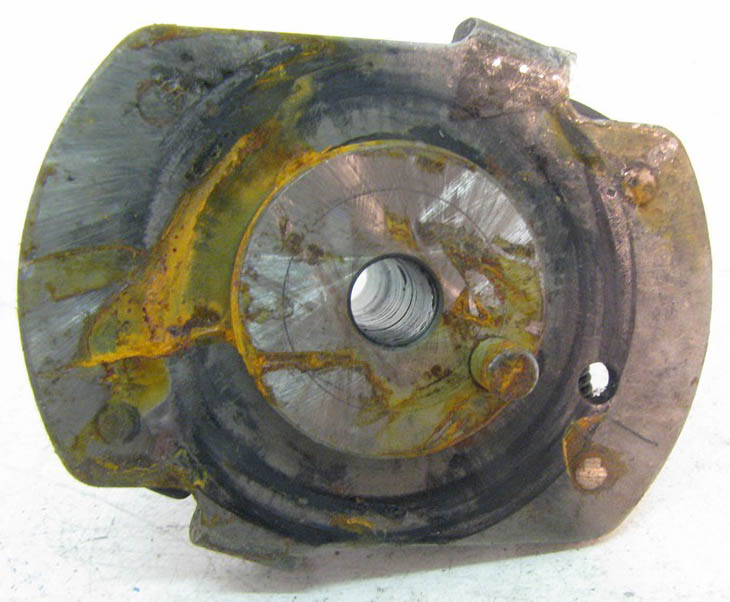
Found under the points/condensors plate.
Honda lists only 2 K and F model
spark advancer part numbers:
For 1969-1978 K&F it is 30220-300-005,
and alternate/supercede is 30220-300-154.
This does not mean that all K&F spark advancers
1969 through 1978 were the same.
They weren't.
There were many differences through the model years.
As with some many other Honda parts,
whenever a spark advancer was
slightly changed for a next year model,
it used the same part number of the old part
and it then completely replaced the older part.
The newest part is said to be
'backward-compatible' with all years.
And the newest part will work,
but possibly causing different characteristics.
So, if you want a duplicate of your original
K or F model's spark advancer configuration
(exact springs, exact weight of
the weights, exact markings,
exact strength of springs,
exact degrees of advance,
exact time when the full advance occurs,
exact advance-stopping nubs, etc),
you may have to seek a verified-year
used part and/or
use close inspection with measurements.

Insider Tip:
most old spark advancers can be
cleaned up,
lubed, and have their springs rehabbed.
Three commonly-needed hardware pieces
related to some Honda 750 spark advancers:
1. 'Special (recessed & slotted) Washer' 
30233-300-000,
2. 'Advancer Shaft' 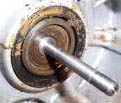 30231-300-010, and
30231-300-010, and
3. 'Oil Felt' 30205-003-005 / 30205-300-154.
Photo sent by a contributor:
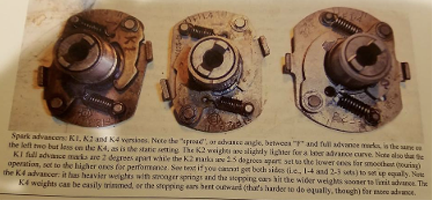
Honda lists only 2 A (Hondamatic)
model spark advancer part numbers:
For 1976-1978 A it is 30220-323-004,
and alternate/supercede is 30220-377-154.
Note: Involves transition models.
This section is not all-inclusive to all spark advancer variations.
Additional minor variations, changes and/or
crossovers may have occurred within some shown or listed types.
Entire site and content © Honda750Expert.com

126. "Mystery switch button!
In a box of supposedly Honda
750 handlebar switches,
I found a really
odd left-side one.
Besides the turn-signal switch
and the horn button, it's got
a mystery extra button added
underneath the horn button!
I have had many Honda 750s from 1969 to 1978,
and none had a switch like that".

The K2 model was the first US
CB750 with a turn-signal buzzer.
This button (above) is to mute the
buzzer when sitting at a stoplight.
The switch with the special mute button
was only used for the K2 model year.
Part number 35250-341-672.
Some early-K3 owners report having that switch too.


See Section 86 above for more information.
Note: Involves transition models.
Additional minor variations, changes and/or crossovers
may have occurred within some shown or listed types.
Entire site and content © Honda750Expert.com

127. Chain adjusters,
for all US
1969-1978 Honda 750 K-models
Used to adjust the angle of the rear axle/wheel
and to adjust the slack of the drive chain.
Two main types.
K0 through K6 were the same;
the K7-K8 adjusters were different.
The one obvious difference on the
sides helps to spot the correct set to use!
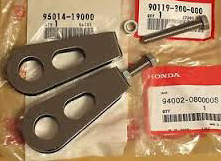 <K0-K6
<K0-K6
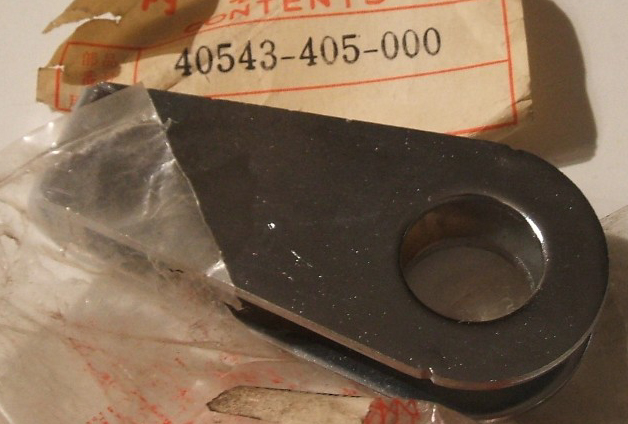 <K7-K8
<K7-K8
Both had a round hole on the
sides of the body, for the axle.
K0-K6 also had an oblong 'window'
hole on the sides of the body.
K7-K8 did not have that second hole.
Chain adjuster 'body', K0-K6: 95014-19000
Chain adjuster 'body', K7-K8: 40543-405-000,
superceded by 40543-392-000
All years used the same adjuster bolt:
90119-300-000.
All years used the same 8mm adjuster bolt locknut:
94002-080000S
Note: Involves transition models.
Additional minor variations, changes and/or crossovers may
have occurred within some shown or listed types.
Entire site and content © Honda750Expert.com

128. Rear wheel axles,
for all US
1969-1978 Honda 750 K-models
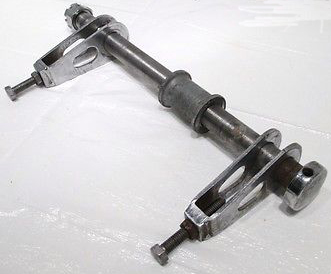
K0, up to 1044649: 42301-300-000
K1-K2, beginning 1044650: 42301-300-010

K3-K5: 43201-300-020
K6: 42301-300-010 (same part number as K1-K2)
K7-K8: 42301-393-000, superceded by 42301-425-970
(part numbers are for bare axles only--
no spacers, nuts or adjusters)
Note: Involves transition models.
Additional minor variations, changes and/or crossovers
may have occurred within some shown or listed types.
Entire site and content © Honda750Expert.com
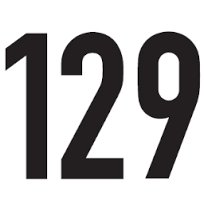
129. Front wheel axles,
for all US
1969-1978 Honda 750 K-models
K0-K6 front axle: 44301-300-000,
superceded by 44301-425-870.
K7-K8 front axle: 44301-393-870,
superceded by 44301-425-870.
(part numbers are for bare axles only--
no spacers or nuts)

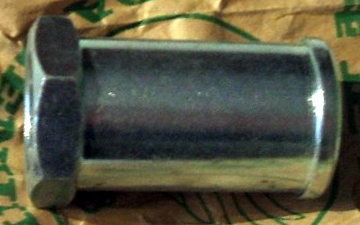
K0-K6 front axle nut 90305-300-000,
superceded by 90306-425-870.
K7-K8 front axle nut 90306-333-000,
superceded by 90306-425-870.
Note: Involves transition models.
Additional minor variations, changes and/or crossovers
may have occurred within some shown or listed types.
Entire site and content © Honda750Expert.com

130. License plate registration holders,
for all US
1969-1978 Honda 750 K-models
Rarely used in the last 40 years, in some states
these
non-Honda-item clear plastic tubes were mounted across
two license plate bolts to hold the registration.
After the K0-K2 years, popularity faded away.
Most state vehicle codes no longer require
that motorcycles have registration displayed.

Never issued by Honda, this was an after-market item.
They are still available, known as 'registration tubes',
'stash tubes'
and 'motorcycle registration tubes'.

Often sold wide, you trim tube to needed
length and then put end-cap back on.
Note: Involves transition models.
Additional minor variations, changes and/or crossovers
may have occurred within some shown or listed types.
Entire site and content © Honda750Expert.com

131. Oil cap / dip sticks,
for all US
1969-1978 Honda 750 K-models

K0-K6: 55105-300-010 (uses a gasket)
K7-K8:  55105-392-000
55105-392-000
(uses a 23mm o-ring)
Note: Involves transition models.
Additional minor variations, changes and/or crossovers
may have occurred within some shown or listed types.
Entire site and content © Honda750Expert.com
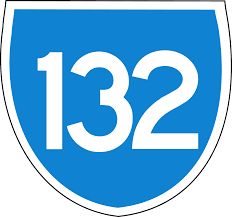
132. Front axle holders,
for all US
1969-1978 Honda 750 K-models

K0-K2 front axle holder 51634-292-000,
superceded by 95014-41000.
K3-K8 front axle holder 95014-41000.
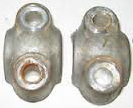
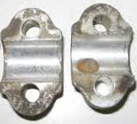
Insider Tip: ![]() Watch for any markings.
Watch for any markings.
WARNING:
If installed improperly these can cause
a dangerous situation, injury and death.
Note: Involves transition models.
Additional minor variations, changes and/or crossovers
may have occurred within some shown or listed types.
Entire site and content © Honda750Expert.com

133. Rear foot peg
differences for all
US 1969-1978 Honda 750 K-models
Also known as passenger foot pegs,
there were three different rear foot-peg styles.
Honda refers to these as 'pillion (passenger seat) steps'.
K0-K4: a square-shape
(used on many Honda models of this era and even older)

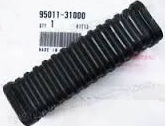
Uses replacement rubber 95011-31000
K5-K6: a rounded-shape
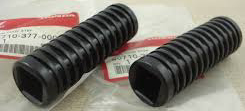
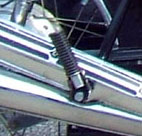
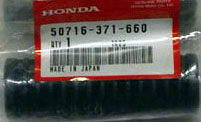
Uses replacement rubber 50710-377-000,
superceded by 50716-371-660
K7-K8: a rounded-shape


Uses replacement rubber 50710-405-000
|
Note:
Some model-year metal peg mounting
brackets were straight, some were angled.
And
for the K5-K6 model years, the metal left-side
and right-side peg mounting brackets were different.
Note: Involves transition models.
Additional minor variations, changes and/or crossovers
may have occurred within some shown or listed types.
Entire site and content © Honda750Expert.com
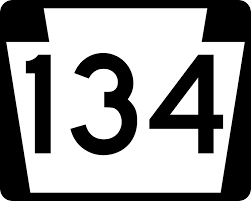
134. Front foot peg rubber differences
for all US 1969-1978 Honda 750 K-models
Known by Honda as 'step rubbers',
there were three different front rubber types.
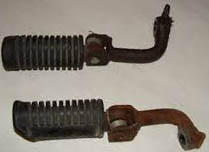
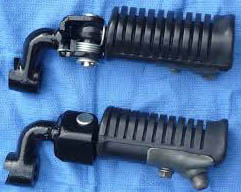
K0 (up to 1044649):
50661-110-000, superceded by 95011-23000

K1-K6: 50661-310-000
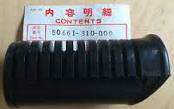
K7-K8: 50661-405-000

K7-K8 front peg rubbers had a metal nub
bracket bolted through the bottom of the rubber.

Note: Involves transition models.
Additional minor variations, changes and/or crossovers
may have occurred within some shown or listed types.
Entire site and content © Honda750Expert.com
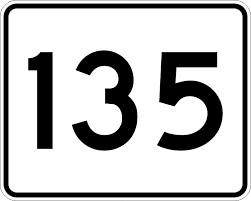
135. The only
front disk rotor water splash guard
used on US 1973-1978
Honda 750 A, F and K models
Known by Honda as front 'disk guards',
there was only one
model used for all
US single-front disk models 1972-1978.


Part number 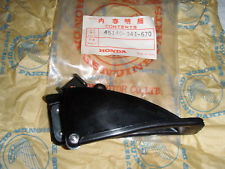 45140-341-670
45140-341-670
Used for 750 K-models K3 through K8,
750 F-models 1975-1976, and A-models 1976-1978.
Insider Tip:
Do you know why the dual-front-disk 1977-1978
Honda 750F SuperSport models didn't
use front disk rotor splash guards,
yet every
other 1973-1978 Honda 750 model did?

Because, only for these models, Honda mounted
the brake calipers behind the fork legs.
Insider Tip:
K0 to K2 models did not have a disk rotor splash guard;
it was added for the K3 model as an improvement.
Insider Tip: Sometimes we find a black plastic splash guard
in a parts box marked Honda 750 that is not correct.
It usually turns out to be a 43140-410-000, which is for the
rear wheel brake disk on some SuperSport F models.
Note: Involves transition models.
Additional minor variations, changes and/or crossovers
may have occurred within some shown or listed types.
Entire site and content © Honda750Expert.com
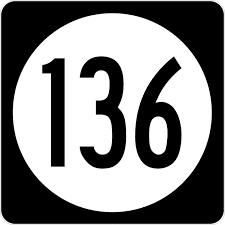
136. Hidden under the seat, so ignored by some restorers:
the black plastic 'Rear Fender B' used on
US 1969-1978 Honda 750 K models
Honda used four different part numbers.
K0, up to 1044649: 80105-300-000
K1, from 1044650: 80105-300-010
K2-K5: 80105-341-000
K6, up to 2557627: 80105-341-000
K6, from 2557628: 80105-341-010
K7-K8: 80105-341-010
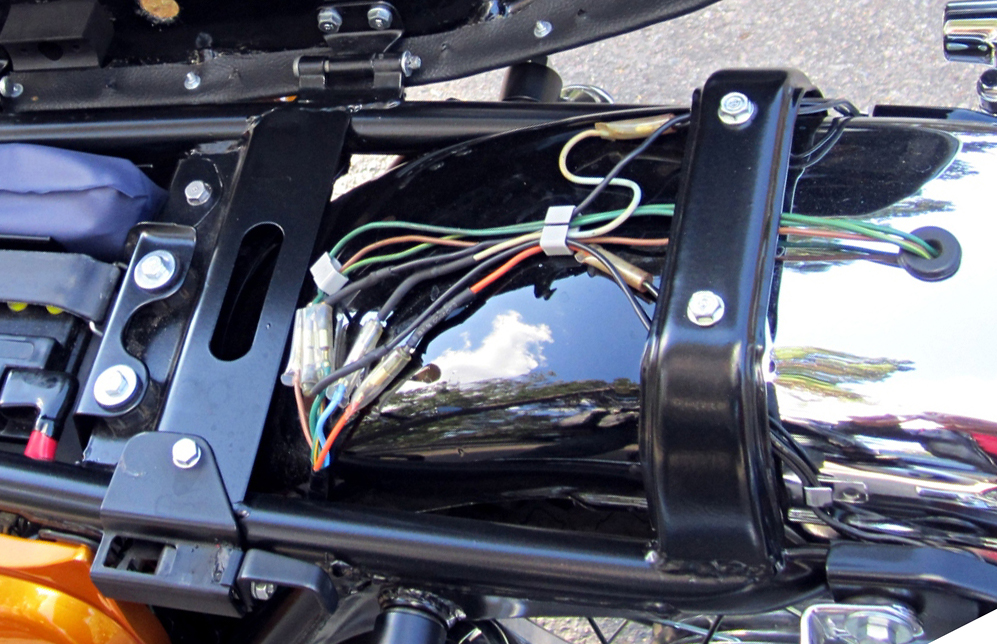
Note: different warning/caution stickers
were on this piece depending on model year.
Found a white one? Possibly from a police CB750.

Note: Involves transition models.
Additional minor variations, changes and/or crossovers
may have occurred within some shown or listed types.
Entire site and content © Honda750Expert.com

137. Some of the rear
brake linkage hardware
found at the rear end of the
long brake arm stopper
and at the rear end of the
long threaded brake rod
on US K-models K0-K8 1969-1978
(common parts we are asked for help on!)

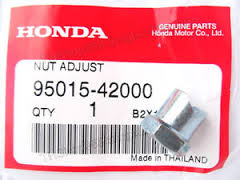

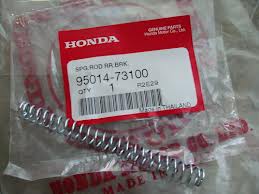

Warning: stopper arm bolt at rear end of the arm
(shoulder bolt, bottom right photo,
different during years)
requires that you also use the correct metal
and rubber washers, hex nut and cotter pin.
If not done correctly, can cause injury or death.
If not done in proper order with the correct
parts you have made a dangerous mistake.


Above are enlarged photos
of the usual cotter pins found.
Earlier K-models usually are found with
shaped pins at rear such as at left above,
newer K7/K8 models usually are found with
straight pins at right that were bent to secure.
If not done correctly, can cause injury or death.
If you forget the cotter pin you
have made a dangerous mistake.
Note: there is also critical hardware at the
front/forward ends of the long brake arm stopper
and of the long threaded brake rod.
If not done correctly, can cause injury or death.
TIP: take close-up photos of your own bike's brake
linkage hardware assembly before working on it.
Note: Involves transition models.
Additional minor variations, changes and/or crossovers
may have occurred within some shown or listed types.
Entire site and content © Honda750Expert.com

138. Front wheel rims
(the chrome part that the
front tire mounts onto)

US 1969-1978 Honda 750 K models
K0 through K7 models, and the first 14000 K8 models,
used 19" front rim 44701-300-013.
The final 22000 K8 models used
19" front rim 44701-405-771.
All K0 through early K8 front rims are superceded
to the final K8 front rim 44701-405-771.
Note: Involves transition models.
Additional minor variations, changes and/or crossovers
may have occurred within some shown or listed types.
Entire site and content © Honda750Expert.com
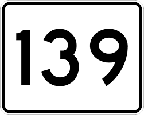
139. Rear wheel rims
(the chrome part that the rear tire mounts onto)
US 1969-1978 Honda 750 K models
K0 through K6 models
used 18" rear rim 42701-300-013.
K7 through the first 14000 K8 models used 17" rear
rim 42701-405-003, superceded by 42701-405-771.
The final 22000 K8 models used
17" rear rim 42701-405-771.
Note: Involves transition models.
Additional minor variations, changes and/or crossovers
may have occurred within some shown or listed types.
Entire site and content © Honda750Expert.com

140. Rear sprocket carrier
(what the rear sprocket bolts to)
US 1969-1978 Honda 750 K models
front view, K0-K6> 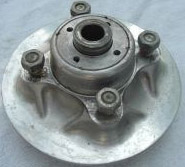
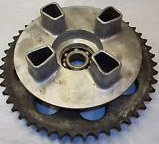 <rear view, K0-K6
<rear view, K0-K6
Known by Honda as a 'Final Flange'.
K0-K1: 42610-300-030,
superceded by 42609-341-000.
K2-K6: 42609-341-000
Insider Tip:
a tool with 4 pins makes it easier
to remove the bearing retainer.
For K7-K8, Honda named 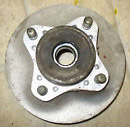
it "Driven Flange".
K7-K8: 42610-405-000
Note: Involves transition models.
Additional minor variations, changes and/or crossovers
may have occurred within some shown or listed types.
Entire site and content © Honda750Expert.com

141. Valve adjuster caps
US 1969-1978 Honda 750 K models
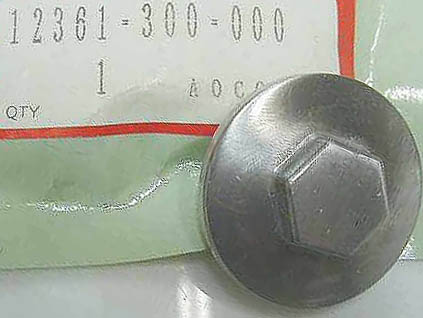

Same cap and o-ring part numbers
for all K-models 1969-1978
Cap, known as a 'tappet hole cap',
uses eight, 12361-300-000
30.8mm o-ring,
uses eight, 91302-001-020
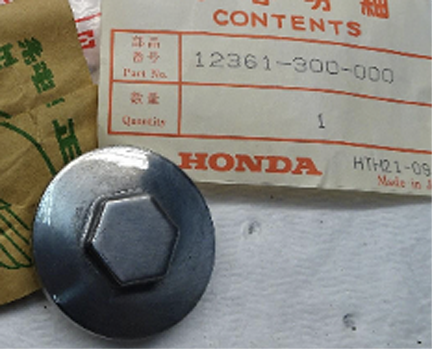
|
There were also aftermarket valve
adjuster caps such as these below:
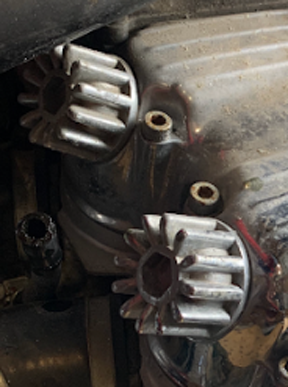
Note: Involves transition models.
Additional minor variations, changes and/or crossovers
may have occurred within some shown or listed types.
Entire site and content © Honda750Expert.com
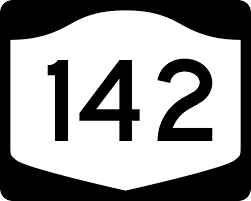

This section was added because it is is a frequent
request made by visitors to Honda750Expert.com!
142. "Any tips for finding
used luggage racks
for US 1969-1978
Honda 750 K models?"
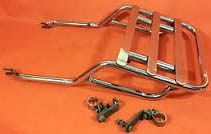

Honda did not produce a 'stock' or
factory-available rack during that period.
But there were many aftermarket racks
available, from companies such
as Amco, Arthur Fulmer, Bates,
Buco, Rack Factory and others.
Most current rack manufacturers were
not yet established in the 1970s.
Most were chromed steel of square tubing or round tubing;
some such as Rack Factory were polished aluminum.
The main body/platform was solidly above the taillight.
Some platforms were dressed with
wood, rubber or plastic inserts.

Some also had sissy bars or padded backrests.
Backrests were either fixed for a passenger's use or
were adjustable to slide farther forward towards the rider.
Some were a one-piece rack.
Some racks used sides that bolted to the body/platform.

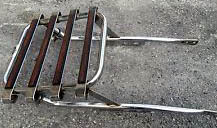
Exact-fit models usually used a front mount that
slipped under the rear shock's top nut and washer;
their more rearward mounts were typically either brackets
that attached near the rear turn signals on the
sides or was a single bracket that used a u-bolt at
the center rear of the grab rail behind the seat.
There were also less-preferred 'universal' racks that used an assortment of
adjustable mounts that let them be used on many brands of motorcycles.
Exact-fit models were different every couple of model years.
Some manufacturers said that their 1973 through
1976 K3-K6 were the same mounting.
Some said that their 1977 and 1978 K7-K8
used the same mounting as each other.
Racks for 1979 and later do not fit earlier Honda 750s.
Many racks are listed for sale on Google and eBay.


Note: Involves transition models.
Additional minor variations, changes and/or crossovers
may have occurred within some shown or listed types.
Entire site and content © Honda750Expert.com
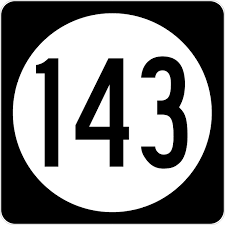

This section was added because it is is a frequent
request by visitors to Honda750Expert.com!
143. "What were the most
common vintage aftermarket
(non-stock) exhaust systems;
4-into-1 systems, etc
that were used on US 1969-1978
Honda 750 K models?"
No Honda 750 K-model from this era came
from the factory with 4-into-1 or 4-into-2 exhaust.
All Honda 750 K-models of this era
came with four separate exhaust pipes.

The most common aftermarket exhaust
systems found on 1970's 750 K-models include
(alphabetically): Dunstall, Hooker, Jardine, Jemco,
Kerker, MAC, Racecrafters, RC Engineering,
Strader, SuperTrapp, Triple A, Vance and Hines,
Winning Performance, and Yoshimura.
Most were either chrome or black.
Some required 69-76 models to
convert to the 77-78 bolt-into-head style.
Some 4 into 2s had you cut off the
original mufflers and slip on the new ends.
Some 4 into 2s released exhaust straight out the back;
some were 'turnouts' releasing exhaust to the sides.
Some 4 into 1s required removal of the centerstand.
Some 4 into1s interfered with oil
filter removal and/or oil draining.
The muffler on some 4 into1s used a mounting
bracket up to a rear footpeg or to a top shock nut.
Many 4 into 1s were near-copies of the Kerker above.
Some had removable/replaceable/repackable baffles.
Exhaust mounting at the head:
K0-K6 used a 'clamp-around';
K7-K8 used a 'clamp-in'.
Some 4 into1s require a change to K7-K8 style.
1969-1976>  < K0-K6
< K0-K6
K7-K8>  <1977-1978
<1977-1978
More exhaust information above at
Section 41, Section 50 and Section 92!
Note: Involves transition models.
Additional minor variations, changes and/or crossovers
may have occurred within some shown or listed types.
Entire site and content © Honda750Expert.com
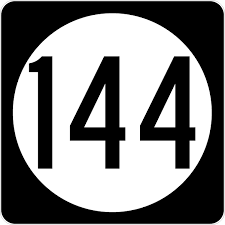

This section was added because it is a frequent request by visitors to Honda750Expert.com!
144. "What aftermarket (non-stock)
cast/'mag' wheels
were used on US 1969-1978
Honda 750 K models?"
No Honda 750 K-model from this era came from
the factory with cast wheels or 'mag' wheels.
All Honda 750 K-models of this era came with spoke wheels.
Types found were Lester
(the most popular used in the US on 750s),
followed by (alphabetically) Curtis, EBP, Hayashi,
Henry Abe, Invader, Kimtab,
Morris, and Shelby-Dowd.
Some brands required a changeover to rear disk brake.
There were also models available for SuperSport F-models.
Lester > 
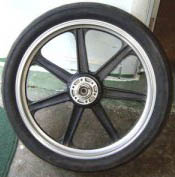
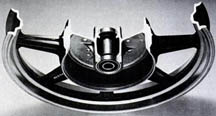 < Lester
< Lester
Lester > 
 < Lester
< Lester
Note: Involves transition models.
Additional minor variations, changes and/or crossovers
may have occurred within some shown or listed types.
Entire site and content © Honda750Expert.com


This section was added because it is a frequent
request by visitors to Honda750Expert.com!
145. "What aftermarket (non-stock) fairings
were most often used in the 1970's on
US 1969-1978 Honda 750 K models?"
No Honda 750 K-model from this era
came from
the factory with a fairing.
By far, the two most popular upright-riding
chest/face protecting fairings
(not the tiny 'cafe-racing fairings'
used while riding bent over),
also called touring fairings, were
Wixom and Vetter Windjammer.
Wixom > 
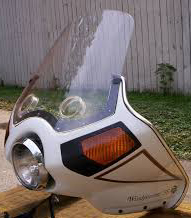 < Windjammer
< Windjammer
Wixom was fork-mounted near the handlebars.
Windjammer was frame-mounted.
Wixom had cut-outs for the 750's own
headlight and front turn signals.
Windjammer had its own built-in headlight and,
with later models SS and 4, had built-in turn signals.
Wixom > 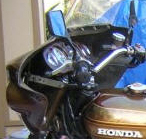

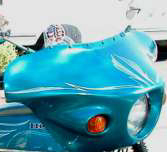 < Wixom
< Wixom
Wixom used no electrical wiring.
Windjammer plugged into wiring
inside the 750's headlight shell.
Wixom > 
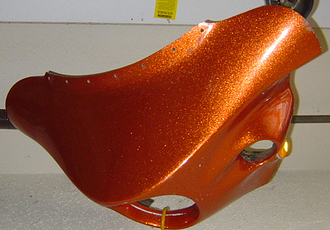 < Wixom
< Wixom
Wixom used three short mounting brackets.
Windjammer had a mount that was
first secured to the 750's frame,
then the Windjammer was bolted to
(sits on) that frame mount.
Different height clear windshields were available for both.
Windjammer had vents available on some windshields.
Windjammer also had optional lower
portions available to protect legs.
Windjammer also had storage pockets built in. Some
pocket
covers were cloth, some were hard lockable covers.
Windjammer > 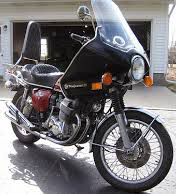

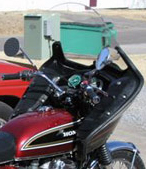 < Windjammer
< Windjammer
Wixom trivia:
Wixom was the Wixom brothers Dean and Stan Wixom.
Windjammer trivia: Windjammer fairings
were made 1971 through 1983;
models included l, 2, 3, SS, 4 and 5.
There were smaller Vetter fairing models too.
Complete Windjammer history,
and parts information, is at www.CraigVetter.com
Example of a Windjammer CB750 K1-K6 frame mount
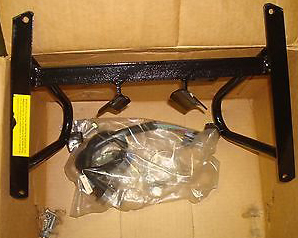
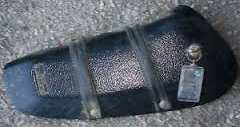
Example of a Windjammer lockable storage cover
Note: Involves transition models.
Additional minor variations, changes and/or crossovers
may have occurred within some shown or listed types.
Entire site and content © Honda750Expert.com
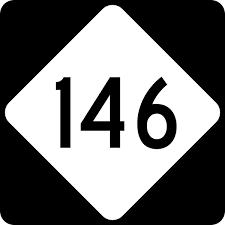

This section was added because it is a frequent
request by visitors to Honda750Expert.com!
146. "Honda doesn't sell CB750 paint.
What aftermarket (non-stock) paint
is available already to try to match the colors
used on some US 1969-1978 Honda 750 K models?"

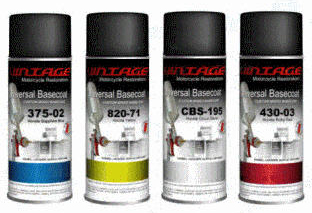
Most original internal Honda color-codes are not
matchable
to numbers used by current paint manufacturers,
but there are some paint manufacturers that now have
paintready to try to match the original Honda
750 colors for some models.
Here's the main headache to matching
a Honda 'color' in one container:
Honda often got each original final
color in two or three steps or 'stages'-
1. A special colored primer.
2. Then sometimes a special colored
metallic or flake basecoat.
3. Finally, a special colored candy topcoat.
There are some suppliers offering
what some CB750
owners have
said
to be a good match to
Honda's results for some colors
(some are in bulk, some are in rattle spray cans):
HondaMotorcyclePaint.com
ColorRite.com
RSbikePaint.com
CycleColor.com
HouseOfKolor.com
Use this list below as basic original
US paint reference for color names:
1969-1970 US K-models
Candy Blue Green: color codes AZ and PB2C
(example of a Candy Blue Green part  showing 'AZ' color code)
showing 'AZ' color code)
Candy Ruby Red: color codes CM and R4C
(example of a Candy Ruby Red part  showing 'CM' color code)
showing 'CM' color code)
Candy Gold: color codes CQ and Y2C
1971 US K-models
Valley Green Metallic: color codes EF and G21M
Candy Garnet Brown: color codes EE and YR2C
Candy Gold: color codes CQ and Y2C
Candy Ruby Red: color codes CM and R4C
1972 US K-models
Brier Brown Metallic: color codes LU and YR15MC
Flake Sunrise Orange: color codes LV and R2CF
1973 US K-models
Flake Sunrise Orange: color codes LV and R2CF
Candy Bacchus Olive: color codes LY and G5WC
Maxim Brown Metallic: color codes QQ and YR20MC
1974 US K-models
Freedom Green Metallic: color codes TC and BG1M
Flake Sunrise Orange: color codes LV and R2CF
Boss Maroon Metallic: color codes TD and RP9M
1975 US K-models
Planet Blue Metallic: color codes MV and PB27MC
Flake Apricot Red: color codes UE and R5CF
1975 F-model SuperSports
Flake Sunrise Orange: color code R2CF
Candy Sapphire Blue: color code PB3CC
1976 US K-models
Candy Antares Red: color code R-6C-S
1976 US F-model SuperSports
Sulphur Yellow: color code Y34
Candy Antares Red: color code R6CS
1976 US Automatic A-models
Muscat Green Metallic: color code G38MS
Candy Antares Red: color code R6CS
1977 US K-models
Excel Black: color code NH-57
Candy Alpha Red: color code R-9C-S
1977 US F-model SuperSports
Black: color code NH1
Candy Presto Red: color code R8CS
1977 US Automatic A-models
Candy Sword Blue: color code PB7C
Candy Presto Red: color code R8CS
1978 US K-models
Excel Black: color code NH-57
Candy Alpha Red: color code R-9C-S
1978 US F-model SuperSports
Black: color code NH1
Candy Presto Red: color code R8CS
1978 US Automatic A-models
Candy Polaris Blue: color code PB100CS
Candy Alpha Red: color code R9CS
Insider Tip:
If you Google these two words: Lubritech CB750
you can obtain some paint info from a prior Honda paint supplier.
More paint information above at
Section 35 (Paint Color Choices)
and at Section 92 (Paint Color Codes)
Note: Involves transition models.
Additional minor variations, changes and/or crossovers
may have occurred within some shown or listed types.
Entire site and content © Honda750Expert.com


This section was added because it is a frequent
request by visitors to Honda750Expert.com!
147. Originally there were
3 long engine support bolts
used to hang the weight of
the engine in the frame.
A previous owner
instead
replaced them with other
hardware to mount some
brackets and guards.
What are the correct
three long bolts to use?

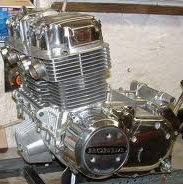
Almost all were the same on US 750s 1969 through 1978.
They are known as Engine Hanger Bolts A, B and C.
Except for one, they were long shouldered bolts with
a hex head at one end and threads at the other end.
Hanger Bolt A is the front-most long shoulder bolt.
Hex bolt 90152-300-010, K0-K8.

Uses the same 10mm hardware as Hanger Bolt C does:
10mm spring washer 94111-10000, 10mm hex nut 94030-10200.
Hanger Bolt B is the lower rear long bolt,
the thickest of the three hanger bolts, at the footpegs.
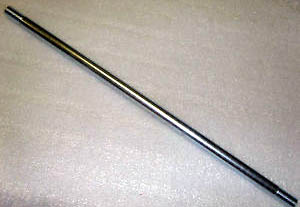
K0-K6: 90155-300-000, threads at both ends.
K7-K8: 90155-392-000, threads at one end.
Both use the same 12mm hardware:
12mm flat washer 94101-12000, 12mm spring
washer 94111-12000, 12mm hex nut 94030-12200
(K0-K6 uses 2 nuts each on this rod,
K7-K8 uses one nut each on this bolt).
Hanger Bolt C is the upper rear long shoulder bolt.
Hex bolt 90156-300-000, K0-K8.

Uses the same 10mm hardware as Hanger Bolt A does:
10mm spring washer 94111-10000, 10mm hex nut 94030-10200.
Insider Tip: most of these bolts for sale on eBay
are 'replicas', not original OEM Honda bolts.
Make sure that any bolt used
is the proper grade/strength.
Insider Tip:
usually installed through left side
with the nuts on the right side.
Note: Involves transition models.
Additional minor variations, changes and/or crossovers
may have occurred within some shown or listed types.
Entire site and content © Honda750Expert.com
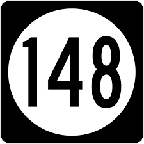

148. Oil pressure switches for
US 1969-1978 Honda 750 K models
Installed on the upper crankcase halve,
behind cylinders,
next to the cam chain tensioner
and chrome starter motor cover.
K0 through K6 serial 2432459:
35500-300-000, superceded to 35500-333-014
K6 from serial 2432460, through K8:
35500-333-014, superceded by 37240P13013
Note: K0-K5 shows to also use washer 90545-300-000.

Note:
You don't need to remove the
cam chain tensioner to replace this.
But sometimes removing the
chrome starter motor cover first helps.
Insider Tip:
do not use sealing tape on the switch threads.
It is taper-fit threaded, and tape
could interfere with it grounding.
Note: Involves transition models.
Additional minor variations, changes and/or crossovers
may have occurred within some shown or listed types.
Entire site and content © Honda750Expert.com


This section was added because it is a frequent
request by visitors to Honda750Expert.com!
149. "What chrome crashbars or safety bars
can be
found for
US
1969-1978 Honda 750 K models?"
No public Honda 750 K-model from this
era came from
the factory with crash bars.
There are two main types.
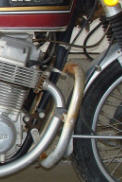


Full-size.
Is secured in front of engine at its upper to the frame
with u-bolts and at its bottom with frame/engine bolts.
Chrome; some had built-in footpegs
or had clamped-on footpegs.
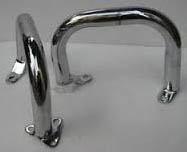
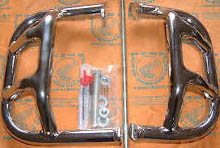

Smaller engine guards.
Known as 'case savers'.
Usually chrome, some were black.
The three main types of case-savers were:
(above, from left to right)
--2-point mounting
(most common and lowest priced)
--2-point mounting with reinforcing
--3 point mounting (least likely to bend upward)
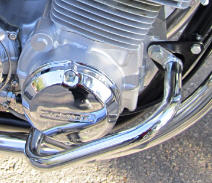
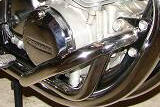

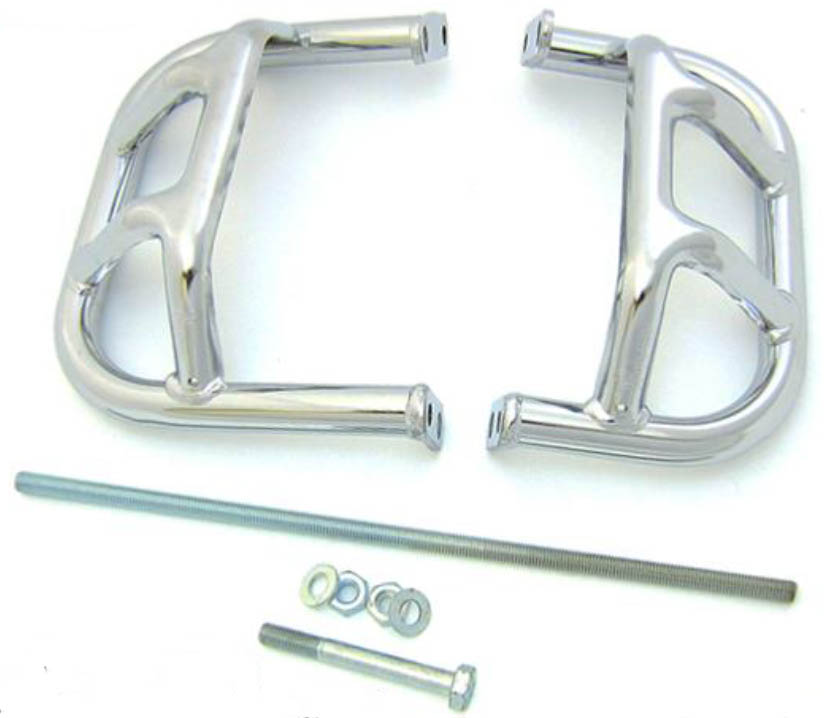
Several types of crash bars and case savers
are still available new and used.
Most 2-point case savers were sold as
'Fits all 1969-1978 K,F and A models'.
Note: Involves transition models.
Additional minor variations, changes and/or crossovers
may have occurred within some shown or listed types.
Entire site and content © Honda750Expert.com

This section was added because it is a frequent
request by visitors to Honda750Expert.com!
150. "What gas tank stripes or decals
were correct
for US 1969-1978 Honda 750 K models?"

Some years,
tank stripes were the same regardless of tank color.
Other years, tank color determined with stripe to use.
K0-K1 models had stripes painted on their gas tanks.
K2 models were the first with decal stripes.
All later models used decals.
K0 (all used the same gold stripes)
Candy Gold tanks used gold stripes containing black pinstriping;
some sources tell that black stripes were also used.
Some sources say Candy Gold with black stripe is K1.
Note: some K0/K1 restorers use decals, while some buy
K1
Candy Gold tanks used black stripes with tank color
showing between stripe and surrounding pinstriping.
All other color tanks used the same gold stripes as KO models
K2
C
--More coming soon--
Note: Involves transition models.
Additional minor variations, changes and/or crossovers
may have occurred within some shown or listed types.
Entire site and content © Honda750Expert.com
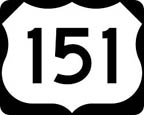

This section was added because it is a frequent
request by visitors to Honda750Expert.com!
151. "What aftermarket floorboards
were available for
US 1969-1978 Honda 750 K models?"

No standard public Honda 750 K-model from
this era
came from
the factory with floorboards.
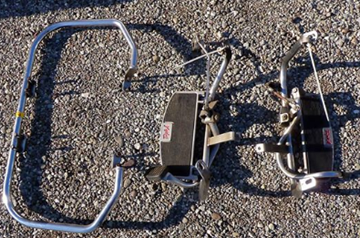
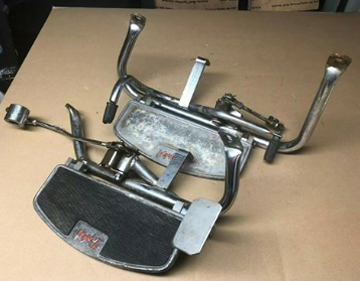

Full-size with heel/toe shift linkage,
or footpeg-replacing small boards
for both the rider and the passenger
Triple A was the primary full-linkage model
Police department CB750s often had floorboard set-ups.
Note: Involves transition models.
Additional minor variations, changes and/or crossovers
may have occurred within some shown or listed types.
Entire site and content © Honda750Expert.com


This section was added because it is a frequent
request by visitors to Honda750Expert.com!
152. Using a spin-on oil filter like a car
instead of the regular encased oil filter
No Honda 750 K-model from this era came
from
the factory with a spin-on oil filter.
--Coming soon--
Note: Involves transition models.
Additional minor variations, changes and/or crossovers
may have occurred within some shown or listed types.
Entire site and content © Honda750Expert.com


This section was added because it is a frequent
request by visitors to Honda750Expert.com!
153. "What aftermarket saddlebags / sidebags
were
available for US 1969-1978
Honda 750 K models?"
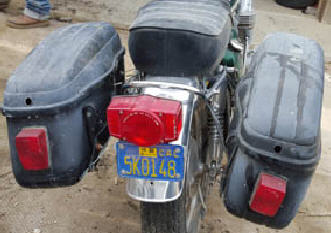
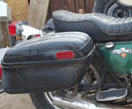
No Honda 750 K-model from this era
came from
the factory with saddlebags.
Fiberglass or plastic were the most common types,
with supporting/mounting hardware
Bates, Shoei, Vetter, and 'soft' bags
Some had locking lids
Some required removal/relocation of rear turn signals
--More information coming to this section soon--
Note: Involves transition models.
Additional minor variations, changes and/or crossovers
may have occurred within some shown or listed types.
Entire site and content © Honda750Expert.com

154. "What front brake light switches
were correct for US
1969-1978 Honda 750 K models?"
Of the two types, the K8 was different one.
K0-K7: 35350-300-016/p
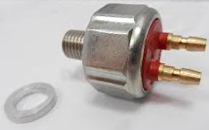
Known as a 'stop switch'.
Mounted in the t-joint
(three-way joint) below the headlight,
a hydraulic switch, in the hydraulic line.
This same part was used on many other
Honda motorcycle models with disk brake.
K8: 35340-393-771

Known as a 'front stop switch'.
Up at the front brake master cylinder lever area.
A mechanical switch-- not in the fluid line.
Note: K7 models in some other
countries used the K8 switch.
Note: Involves transition models.
Additional minor variations, changes and/or crossovers
may have occurred within some shown or listed types.
Entire site and content © Honda750Expert.com


This section was added because it is a frequent
request by visitors to Honda750Expert.com!
155. "What aftermarket (non-stock) seats
were most often used in the 1970's on
US 1969-1978 Honda 750 K models?"
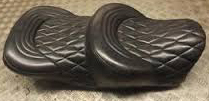

No
King-Queen
Back support
plastic base / metal base / original base
Usually used original hinges and
seat lock plunger from stock seat
--More information coming to this section soon--
Note:
regular original seat information is at Section 12!
Note: Involves transition models.
Additional minor variations, changes and/or crossovers
may have occurred within some shown or listed types.
Entire site and content © Honda750Expert.com


This section was added because it is an occasional
request by visitors to Honda750Expert.com!
156. "What aftermarket fiberglass or resin bodies
were found in the 1970's on
US
1969-1978 Honda 750 K models?"
The Fiberglass Works
Tracy Design
Dunstall
--More information coming to this section soon--
Note: Involves transition models.
Additional minor variations, changes and/or crossovers
may have occurred within some shown or listed types.
Entire site and content © Honda750Expert.com
157

This section was added because it is an occasional
request by visitors to Honda750Expert.com!
157. "What aftermarket
rear shock lowering blocks
were found in the 1970's on
US
1969-1978 Honda 750 K models?"
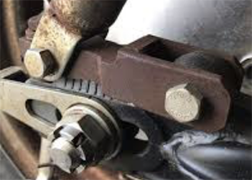
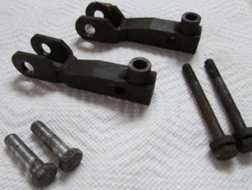
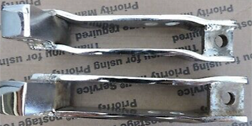

They bolt to the bottom shock mounts
on the swingarm, moving the bottom
of the shock rearward about two inches.
Seen most often on 69-76 models.
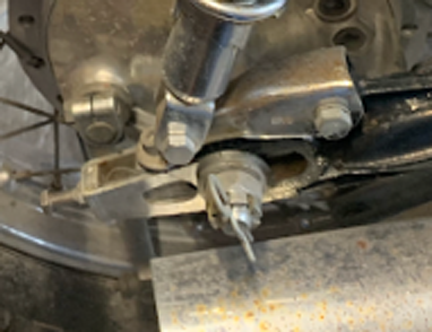
Con:
--reportedly harder to get bike on centerstand,
especially when paired with a 16" Harley rim
--shocks reportedly work less well
--reportedly negatively affects cornering
Pro:
--allows flat-footed on ground
for more riders of various heights
Alternate choices:
--a lower-profile rear tire,
but this can affect highway RPM
--use of a 16" "Harley" rear rim and tire
laced up to the original wheel hub
--replacing CB750 shocks with the
similar but shorter shocks from same
era CB500-Four or CB550-Four
--More information coming to this section soon--
Also see: SHOCKS at Section 81!
Note: Involves transition models.
Additional minor variations, changes and/or crossovers
may have occurred within some shown or listed types.
Entire site and content © Honda750Expert.com
158

This section was added because it is a frequent
request by visitors to Honda750Expert.com!
158. "I would like to restore a CB750
police bike, any photos would help."
OK, here are some!
69-70 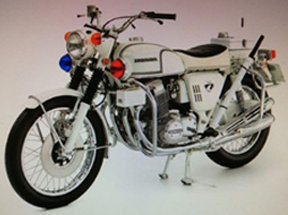
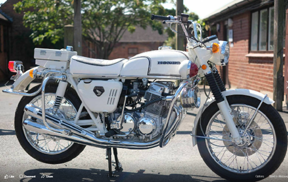 69-70
69-70
71 
77 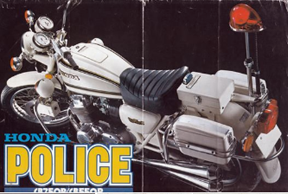
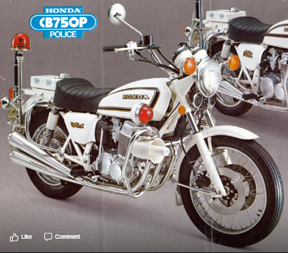 77
77
77 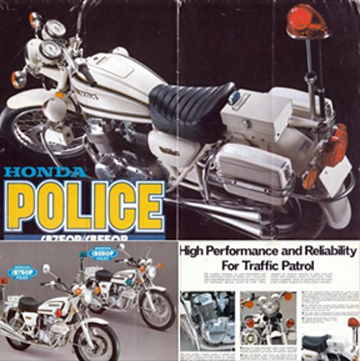
 77
77
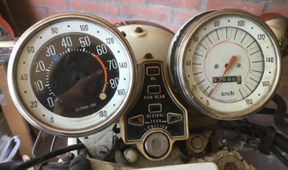
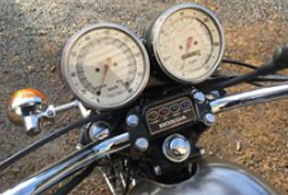



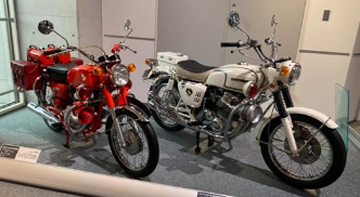

White inner rear fender
from a 1978 police CB750,
under the seat area
(non-police are black):

Here is a siren driven by the
rear tire on a KO police bike:
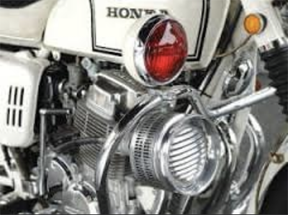
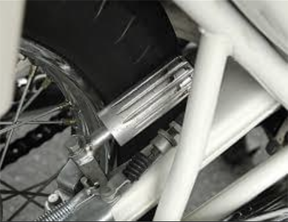

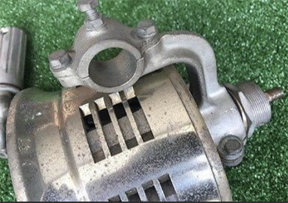
Note: Involves transition models.
Additional minor variations, changes and/or crossovers
may have occurred within some shown or listed types.
Entire site and content © Honda750Expert.com
159

This section was added because it is a frequent
request by visitors to Honda750Expert.com!
159. "I don't understand the built-in automatic chain oiler!"



Note: Involves transition models.
Additional minor variations, changes and/or crossovers
may have occurred within some shown or listed types.
Entire site and content © Honda750Expert.com
160

This section was added because it is a frequent
request by visitors to Honda750Expert.com!
160. "Was there ever a CB750 dirt bike?"
Not made by Honda,
but some made it work!
Note: Involves transition models.
Additional minor variations, changes and/or crossovers
may have occurred within som
161

This section was added because it is a frequent
request by visitors to Honda750Expert.com!
161. "Where can I find exploded views?"
Note: Involves transition models.
Additional minor variations, changes and/or crossovers
may have occurred within some shown or listed types.
Entire site and content © Honda750Expert.com
162

This section was added because it is a frequent
request by visitors to Honda750Expert.com!
162. "What were the yearly 750 K-model production totals?"
Sandcast: 7400
K0: 53,400
K1: 77,000
K2: 63,500
K3: 38,000
K4: 60,000
K5: 35,000
K6: 42,000
K7: 38,000
K8: 36,000
Trivia:
Almost 554,000 K-models were produced.
Trivia:
K1 produced more than any other K year-model.
Trivia:
K5 produced less than any other K year-model.
Trivia:
The K2 model was in production until 1976
in all markets except the US and Japan.
Note: Involves transition models.
Additional minor variations, changes and/or crossovers
may have occurred within some shown or listed types.
Entire site and content © Honda750Expert.com
163

This section was added because it is a frequent
request by visitors to Honda750Expert.com!
163. US engine and frame serial number list
K0 69-70
Engine E1000001
Frame 1000001
K1 1971 8/70 to 11/71
Engine E1053399
Frame 1044806
K2 1972 11/71 to 9/72
Engine E2000001
Frame 2000001
K3 1973 9/72 to 6/73
Engine E2200001
Frame 2200001
K4 1974 6/73 to 5/74
Engine E2300001
Frame 2300001
K5 1975 5/74 to 12/74
Engine E2372115
Frame 2500001
K6 1976 12/74 to 6/76
Engine 2428762
Frame 2540001
K7 1977 6/76 to 5/77
Engine 2700009
Frame 2700009
K8 1978 5/77 to 5/78
Engine 3000001 to 3062980
Frame 2800001 to 2862980
Note: Involves transition models.
Additional minor variations, changes and/or crossovers
may have occurred within some shown or listed types.
Entire site and content © Honda750Expert.com
164

This section was added because it is a frequent
request by visitors to Honda750Expert.com!
164. Aftermarket oil coolers
COMING HERE SOON
Note: Involves transition models.
Additional minor variations, changes and/or crossovers
may have occurred within some shown or listed types.
Entire site and content © Honda750Expert.com
165

This section was added because it is a frequent
request by visitors to Honda750Expert.com!
165. Pod air filters
Best advice: stick with the stock airbox.
Changing to pods almost always causes
problems, including that the rear of the
carbs are no longer supported, causing
leaks when the rubber boots up front
become stretched open as the carbs
flex slightly with each pull of the throttle.
COMING HERE SOON
Note: Involves transition models.
Additional minor variations, changes and/or crossovers
may have occurred within some shown or listed types.
Entire site and content © Honda750Expert.com
166

This section was added because it is a frequent
request by visitors to Honda750Expert.com!
166. Aftermarket electronic
(pointsless) ignitions
COMING HERE SOON
Note: Involves transition models.
Additional minor variations, changes and/or crossovers
may have occurred within some shown or listed types.
Entire site and content © Honda750Expert.com
167

This section was added because it is a frequent
request by visitors to Honda750Expert.com!
167. Carburetor synchronizers
and adapters
COMING HERE SOON
Note: Involves transition models.
Additional minor variations, changes and/or crossovers
may have occurred within some shown or listed types.
Entire site and content © Honda750Expert.com
A photo from 1970: my dad's CB750 K0

Luggage rack with backrest, a crashbar,
and a paint-matched Wixom fairing.
A photo from 1976: my first CB750, a K2
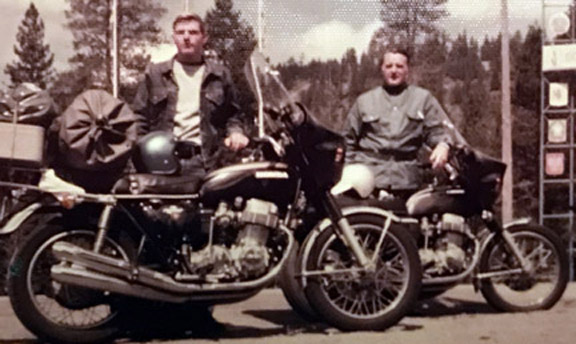
HERE IT IS!
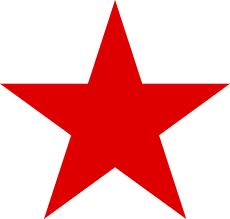





Honda 750 Buyer's Guide 1969-1978 US year-by-year
'US-sold model identification & US visible changes guide'
(Developed with my 45+ years of personal hands-on
US CB750 experience and research,
including as a Honda factory-trained Honda
dealership motorcycle mechanic in the 1970s and 1980s!)
© Honda750Expert.com 9/2020
(With most PC computers and printers, Right-click on a blank spot
of this page to print out this entire website as your personal
nearly-300-pages 1969-1978
US Honda 750 year-by-year 'Buyer's Guide /
Model identification guide' and 750 Restoration Guide to shop with.
With most computers and printers, RIGHT-click on a blank spot, then
choose PRINT). Not all printings will be as straight as website viewing.
PRINTING THIS ENTIRE WEBSITE WILL USE A LOT
OF INK AND NEARLY 300 PIECES OF PAPER!
It can also help as a visual US Honda 750

This copyrighted website is a valuable guide but is NOT all-inclusive;
there are minor variations and secrets NOT listed on
this page.
Not all color options listed below were available in all areas.
Production/sales dates are approximate but close.
1969-1970 Honda 750 K0 53,000 made
US first release was June 1969

America colors:
Candy Blue-Green (color code: AZ),
Candy Gold (color code: CQ),
Candy Ruby Red (color code: CM)
--these were topcoat colors all
over Candy Silver basecoats)--
(all used black-lettered tank emblems)

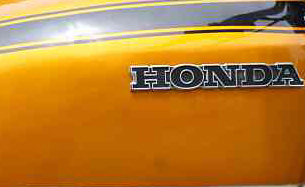

Retail advertised price new was $1495,
but most sold new for $1800-$2000
Silver-colored caliper 69-70

Acrylic plastic lenses on gauges 69-70
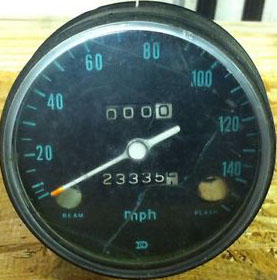
Air-filter case same color as gas tank 69-70

HONDA emblems on tank are black letters 69-70

Mirrors have chrome acorn
capnuts at top of stem 69-70

Warning lights in gauges 69-71

Rear turn signals mounted
to rear of frame top 69-71

Plastic chain guard 69-71

Headlight shell and headlight holders
are same color as gas tank 69-71

Seat latch does not require a key to open 69-71

Stripe high on gas tank 69-72

Ignition key below gas tank 69-76

Choke lever on carb set 69-76

100-link 530 chain 69-76
Heat-shields on upper exhausts 69-76
Chrome cover on rear shocks 69-76
Polished oil tank cap exposed 69-76
18" rear wheels 69-76
Stripe on tanks was either black or
gold depending on tank color 69-72
Some sources report gold stripes were used on
all K0 models including Candy Gold models

530 sprockets 17 front / 45 rear 69-70
Wiring inside handlebars 69-76

Dunlop Gold Seal tires,
4.00 x 18 K87 rear, 3.25 x 19 F6 front 69-70
'Ducktail' seat 69-70

grips 1969-1971

front turn signals mounted parallel with headlight center 69-76

chrome-cap horn 1969-1976

swingarm has two push-in grease-fittings,
one at each end of the
swingarm pivot bolt 1969-1975

©Honda750Expert.com
Honda Product Code: 300
Frame # CB750- 1000001 -
Engine # CB750E-1000001 -
(some warranty-replacement
engine cases had no serial number)
Note: additional minor variations, different part numbers, changes
and/or crossovers may have occurred within some shown or listed types.
1971 Honda 750 K1 77,000 made
August 1970 to November 1971
(highest number sold)
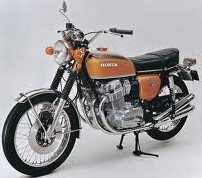
America colors:
Candy Ruby Red (color code CM),
Candy Gold (color code CQ),
Valley Green Metallic (color code EF),
Candy Garnet Brown (color code EE),
--(these were topcoat colors all
over Candy Silver basecoats)--
(all used white-lettered tank emblems)





Alternate colors reported:
Polynesian Blue Metallic,
(Europe/Japan)
new: side covers smaller and no vents 71-76

new: dual-cable throttle system 71-78
new: a stronger, black air filter box 71-78

new: chrome '750-Four' side cover emblems 71-72

new: glass lenses on gauges 71-78
new: black caliper 71-76

new:
HONDA emblems on tank are white letters 71-72

new: front fender has a rolled edge 71-78
new: 3-tooth rear sprocket change,
now 530 17 front / 48 rear 71 only
new: mirrors no longer have acorn cap nuts 71-78
new: speedmeter increments of 20mph (20, 40, 60)
new: flat seat (non-ducktail) 71-76
©Honda750Expert.com
Honda Product Code: 300
1971 Frame # CB750-1044650 -
1971 Engine # CB750E-1044806 -

Note: additional minor variations, different part numbers, changes
and/or crossovers may have occurred within some shown or listed types.
1972 Honda 750 K2 64,000 made
November 1971 to September 1972
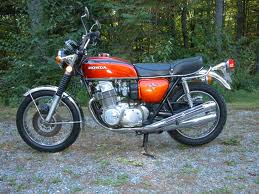
American colors:
Brier Brown Metallic (color code LU),
Flake Sunrise Orange (color code LV)
--Why bigger paint sparkles in Orange?:
because Flake Sunrise Orange (used 72-74)
used a Candy Orange
topcoat color
over a FLAKE Silver basecoat--



Alternate colors reported:
Silver Metallic, Candy Gold,
Purple Metallic, Blue Metallic
(Europe/Japan)
new: warning lights in a unit
on handlebar clamps 72-76

new: bigger tail light
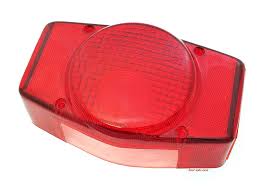
new: audible turn signal buzzer

new: metal chain guard
new: headlight holders chrome 72-78

new: headlight shell is black 72-78
new: gauges have metal casings 72-78
new: larger reflectors on front forks 72-78
new: a continuous chrome grab rail from top
of one rear shock to another,
extending behind seat
toward tail light, rear
signals mounted on this 72-78

new: seat opens using a key 72-78
new: quieter '341' mufflers

new: one-tooth front sprocket
change, now 530 18/48 72-76
new: plastic document door under seat 72-78
new: grips 72-76

new: a stop was added the brake pedal 72-76

©Honda750Expert.com
Honda Product Code: 341
1972 Frame # CB750- 2000001 -
1972 Engine # CB750E- 2000001 -
Note: additional minor variations, different part numbers, changes
and/or crossovers may have occurred within some shown or listed types.
1973 Honda 750 K3 38,000 made
September 1972 to June 1973
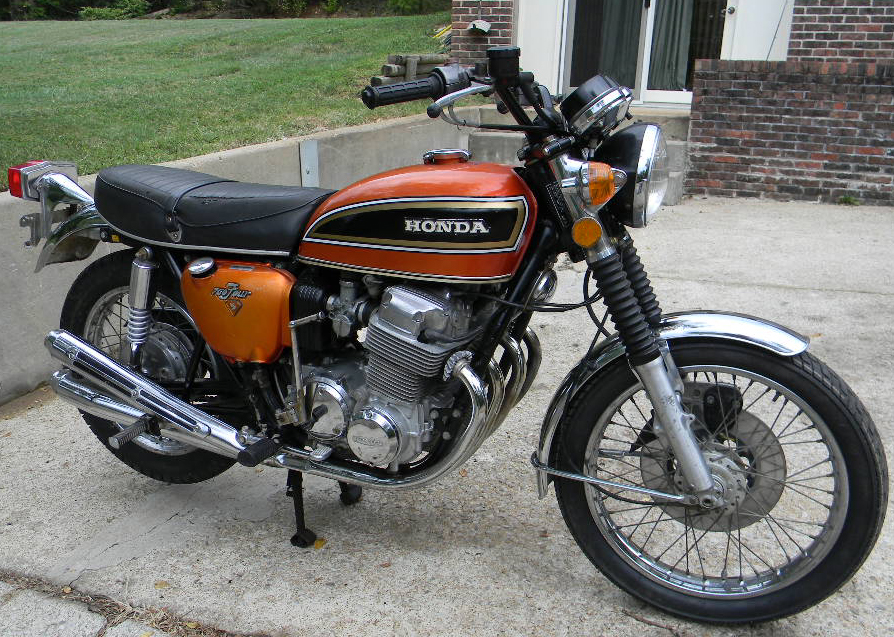
America colors:
Flake Sunrise Orange (color code LV),
Candy Bucchus Olive (color code LY),
Maxim Brown Metallic (color code QQ)
--(new: Candy Bucchus Olive
used a Candy Gold
topcoat color
over a BLUE metallic basecoat)--


new: splash guard on front disc


new: internal improvements to front suspension.
new: larger rear mirrors.
new: running lights in front turn signals.
new: air filter housing inlet
changes made to reduce noise.
new: '750 Four' emblem on side covers now white
lettering with its own black background 73-76.


new: gas tank design decal much larger,
now includes a black panel 73-76.

new: fuses all in a single fuse box 73-78.
new: no more rubber between fins.
new: tank emblem 73-76

new: wire harness and rectifier now
have a coupler-lock together 73- .
new: a clutch-lever starter
safety switch now used 73- .
new: New cylinder head, new valve guide seals,
improved oil passages to camshaft,
new piston rings (three part oil scavange rings,
new cam chain guide, larger piston pin circlips,
new final drive shaft, new sprocket cover,
beginning with CB750E-2200001.
new: New cylinder head, new valve guides,
new valve guide seals, no more rubber between fins,
improved oil passages to camshaft,
new piston rings (three part oil scavange rings,
new cam chain guide, larger piston pin circlips,
new final drive shaft, new sprocket cover,
beginning with CB750E-2228679.
©Honda750Expert.com
Honda Product Code: 341
Frame # CB750-2200001-
Engine # CB750E-2200001-
Note: additional minor variations, different part numbers, changes
and/or crossovers may have occurred within some shown or listed types.
1974 Honda 750 K4 60,000 made
June 1973 to May 1974

America colors:
Freedom Green Metallic (color code TC),
Flake Orange Sunrise (color code LV),
Boss Maroon Metallic (color code TD)



Alternate colors reported:
Candy Gold, Silver Metallic
(Europe/Japan)
new: gear-change pattern now cast
into transmission cover by shifter
beginning with CB750E-2348092


new: cylinder head casting now has three
vertical bracings instead of four 74-78,
beginning with CB750E-2352923.
new: speedmeter increments of 20mph (20, 40, 60).
new: smaller cam chain tunnel,
beginning with CB750E-2304501.
©Honda750Expert.com
Honda Product Code: 341
1974 Frame # CB750- 23000001 -
1974 Engine # CB750E- 23000001 -
Note: additional minor variations, different part numbers, changes
and/or crossovers may have occurred within some shown or listed types.
1975 Honda 750 K5 35,000 made
May 1974 to December 1974
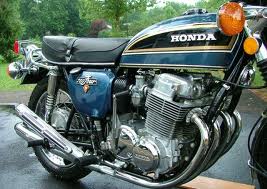
America colors:
Flake Apricot Red (color code UE)
Planet Blue Metallic (color code MV)
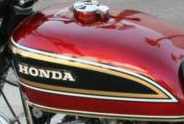

new: fuel tap now on left side of tank
new: bigger turn signals

new: rounded passenger footpegs
new: no more friction adjustment for twistgrip
(this throttle grip tightening screw discontinued
--some had called this a 'cruise control'--)75-78
new: gauge faces are dark green
new: side-stand has a rubber 'kick-up' tip 75-78
new: new-style fuel valve gas petcock 75-78
new: speedometer increments of 10mph (10, 20, 30,)
©Honda750Expert.com
Honda Product Code: 341
1975 Frame # CB750- 25000001 -
1975 Engine # CB750E- 2372115 -
Note: additional minor variations, different part numbers, changes
and/or crossovers may have occurred within some shown or listed types.
1976 Honda 750 K6 42,000 made
December 1974 to June 1976

America color:
Antares Red (color code R6CS)

--paint used a Special Silver basecoat,
NOT a Candy or a Metallic--
Alternate colors reported:
Candy Saphire Blue,
Sunrise Flake Orange
(Europe/Japan)
new: strengthened swingarm
new: under-seat tool tray now plastic
new: carbs idle screw now
on right, easier to access
new: no more automatic chain oiling
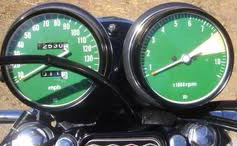
new: gauge faces are light-green.
new: Dunlop Gold Seal tires,
4.00 x 18 K87 rear, 3.25 x 19 F6 front.
new: a 40mm snap ring now used to retain
the clutch outer on the primary driven socket.
new: swingarm grease fittings no
longer exposed on sides of bike,
is now a single bent thread-in fitting at
bottom of swingarm center 1976-1978.
new: clutch almost identical to F1;
new clutch basket;
new clutch cover; new chrome cover,
beginning with CB750E-2470427.
new: new gear shift drum, new center
shift fork for improved shifting,
new gears on countershaft with
bronze bushings, new case,
CB750E-2434657 to 2439607.
©Honda750Expert.com
Honda Product Code: 341
Frame # CB750- 2540001 -
Engine # CB750E- 2428762 -
Note: additional minor variations, different part numbers, changes
and/or crossovers may have occurred within some shown or listed types.
1977 Honda 750 K7 38,000 made
June 1976 to May 1977

America colors:
Excel Black (color code NH-57) 77-78
Candy Alpha Red (color code R-9C-S) 77-78


new: new-design leaner/emissions
carburetor set with
accelerator pump,
known as 'PD model carbs' 77-78

new: shorter and wider 17" rear wheel 77-78
new: bigger 88-link 630 o-ring chain 77-78
new: exposed fork tubes 77-78

new: gas cap hidden under a lid 77-78
new: ignition key up near gauges 77-78
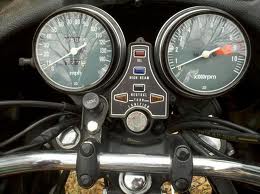
new: choke now a cable, up by gauges 77-78
new: no heatshields on new upper exhausts 77-78

new: no chrome covers on rear shocks 77-78

new: handlebar wiring now outside of the bars 77-78
new: oil tank cap no longer exposed 77-78
new: side cover shape 77-78
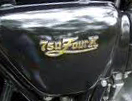
new: front fender has no forward hoop
new: 630 sprockets 15 front / rear 42 77-78
new: side-cover emblem'750FourK' 77 only

new: HONDA emblems on tank have gold letters 77-78

new: new-design black caliper 77-78

new: shorter rubber intake manifolds 77-78
new: grips 77-78

new: front turn signals now lower,
mounted below headlight 77-78

new: flat silver horn 77-78


new: seat 77 only
new: changes to brake pedal 1977-1978
©Honda750Expert.com
Honda Product Code: 405
1977 Frame # CB750- 27000009 -
1977 Engine # CB750E- 27000001 -
Note: additional minor variations, different part numbers, changes
and/or crossovers may have occurred within some shown or listed types.
1978 Honda 750 K8 36,000 made
May 1977 to May 1978

America colors:
Excel Black and Candy Alpha Red 77-78


new: contoured two-stage seat,
taller rear-half than prior year,
also has stitching on side near rear
78

new: were available at some dealers for
"$1699 out-the-door" in late 1977-- I bought one
new: side cover emblem and decal 78 only



©Honda750Expert.com
Honda Product Code: 405
1978 Frame # CB750- 28000001 -
1978 Engine # CB750E- 30000001 -
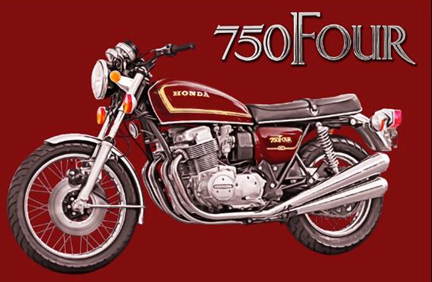
1978 K8 Alpha Red
Note: additional minor variations, different part numbers, changes
and/or crossovers may have occurred within some shown or listed types.
--NOTES--



All K models 1969 to 1978:
--had spoke wheels
--had points/condensor ignitions
--had single-disc front brakes
--had rear drum brakes
--had 4-into-4 exhaust systems
--had a single overhead cam (SOHC)
--had centerstands
--had both electric start and kickstart
--had 5-speeds
--had 19" front wheels
--had tubes inside the tires
--occasionally found parts 'cross-overs' from one
year to another, either new or pieced together
(some are known as 'transition models')
--were air-cooled
--each bike had about 2500 parts
This public page is valuable but is
NOT all-inclusive;
there are minor
variations and secrets NOT listed here.
Honda750Expert.com
Non-'K' models:

1975 Honda 750 F (F0) Super Sport
15,000 made
January 1975 to February 1975
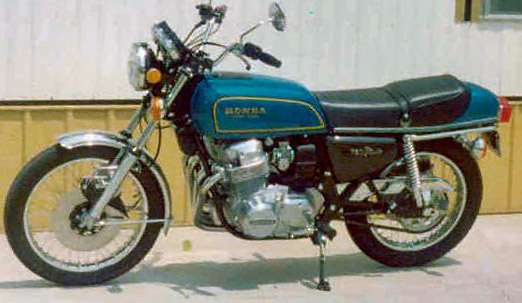
America colors:
Flake Sunrise Orange R2CF
and Candy Sapphire Blue PB3CC


new: 4-into-1 exhaust 75-78
new: side covers are dull black 75-76
new: front fender has no forward hoop 75-78
new: exposed fork tubes 75-78
new: electrical connections in a
black box near horn 75-76
new: sprockets 17/48 75-76
new: 102-link 530 chain 75-76
new: gas cap hidden under a lid 75-78
new: chrome chain guard 75-78
©Honda750Expert.com
Honda Product Code: 392
1975 Frame # CB750F- 1000002 -
1975 Engine # CB750FE- 2500004 -
Note: additional minor variations, different part numbers, changes
and/or crossovers may have occurred within some shown or listed types.
US 1976 Honda 750 F1 Super Sport
44,000 made
March 1975 to November 1976

America colors:
Sulfur Yellow Y34 and
Candy Antares Red R6CS
©Honda750Expert.com
Honda Product Code: 392
1976 Frame # CB750F- 2000003 -
1976 Engine # CB750FE- 2515094 -
Note: additional minor variations, different part numbers, changes
and/or crossovers may have occurred within some shown or listed types.
1977 Honda 750 F2 Super Sport
25,000 made
November 1976 to May 1977
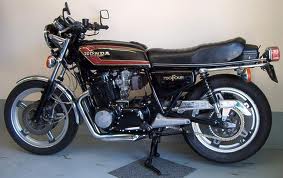
America colors:
Black NH1 and Candy Presto Red R8CS


new: ComStar wheels 77-78

new: dual front disc brakes 77-78
new: black engine 77-78
new: fork legs are black 77-78
new: emblem on side covers
new: stiffer clutch springs 77-78
new: dual horns 77-78
new: choke now a cable, up by gauges 77-78
new: calipers now behind forks 77-78
new: rear disc brake 77-78
new: accelerator pump on carb set 77-78
new: electrical connections in headlight shell 77-78
new: sprockets 15/43 77-78
new: 88-link 630 chain 77-78
©Honda750Expert.com
Honda Product Code: 410
1977 Frame # CB750F- 2100011 -
1977 Engine # CB750FE- 2600004 -
Note: additional minor variations, different part numbers, changes
and/or crossovers may have occurred within some shown or listed types.
1978 Honda 750 F3 Super Sport
18,000 made
May 1977 to May 1978

America colors:
Black NH 1 and Candy Presto Red R8CS


new: emblem on side covers
©Honda750Expert.com
Honda Product Code: 410
1978 Frame # CB750F- 2200001 -
1978 Engine # CB750FE- 3100001 -
Note: additional minor variations, different part numbers, changes
and/or crossovers may have occurred within some shown or listed types.


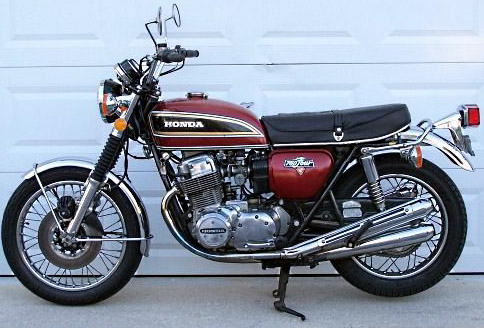
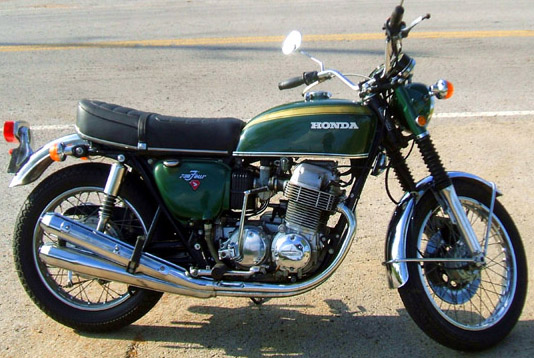
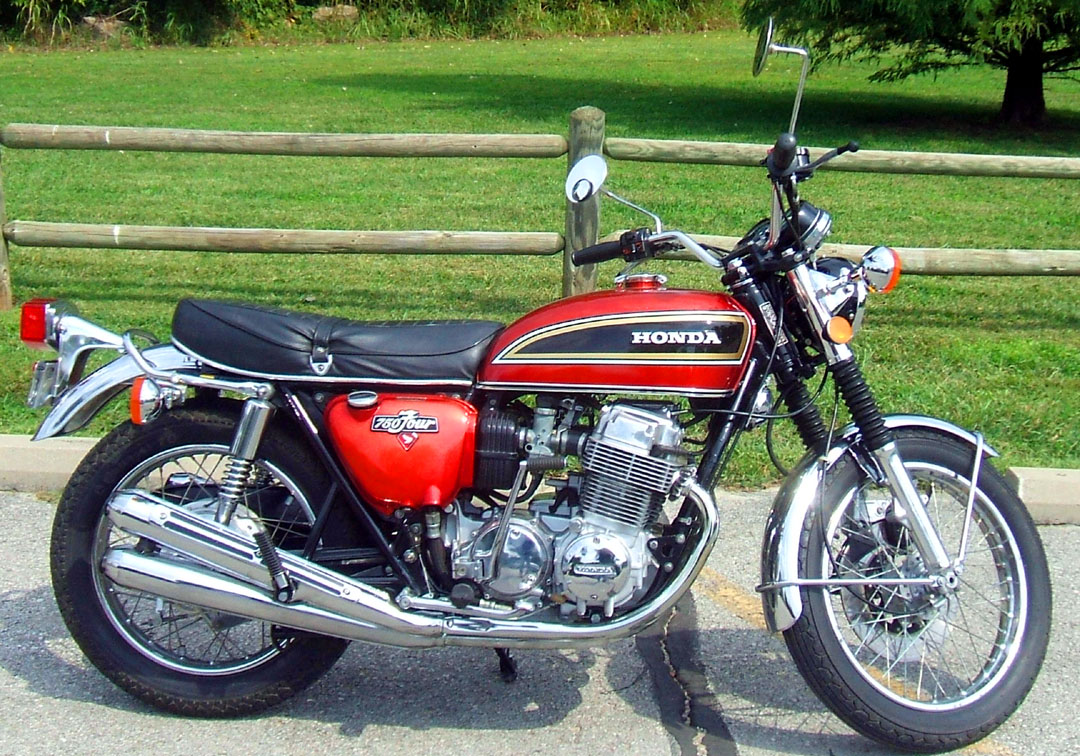
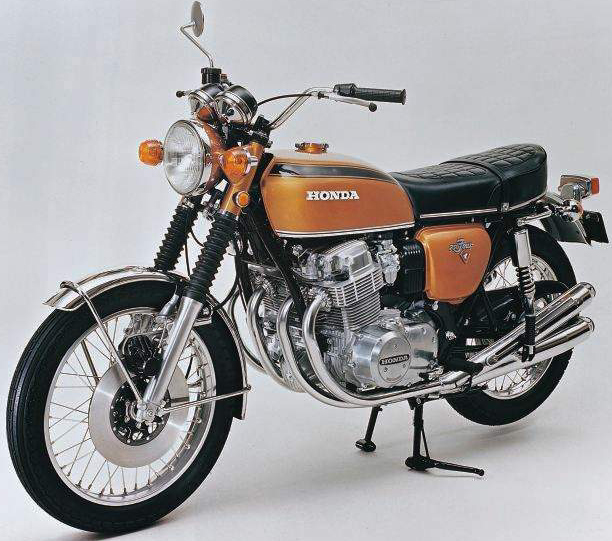

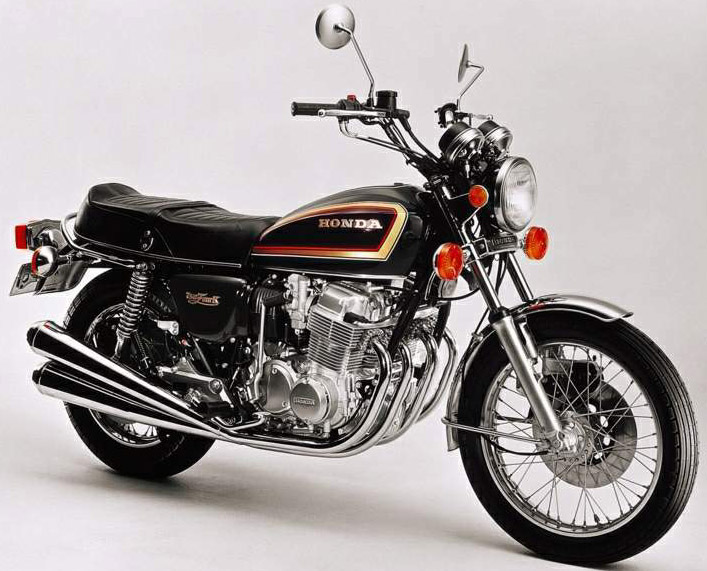
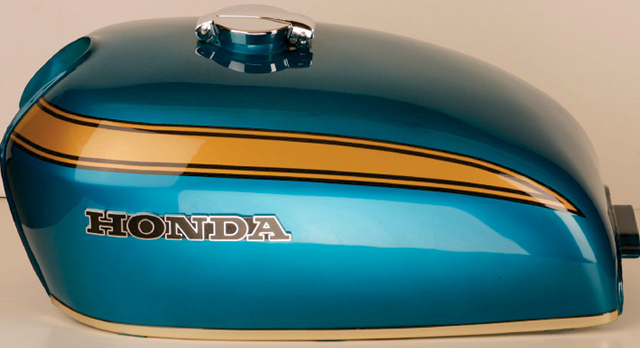
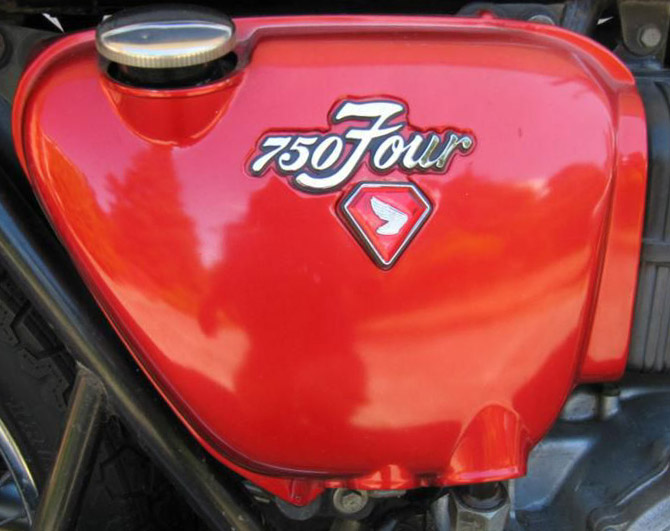
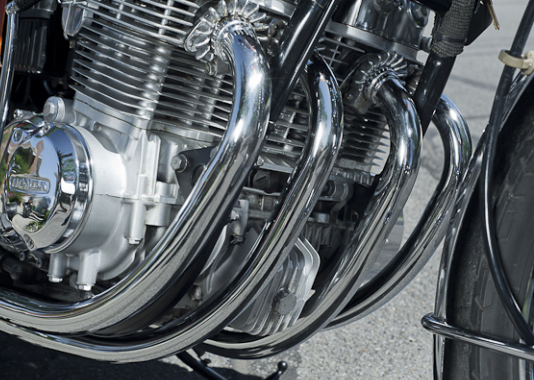
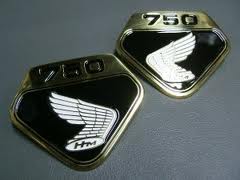



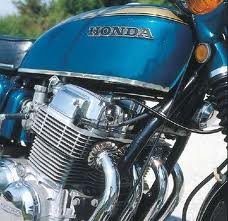

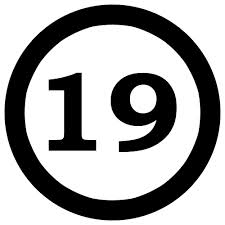

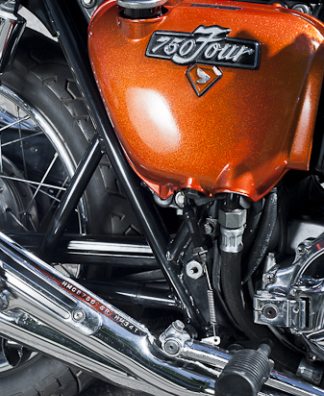


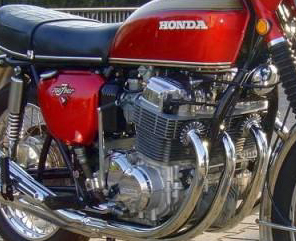





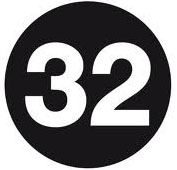






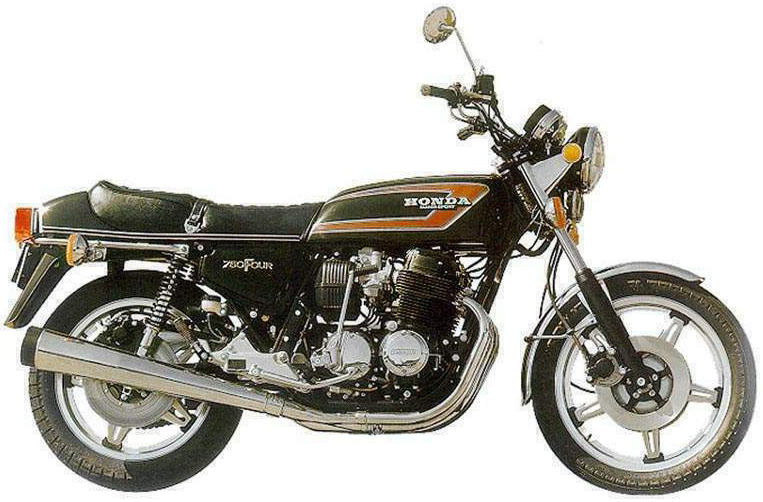






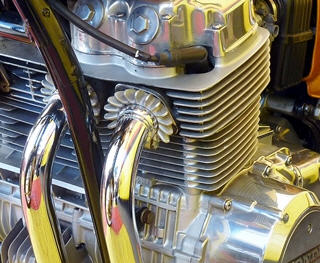


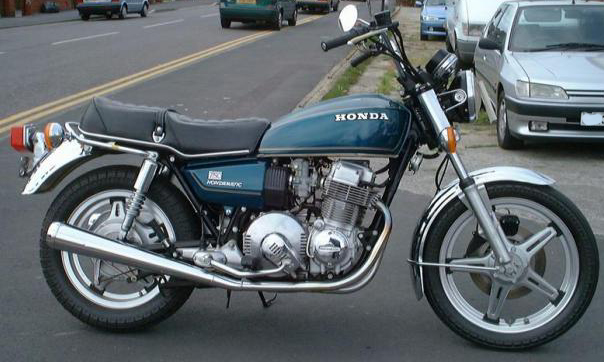
 Links
Links


